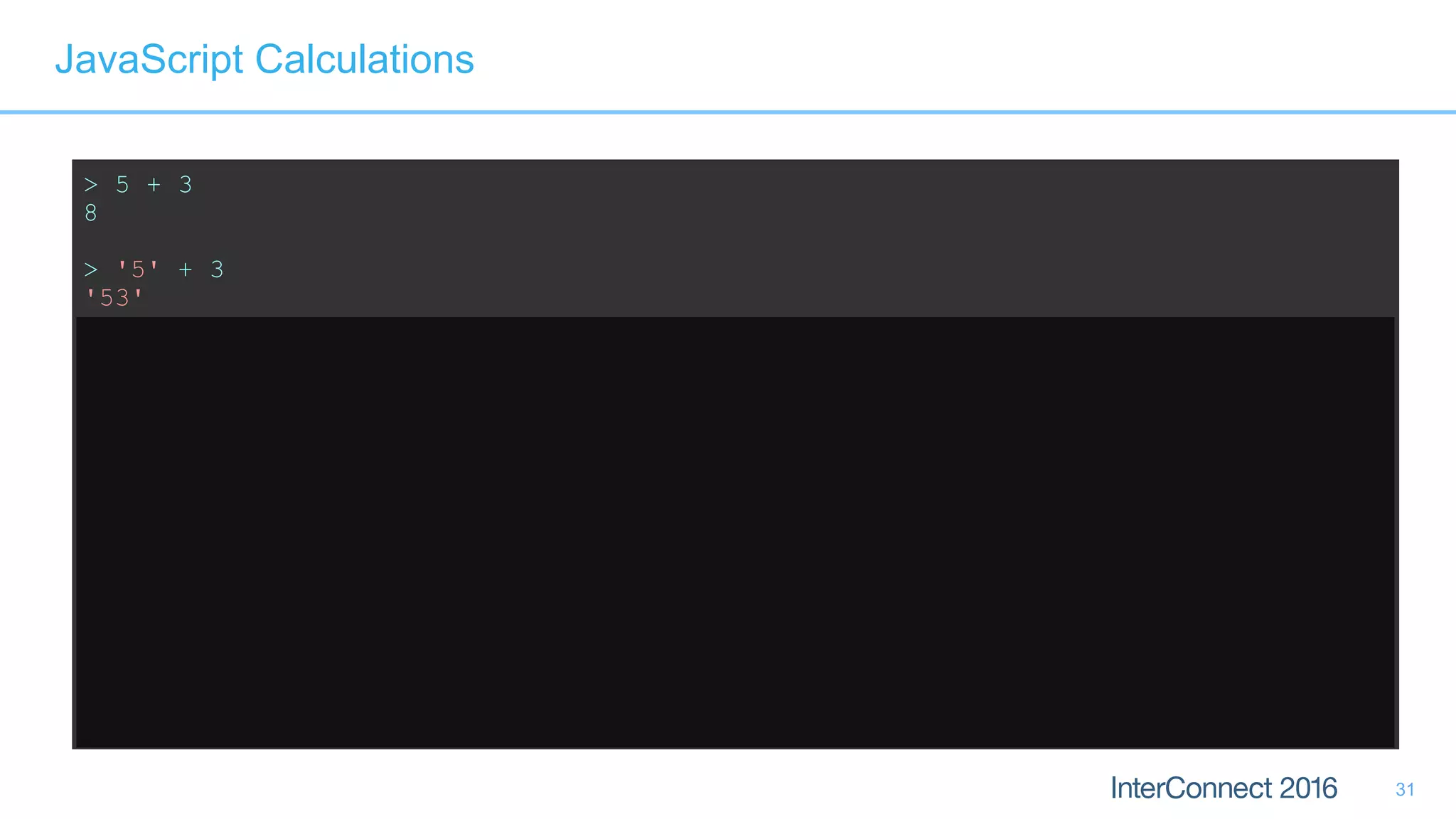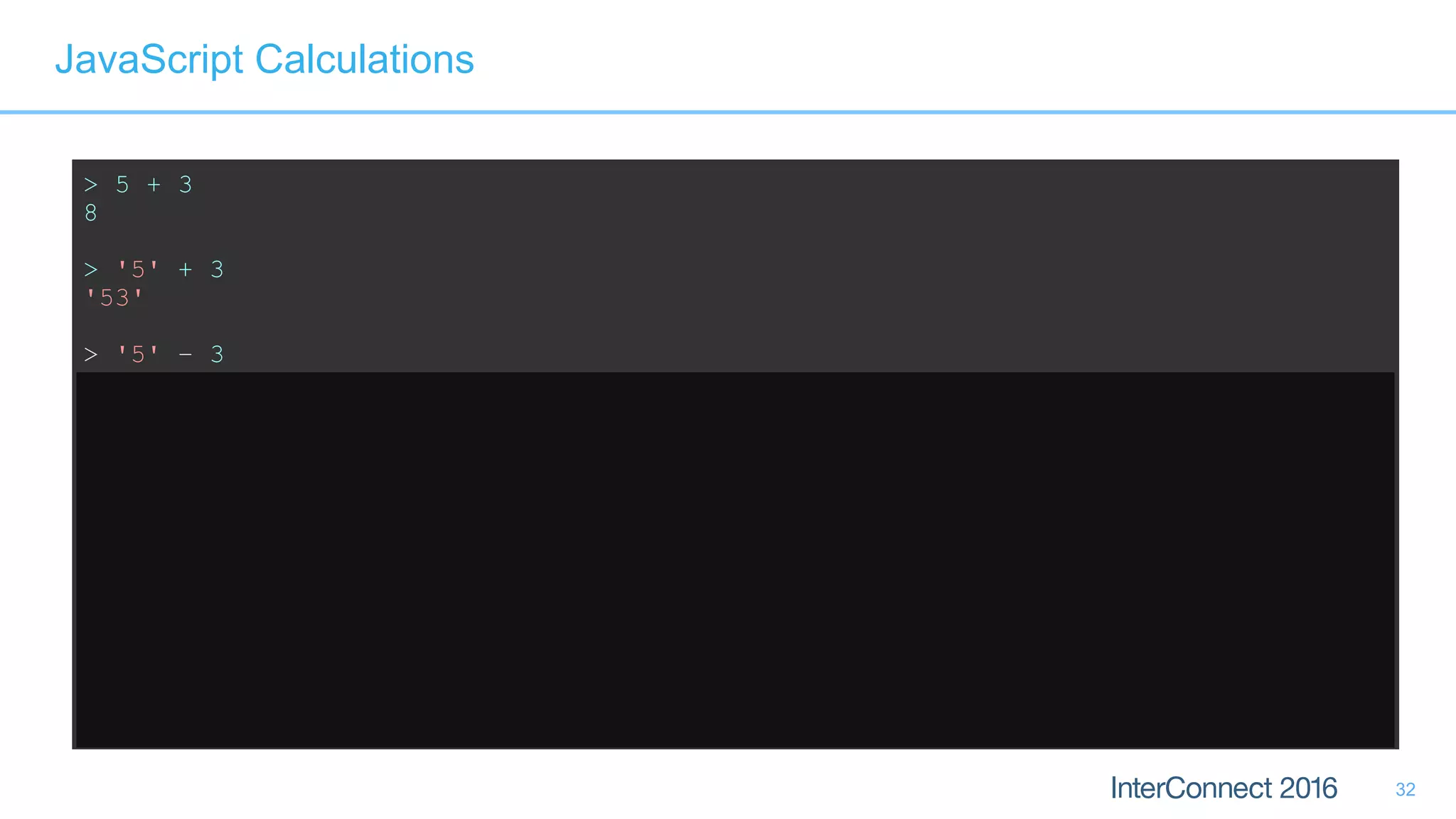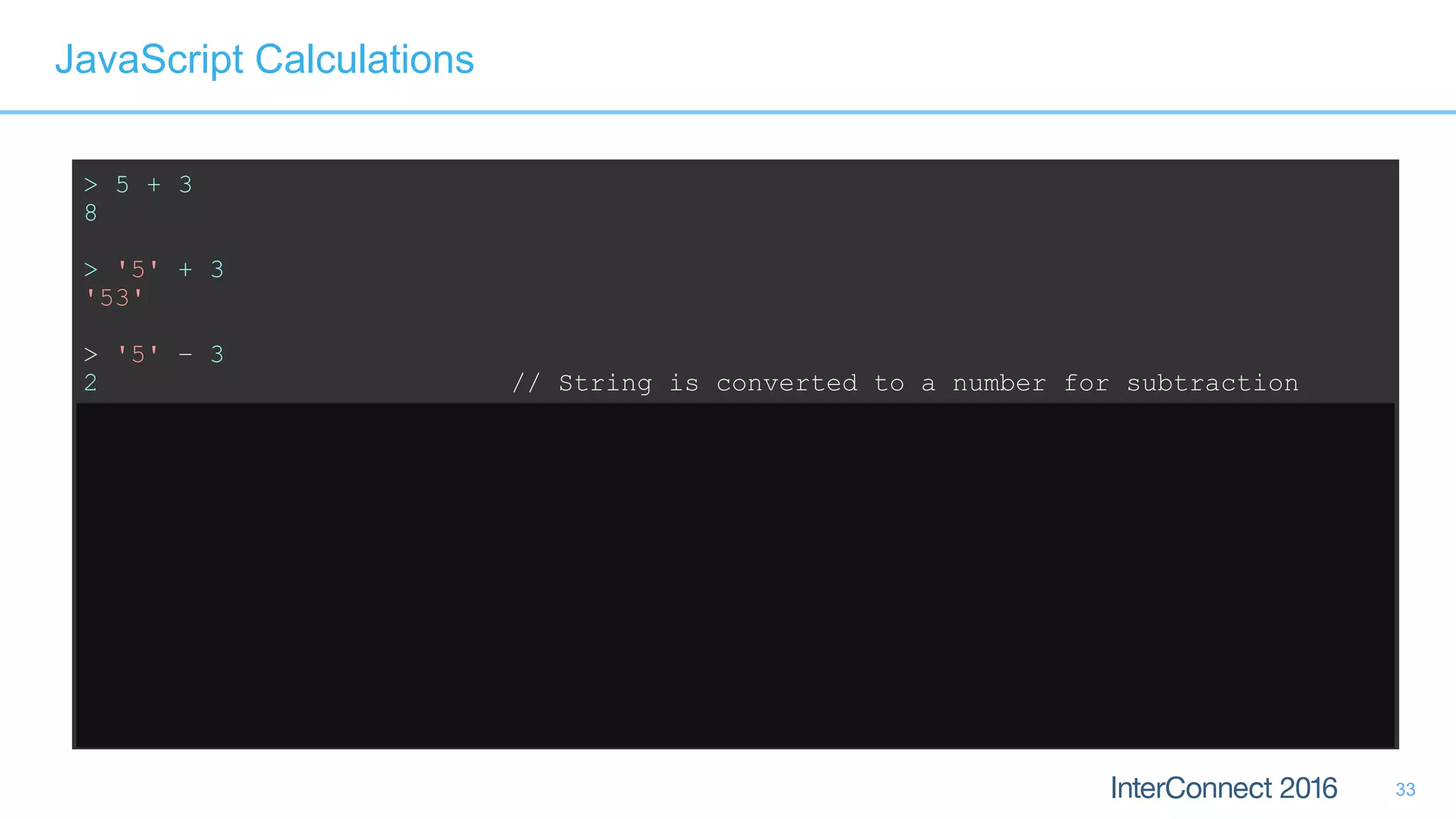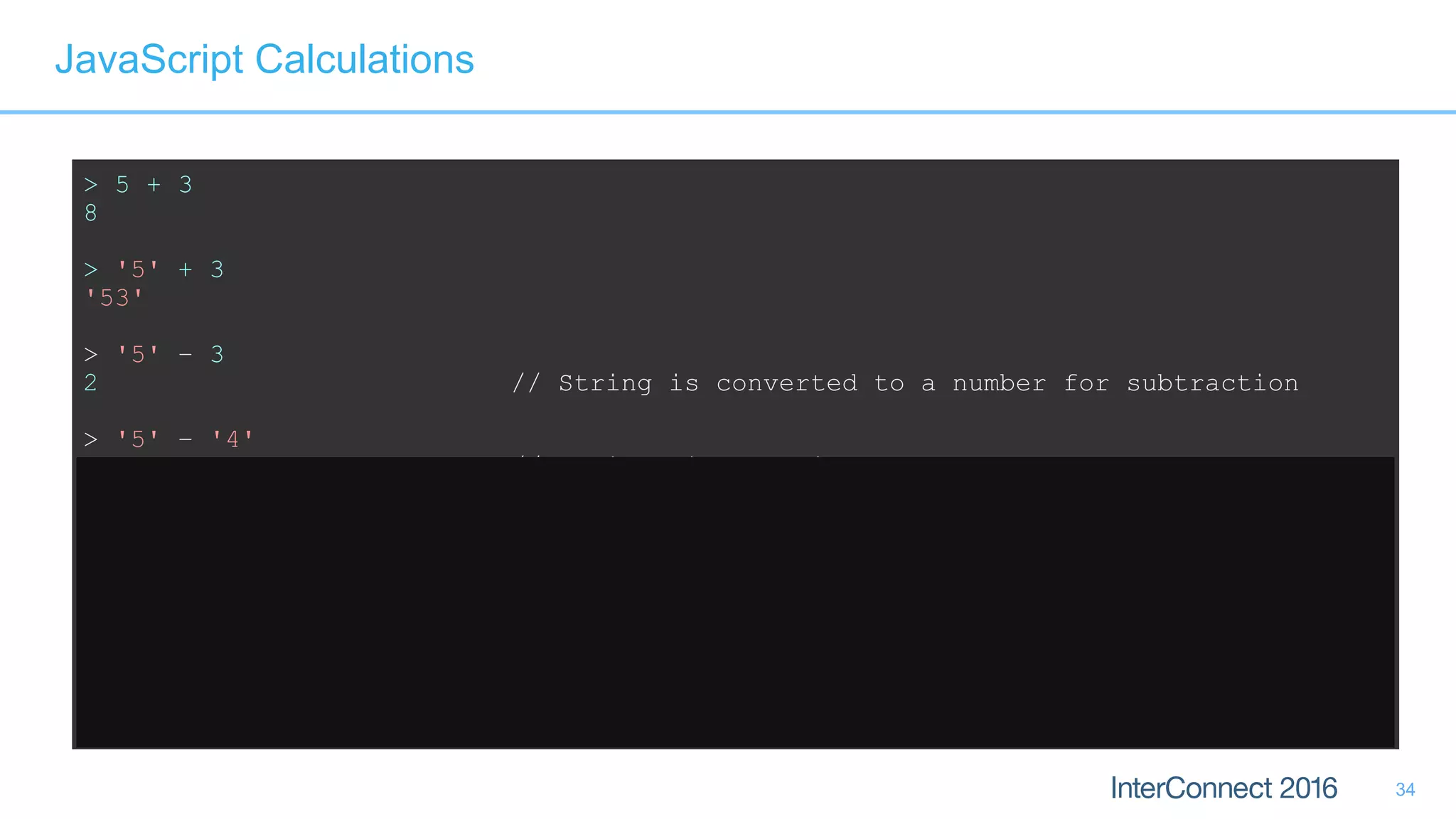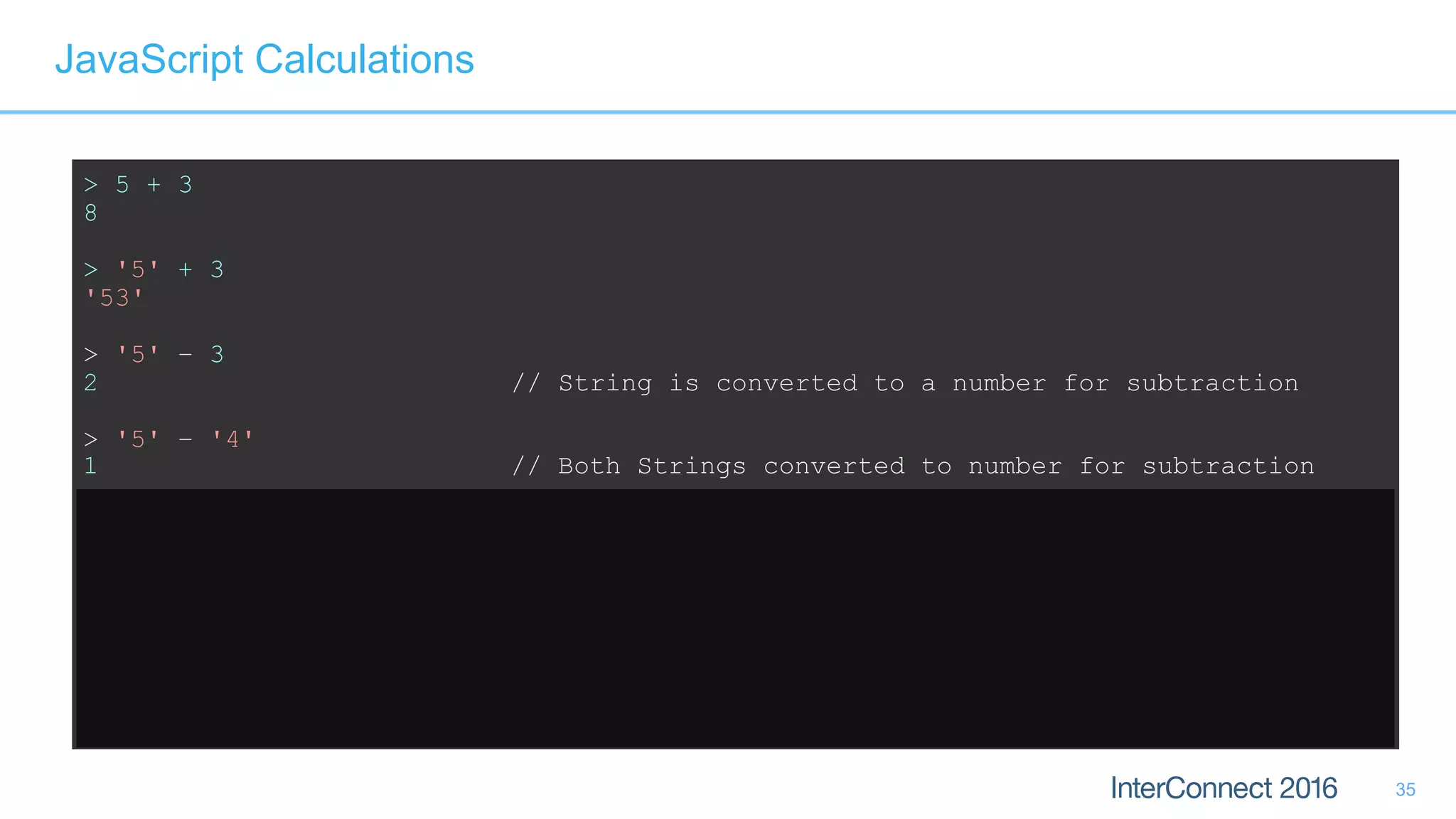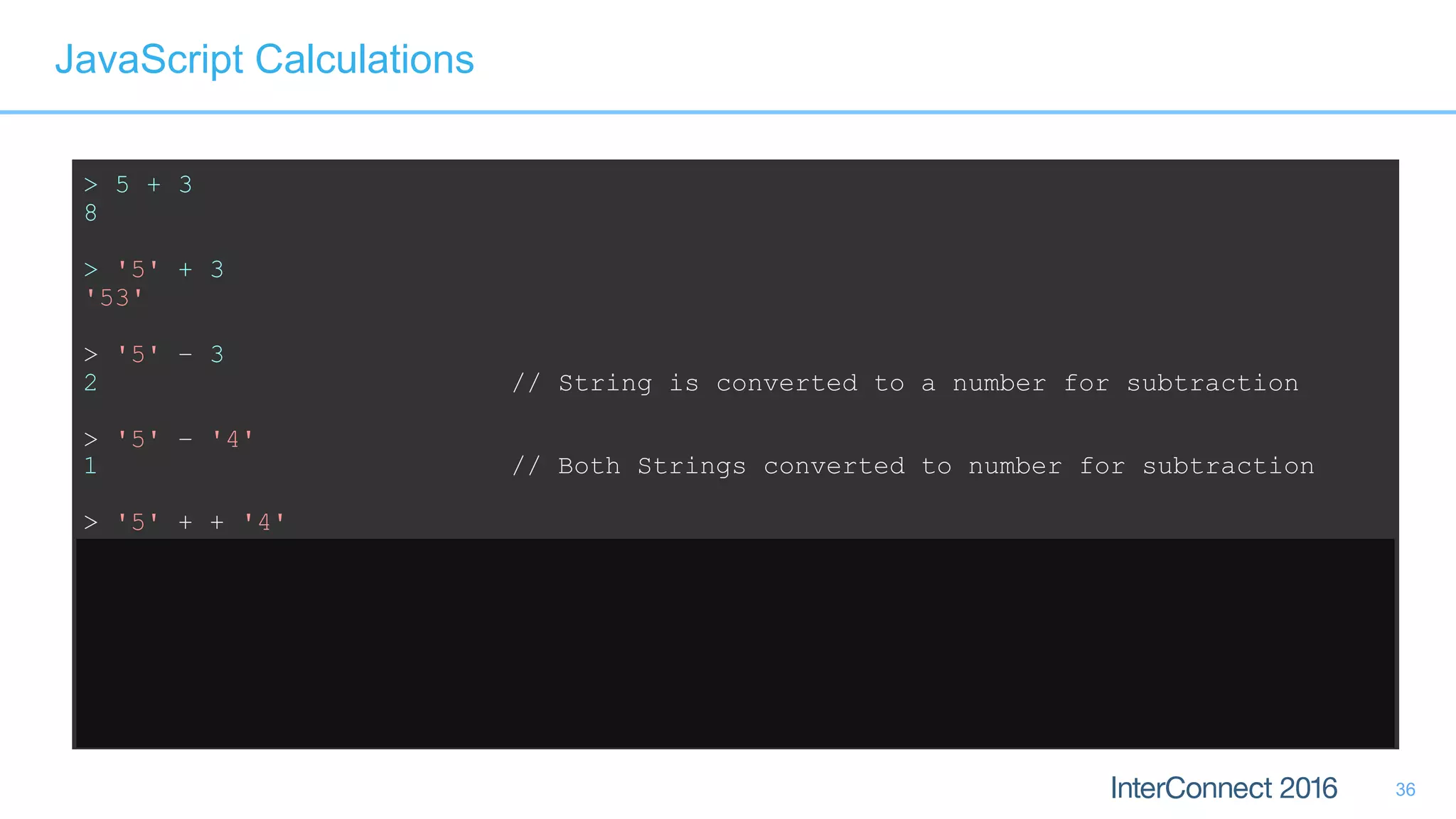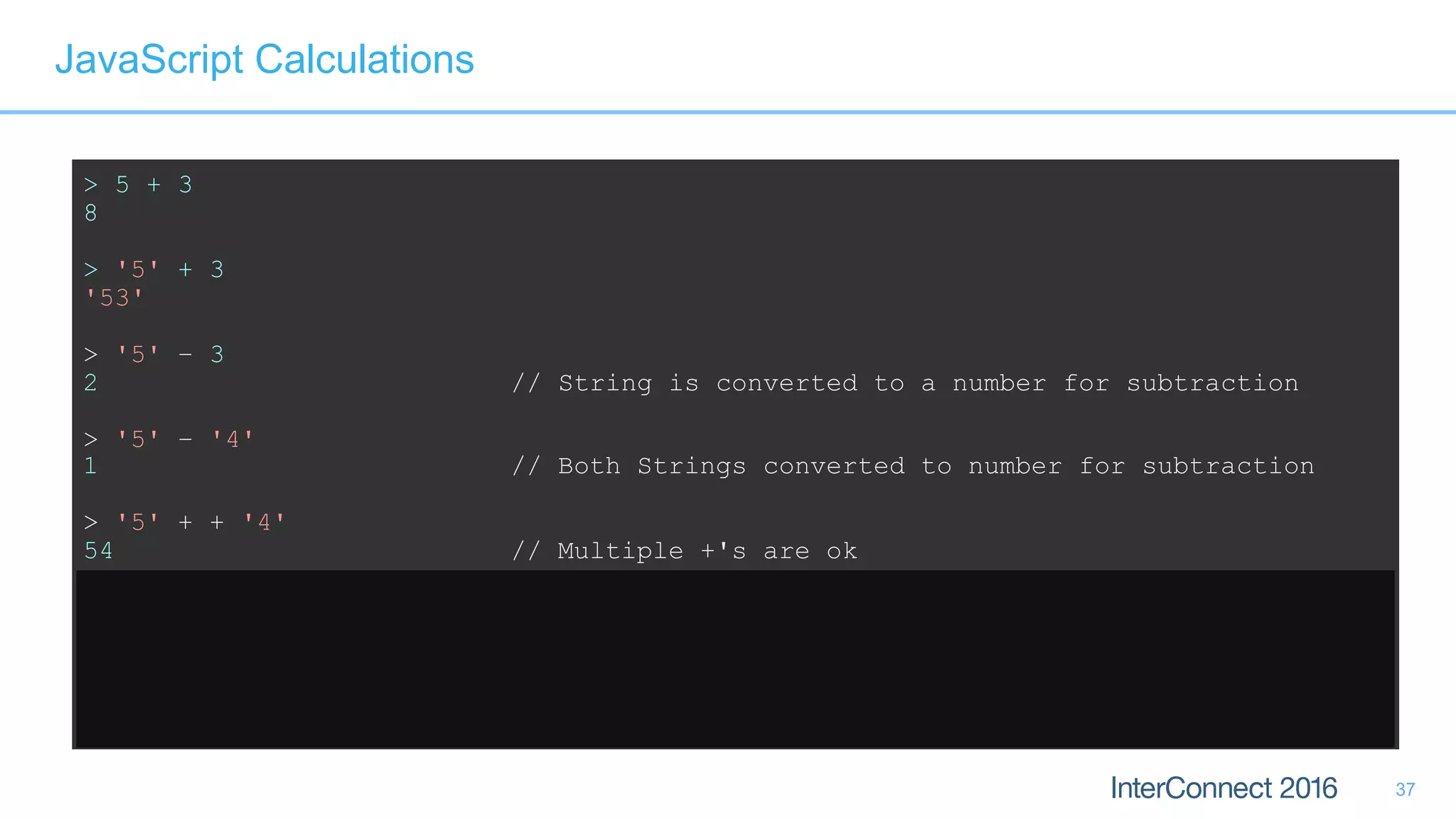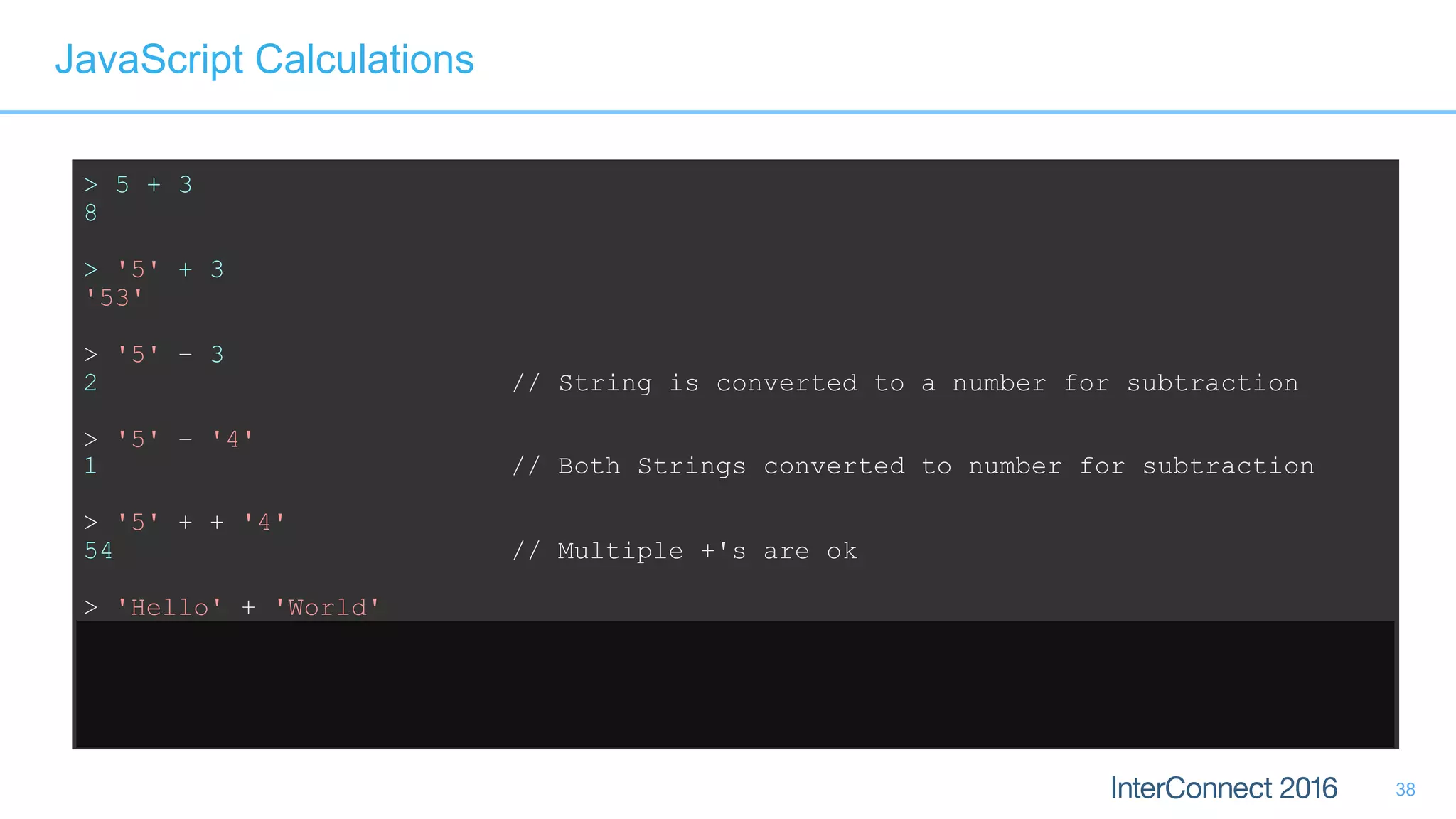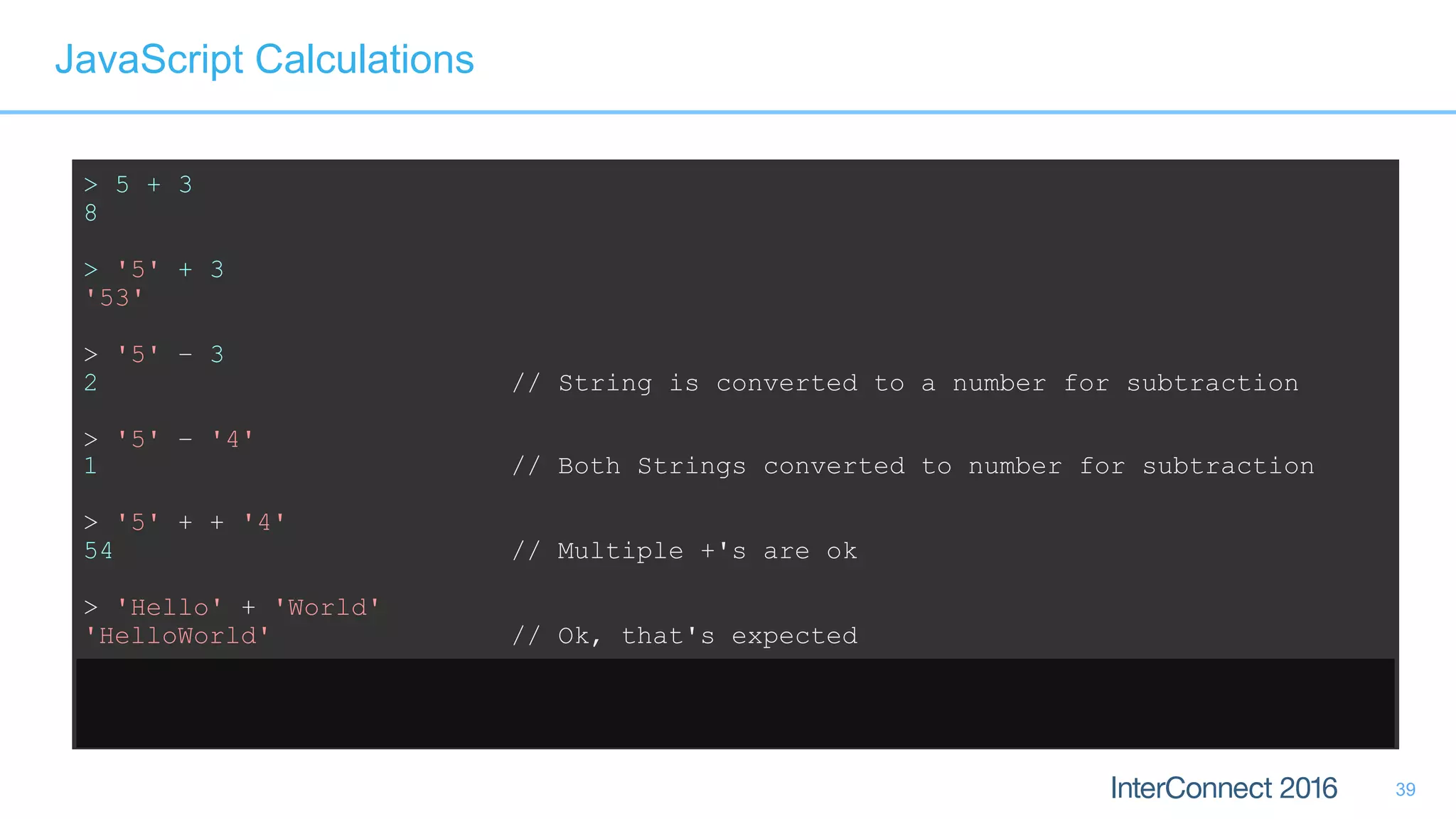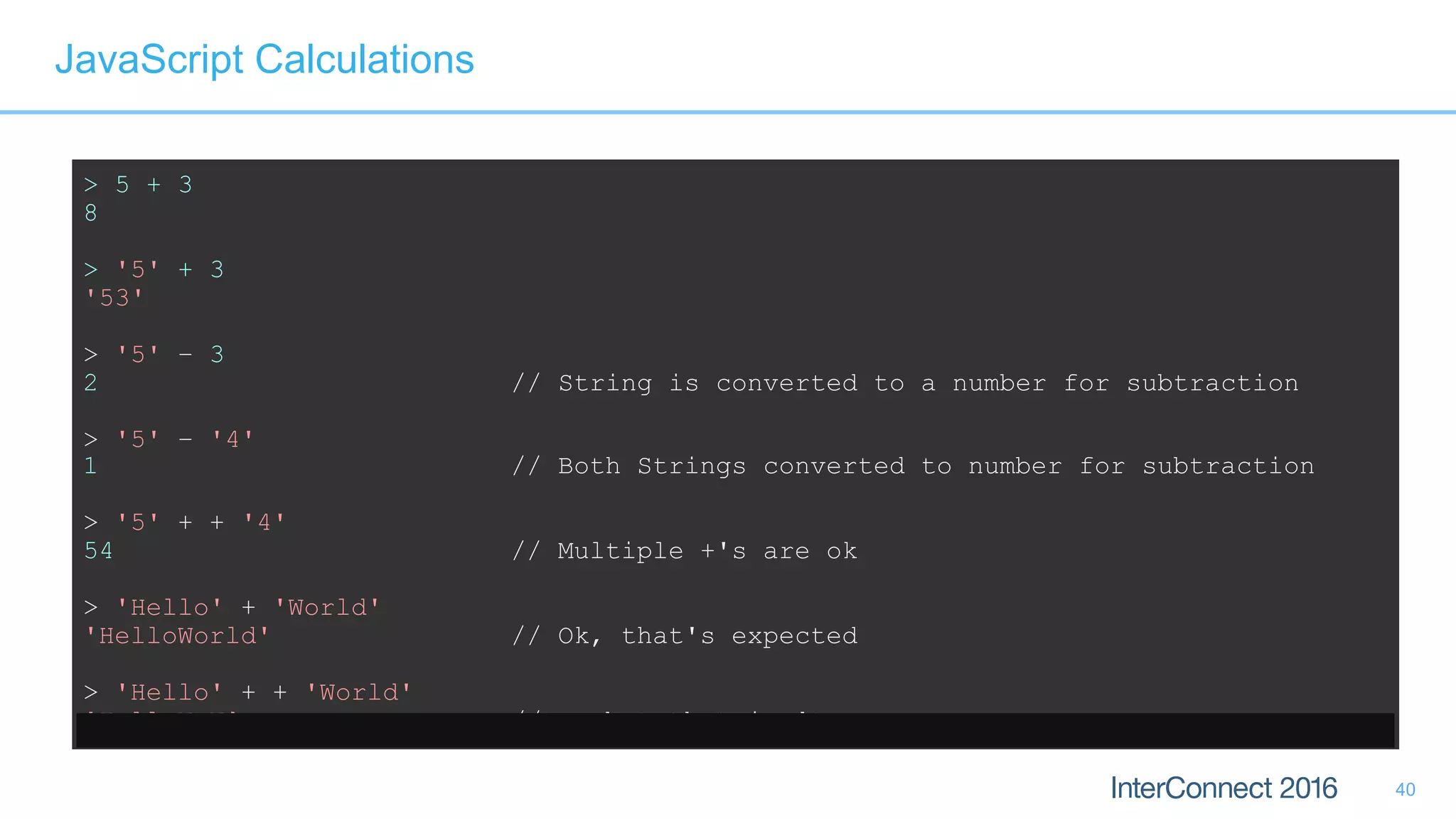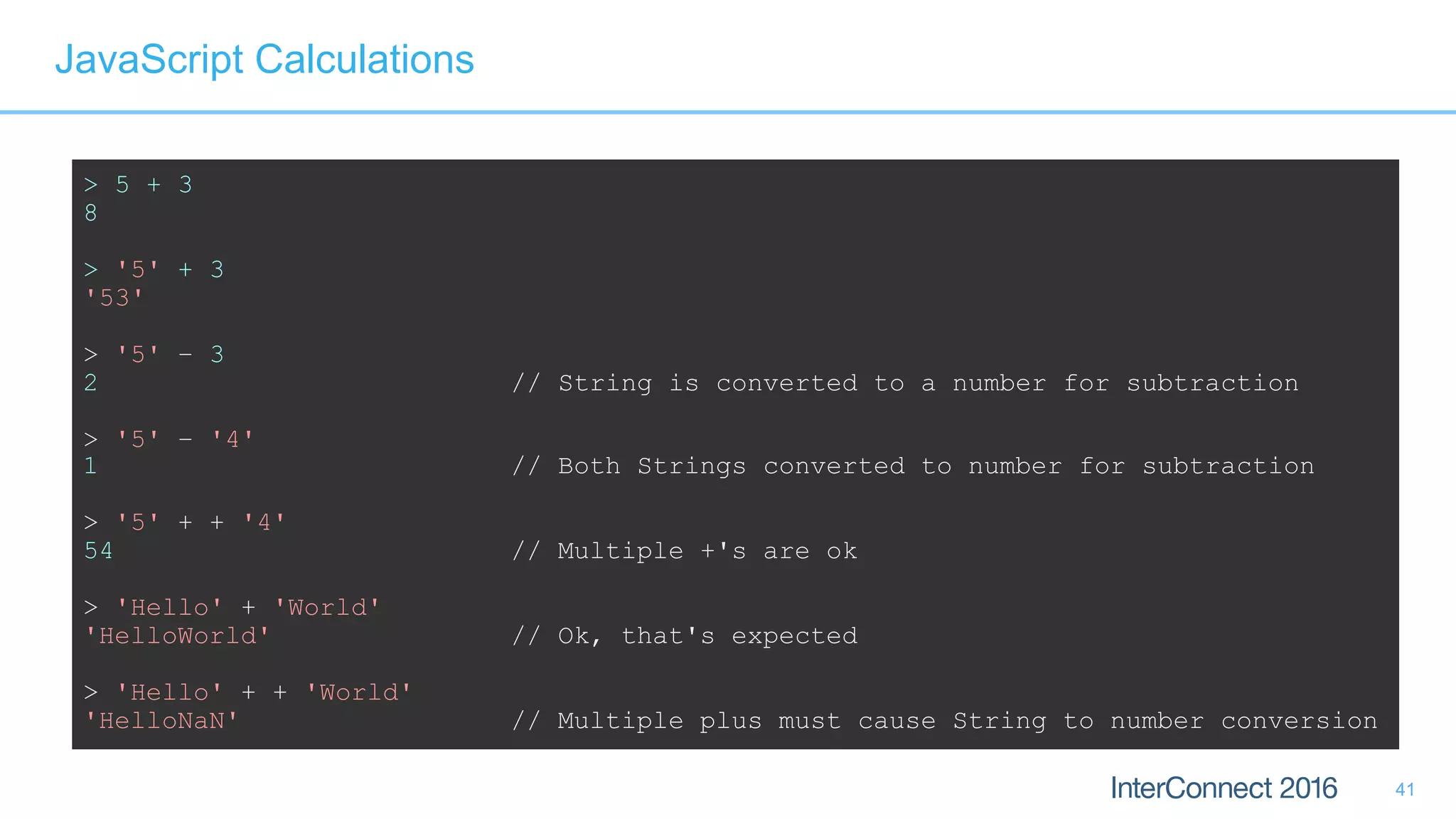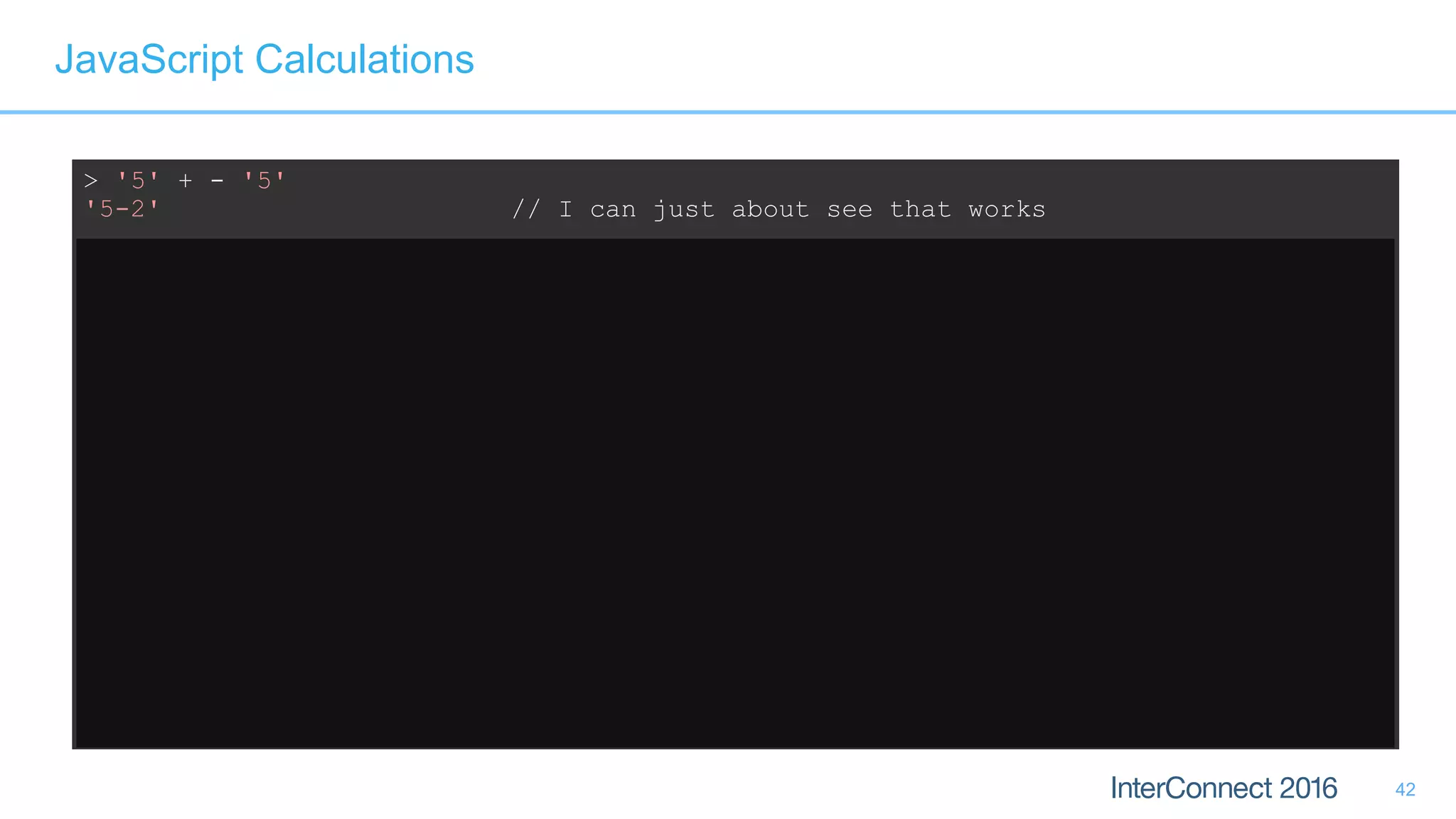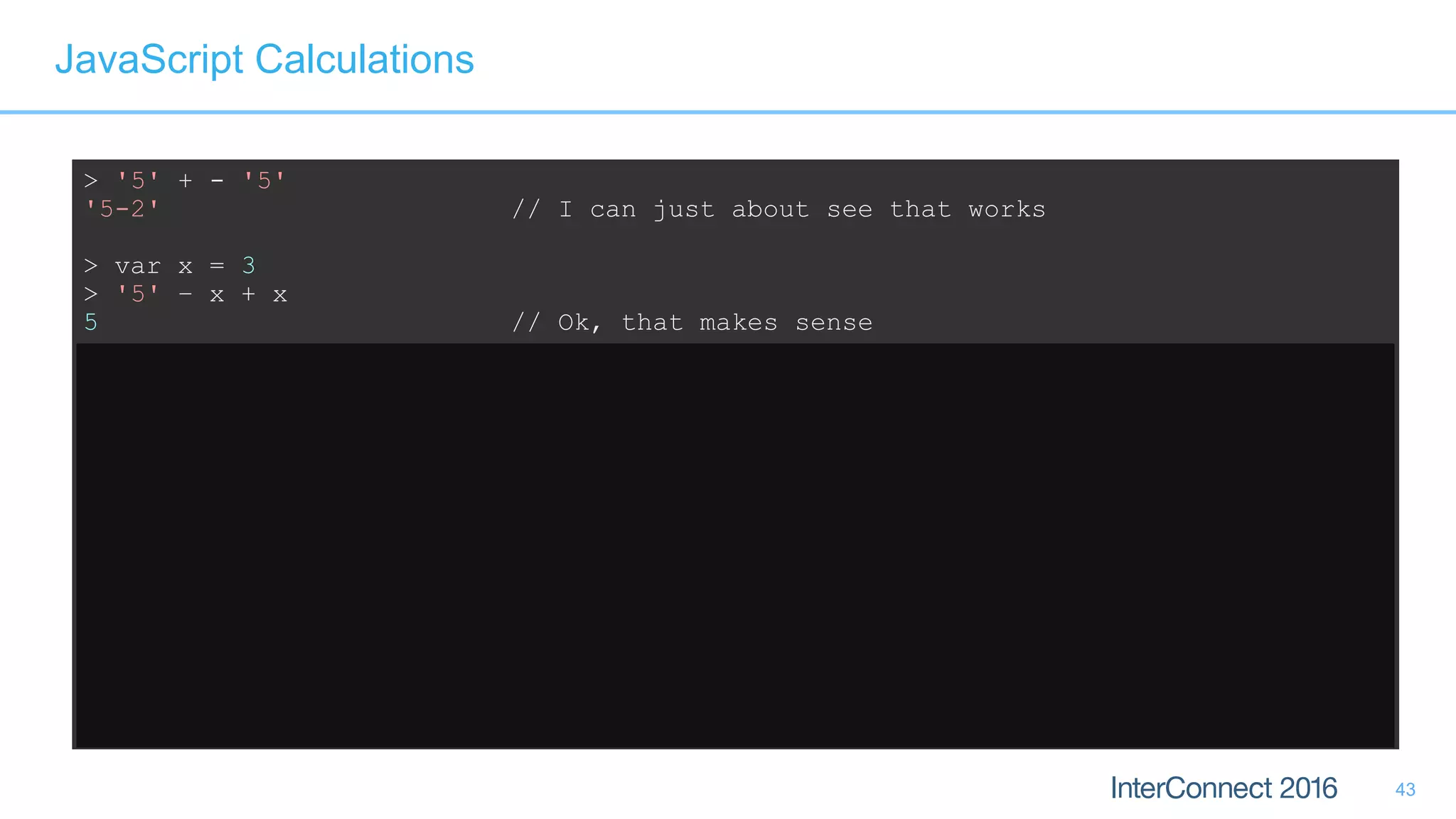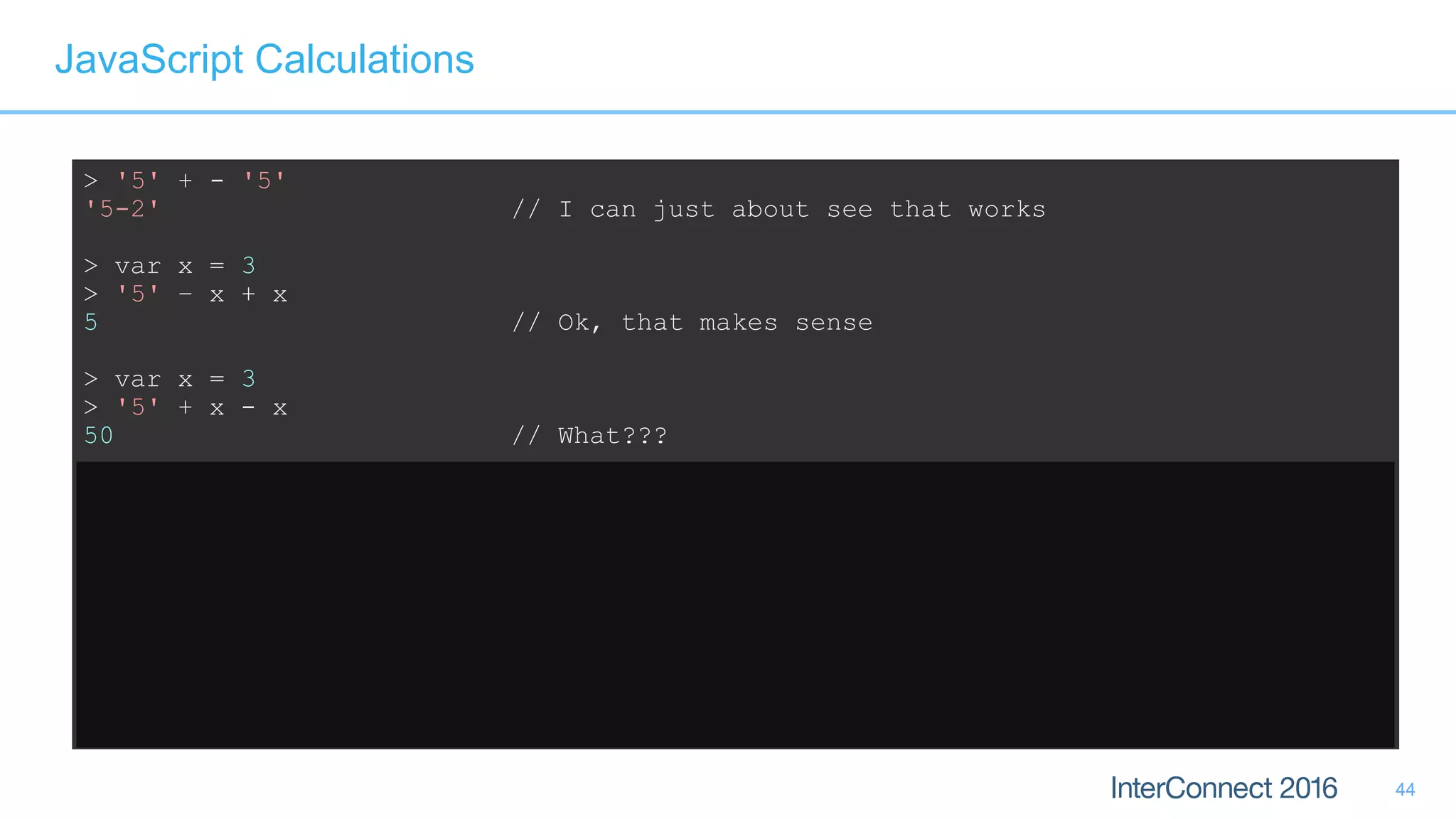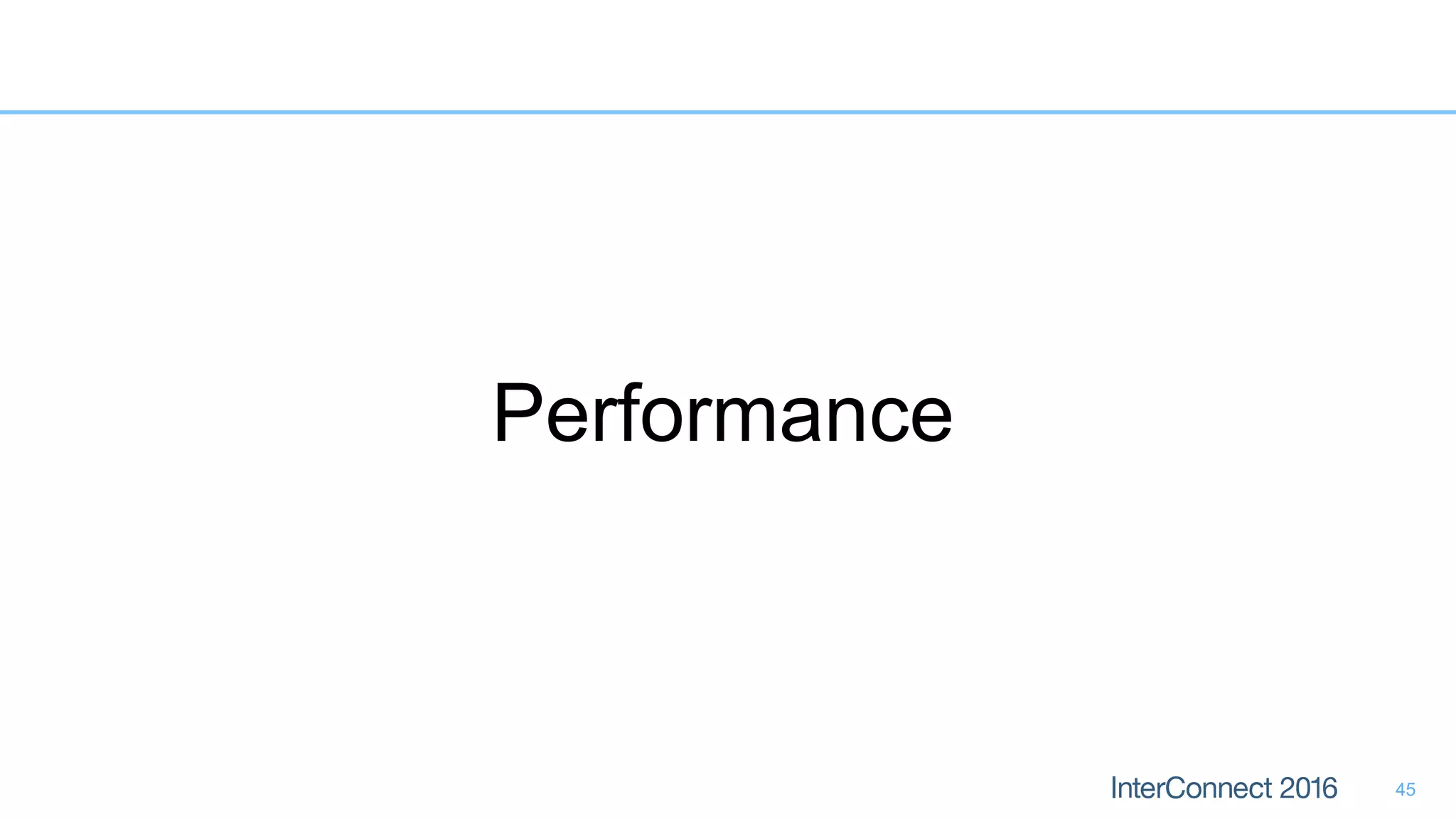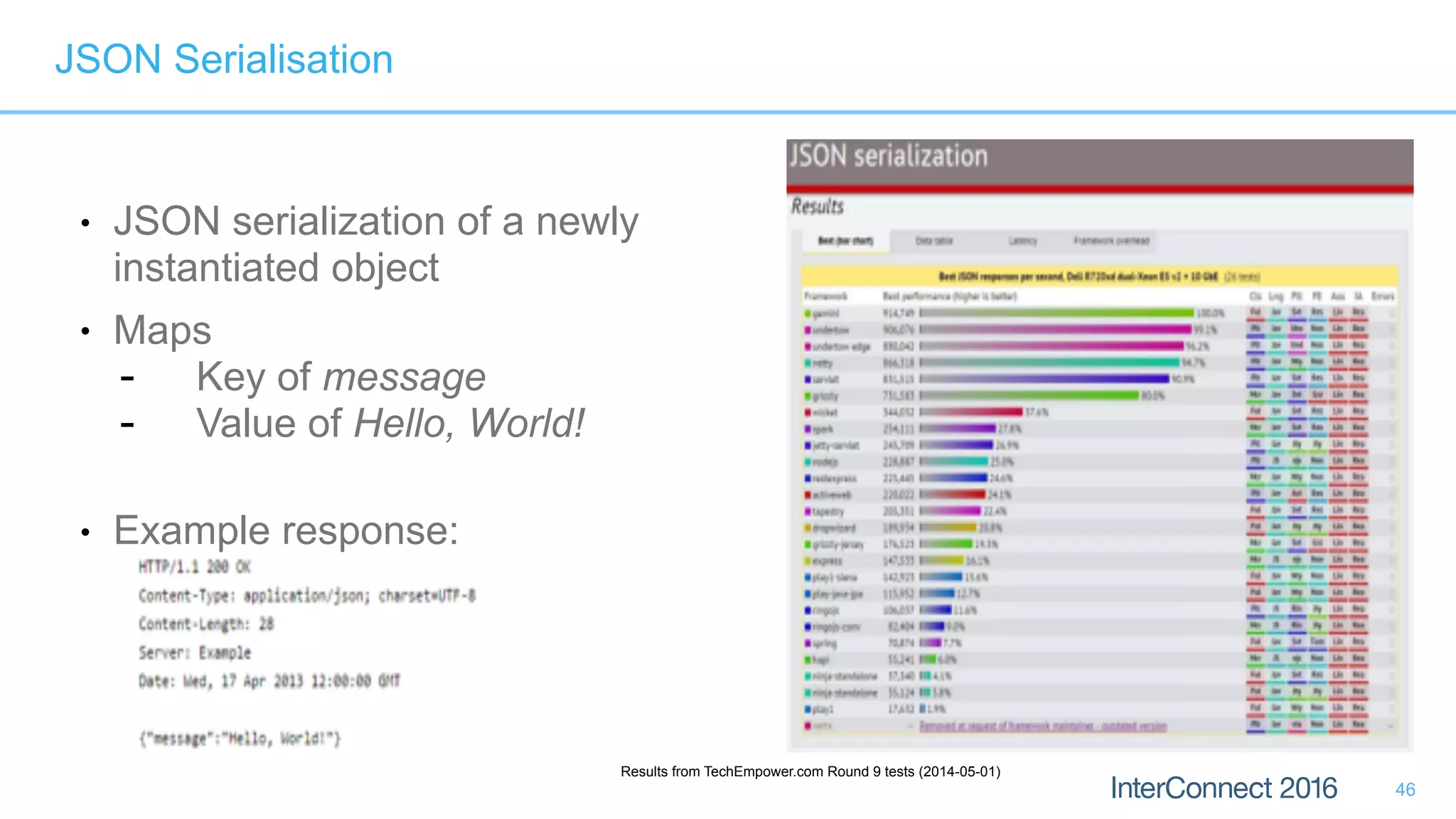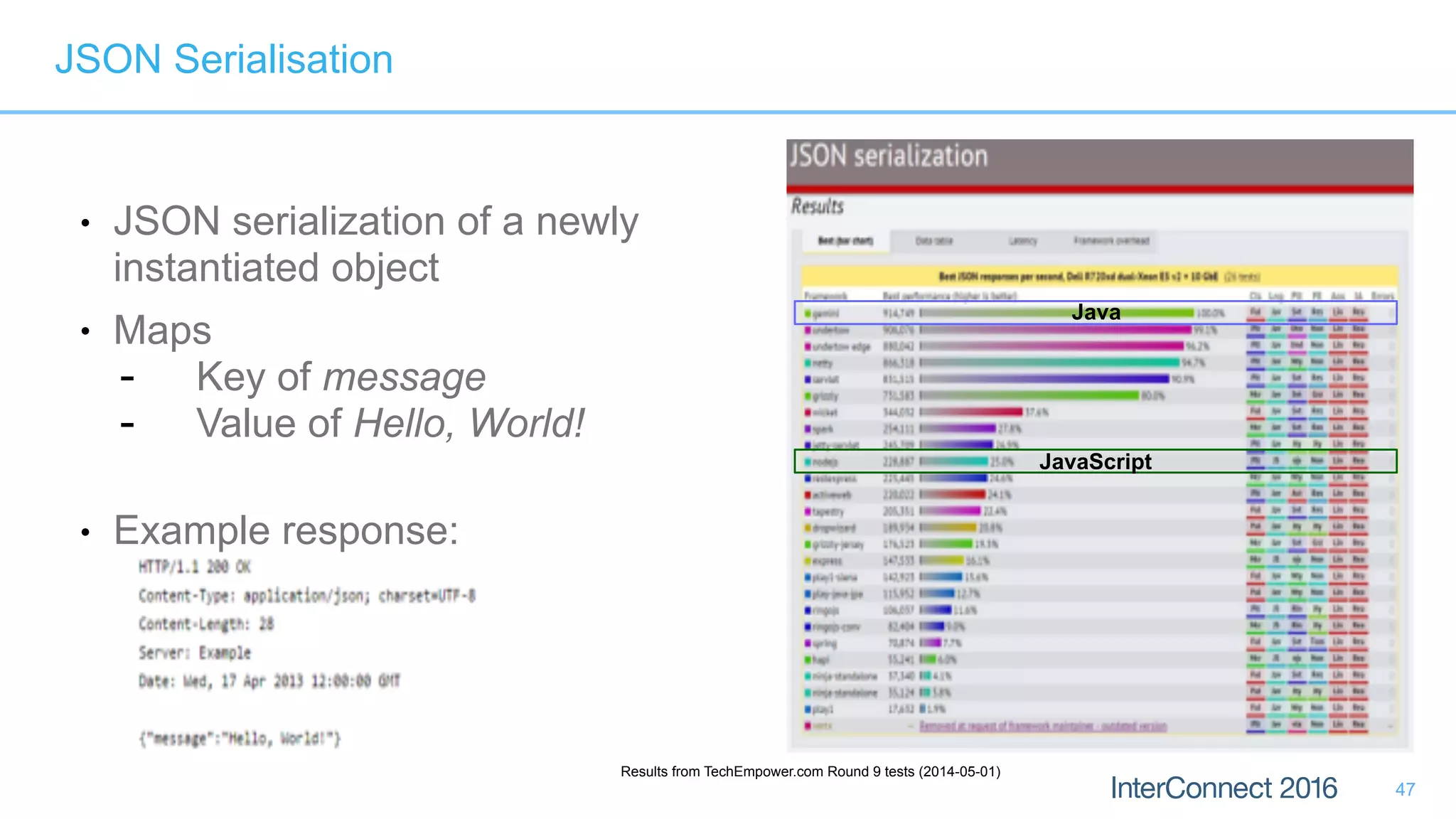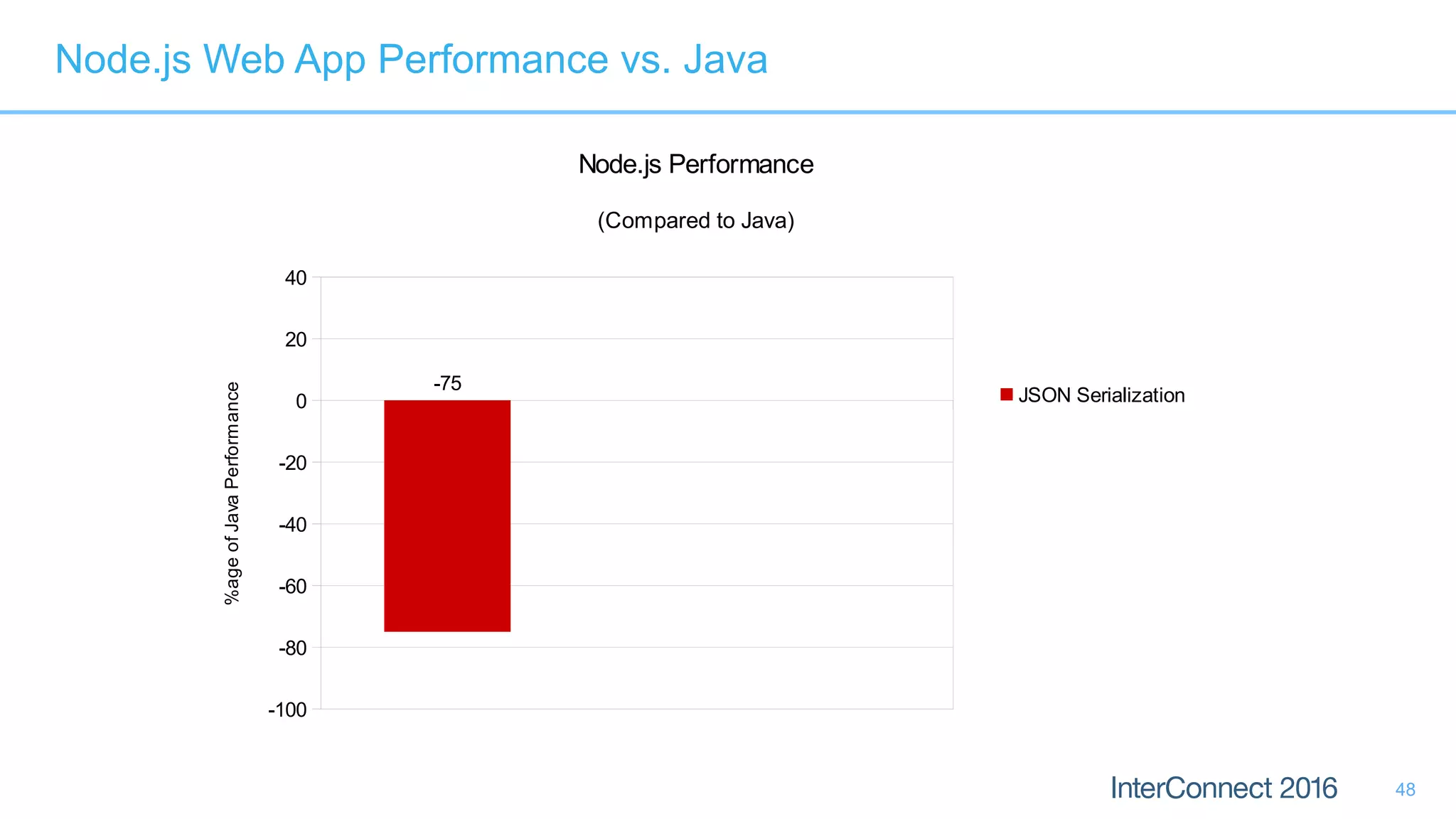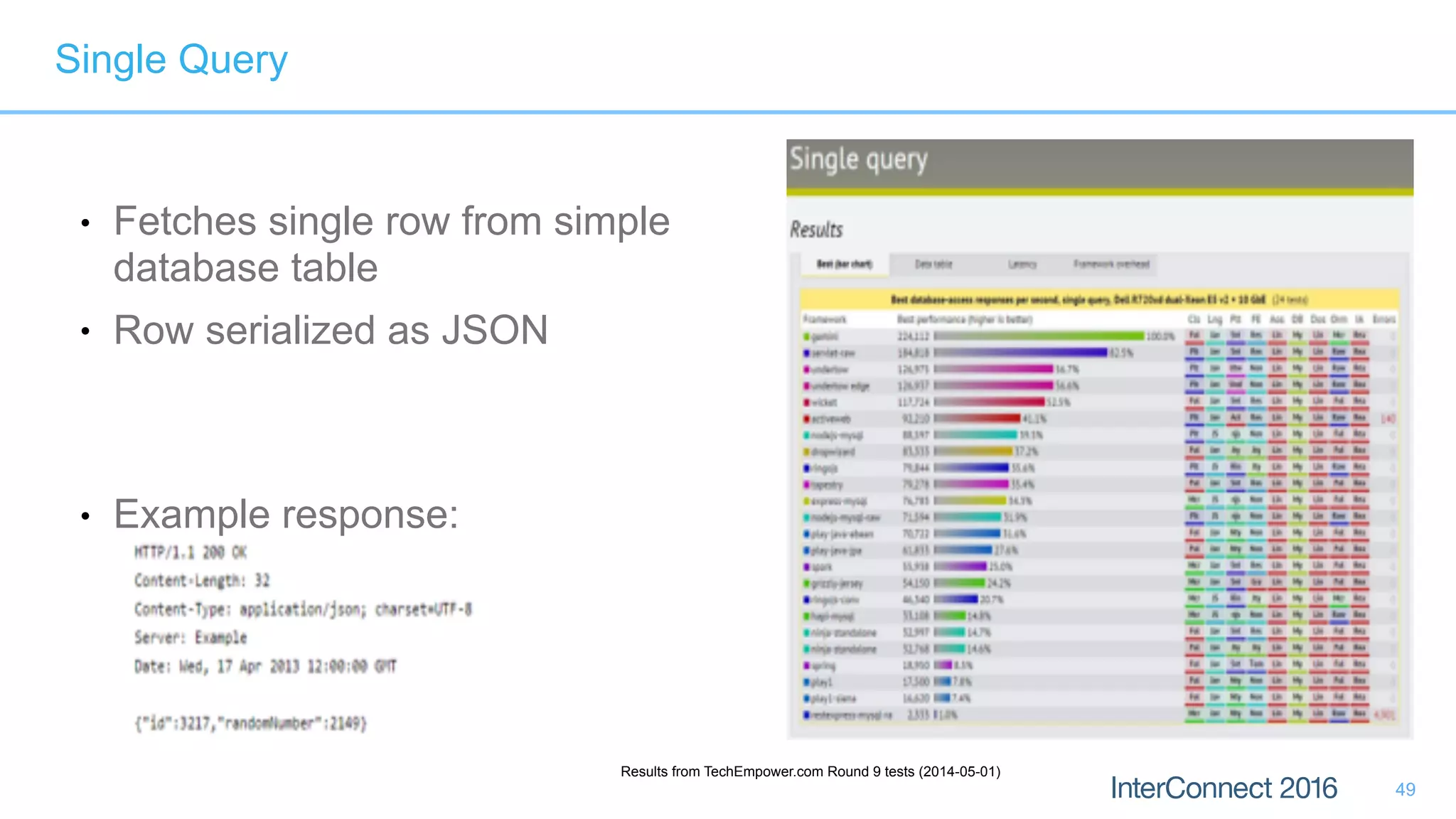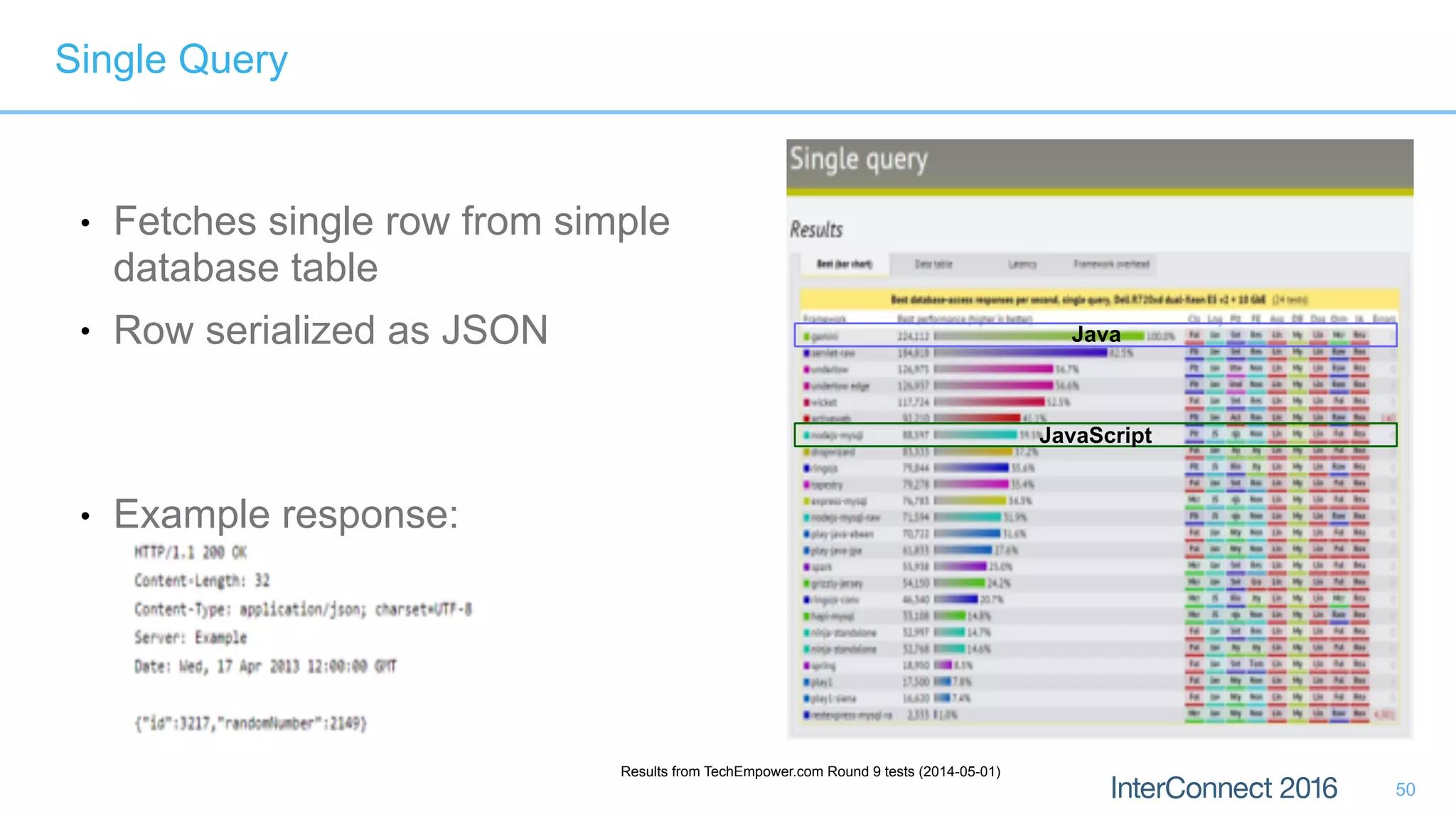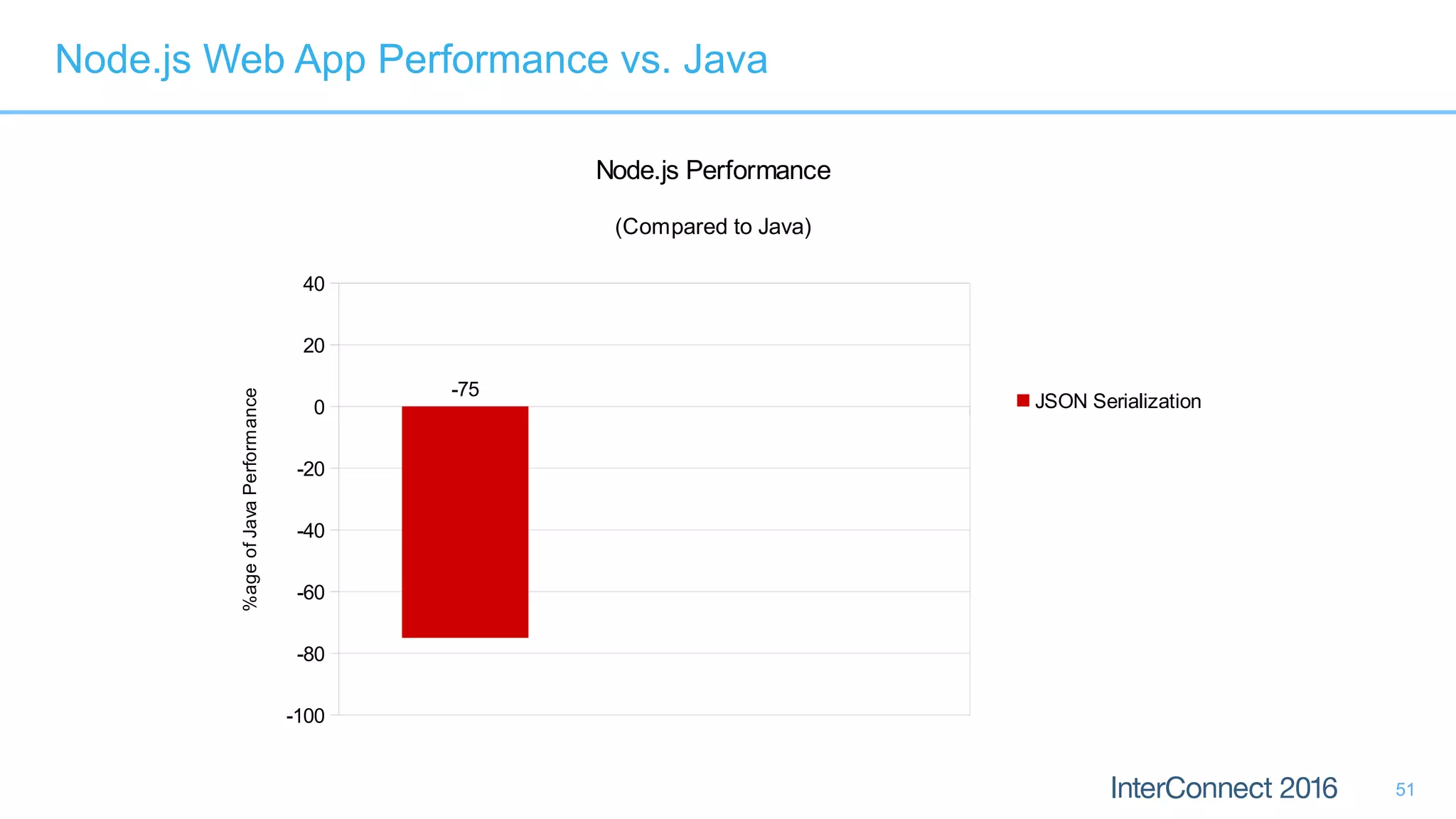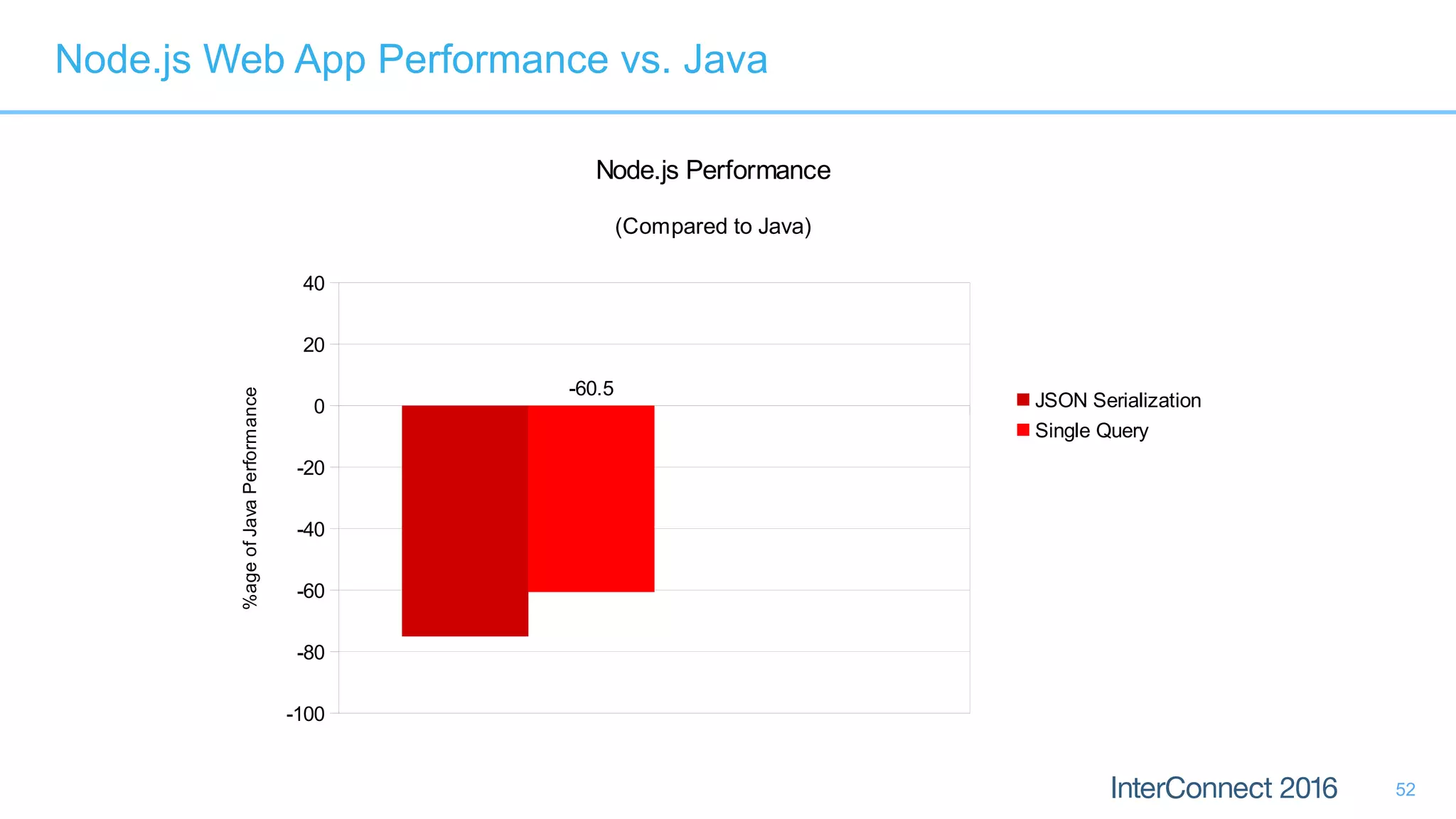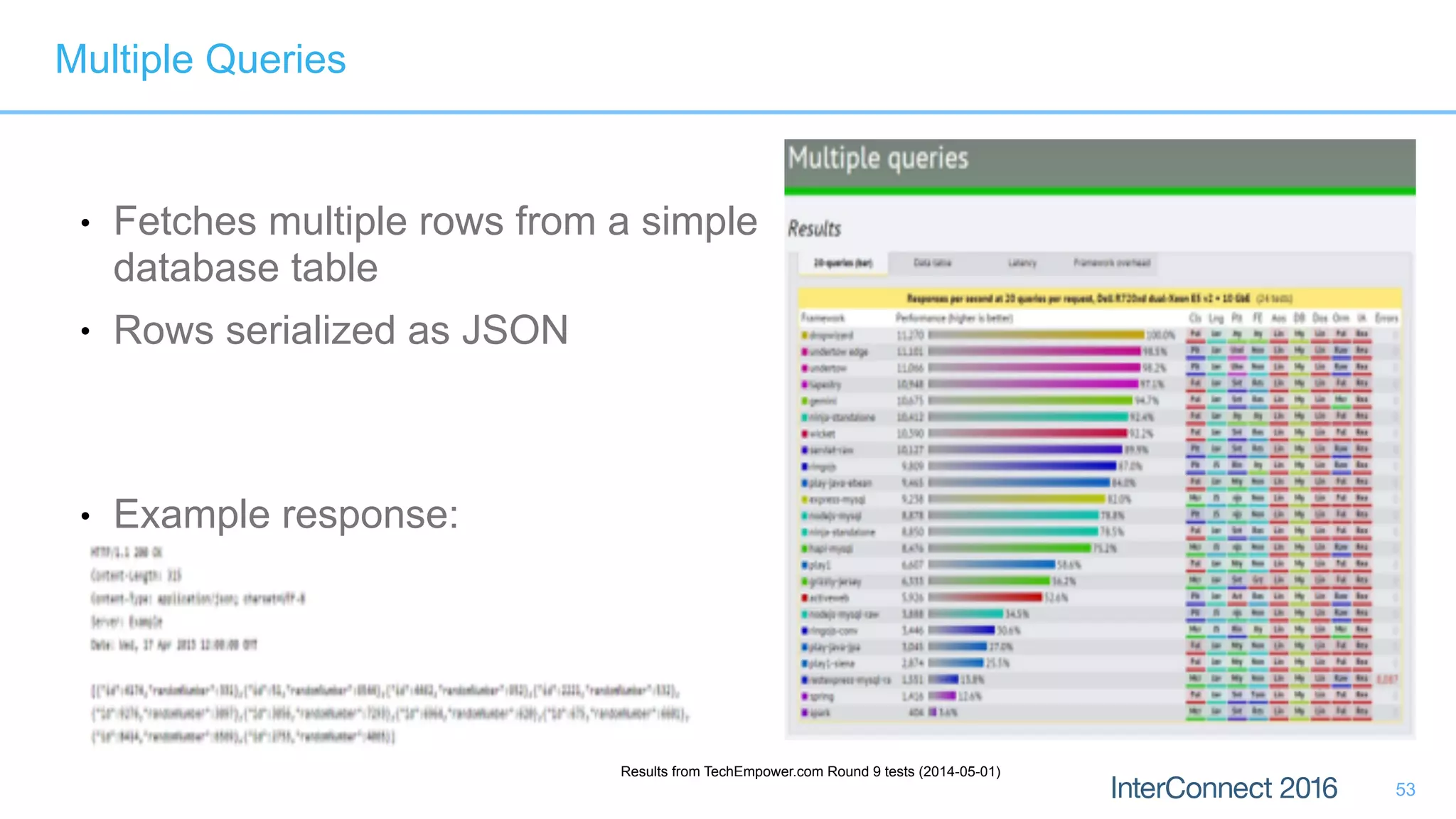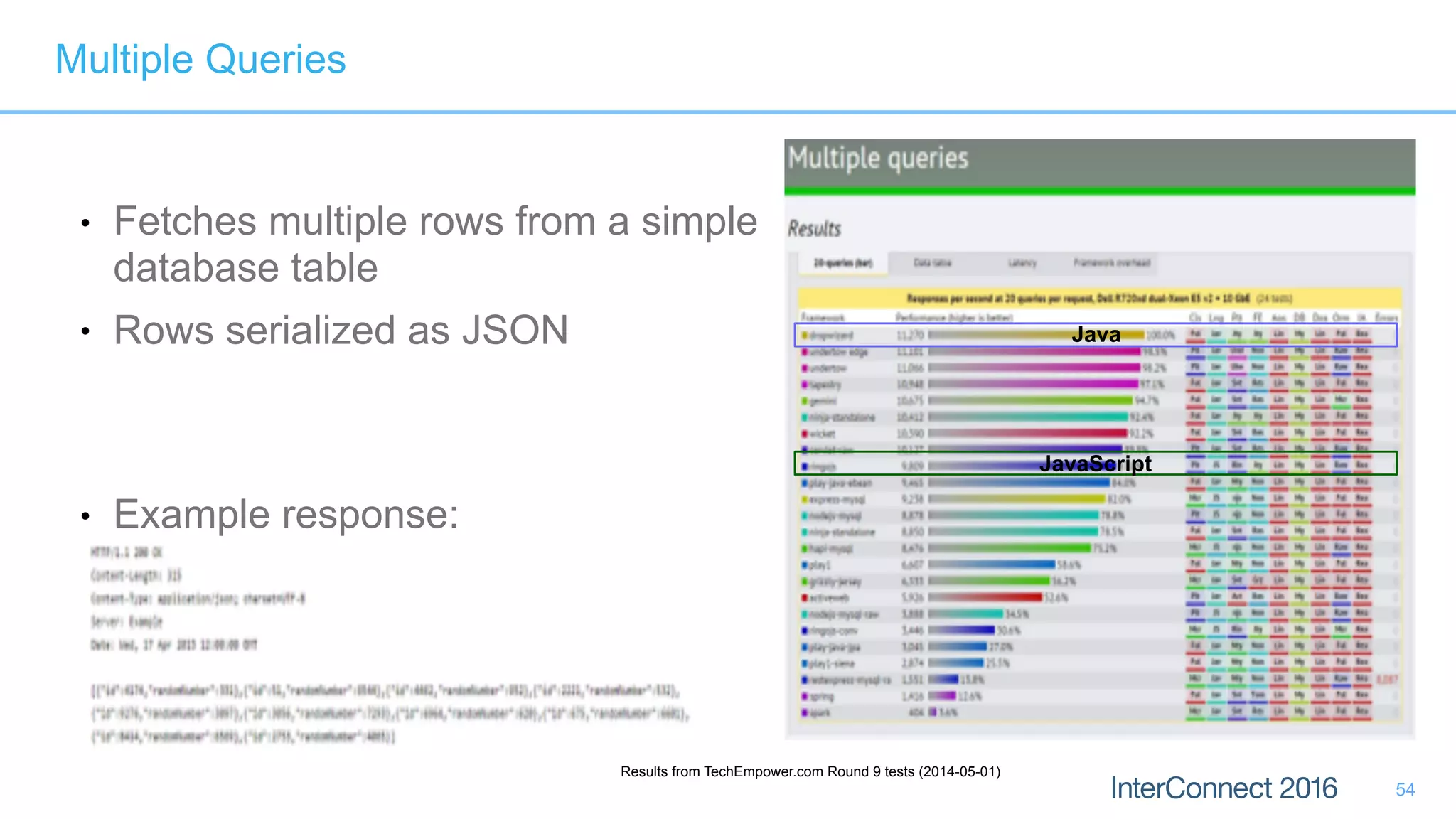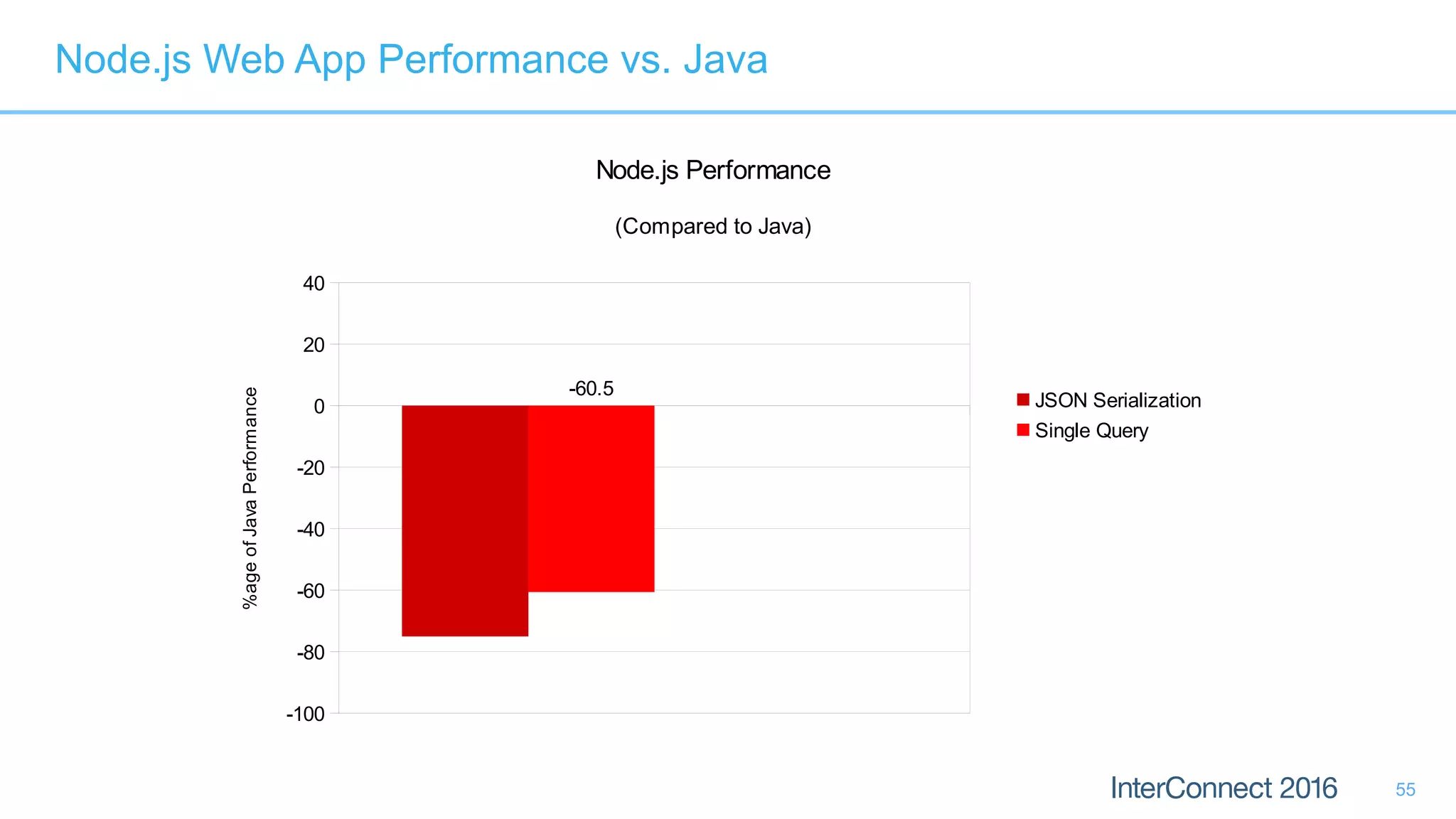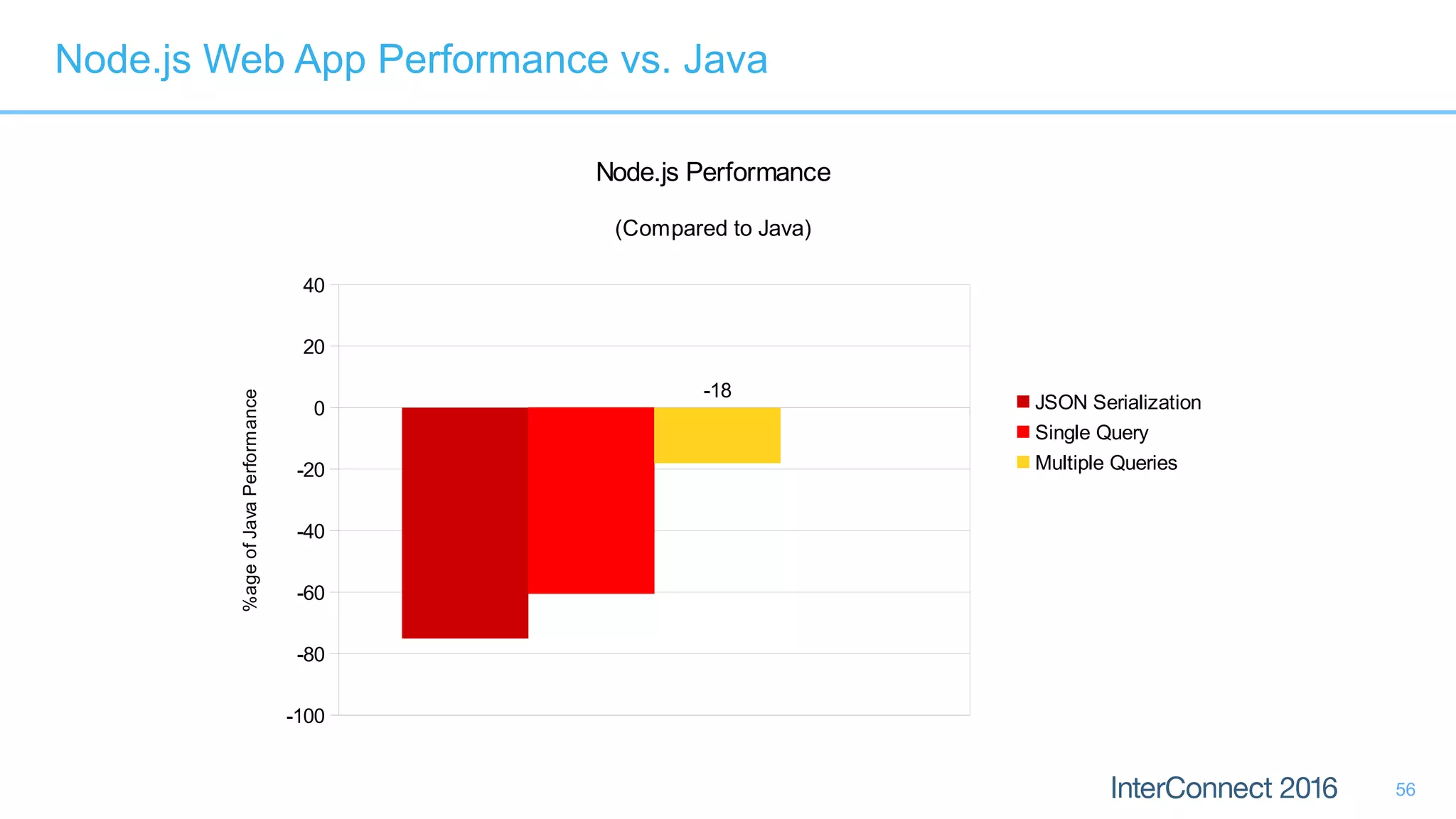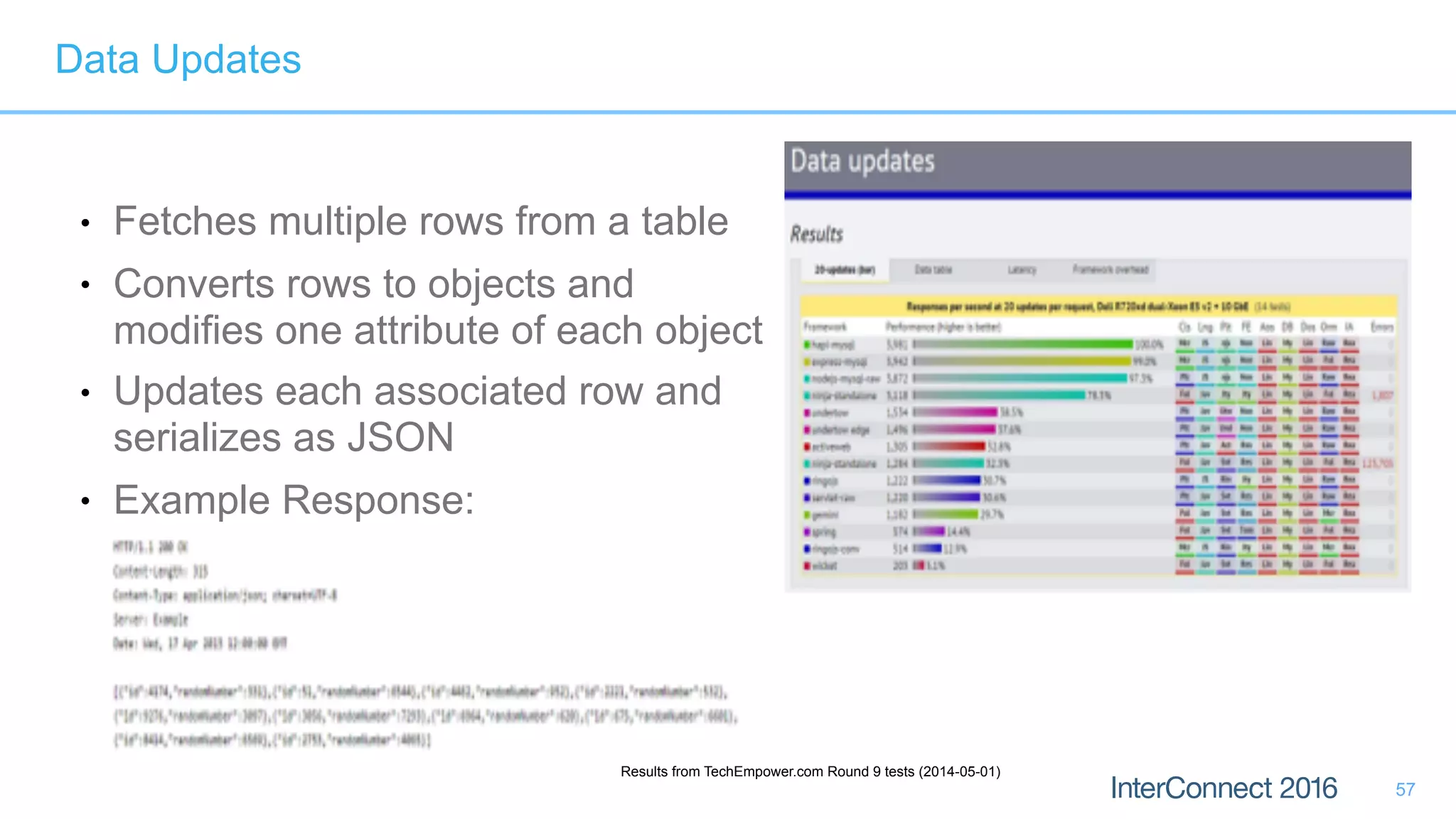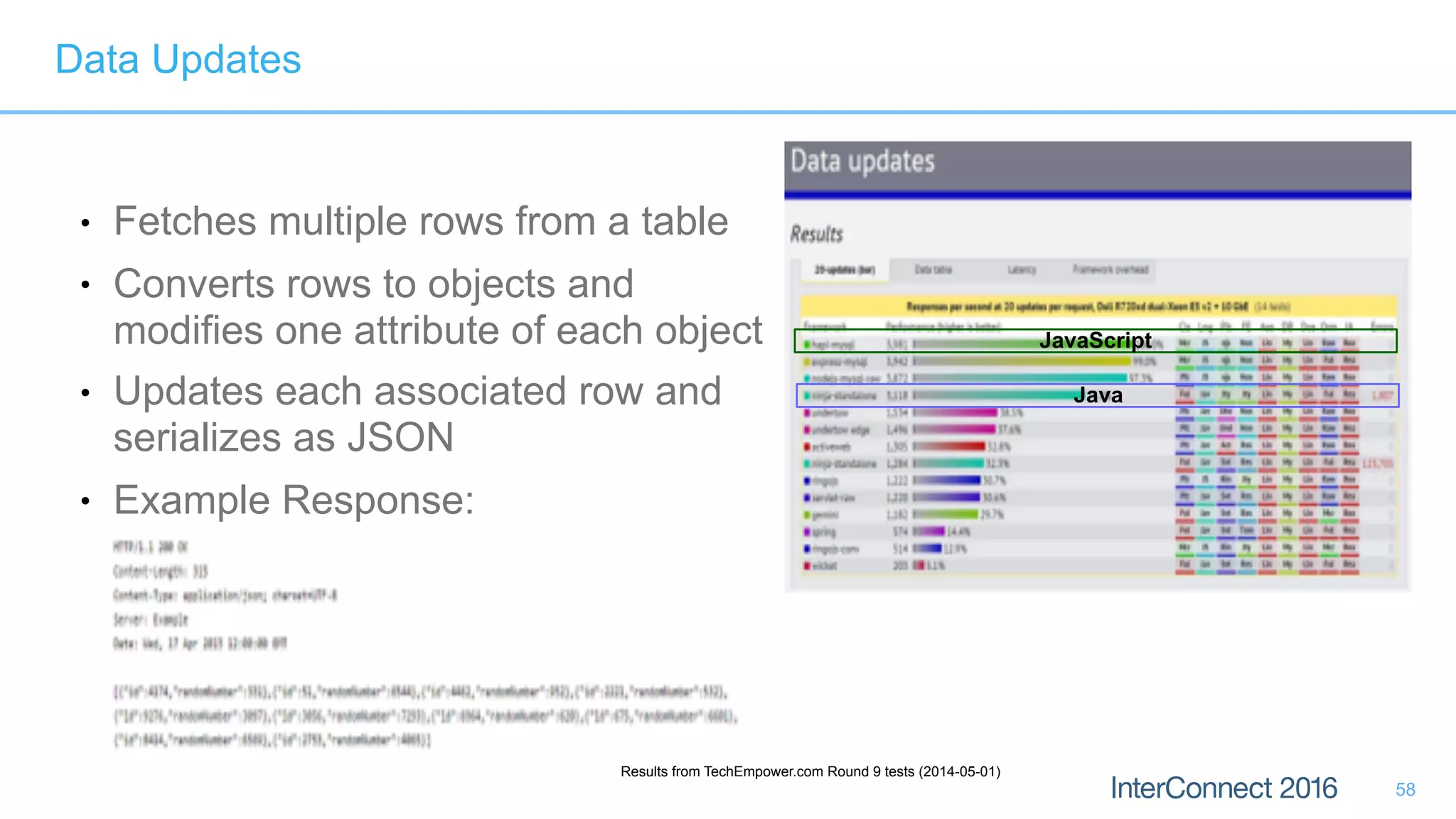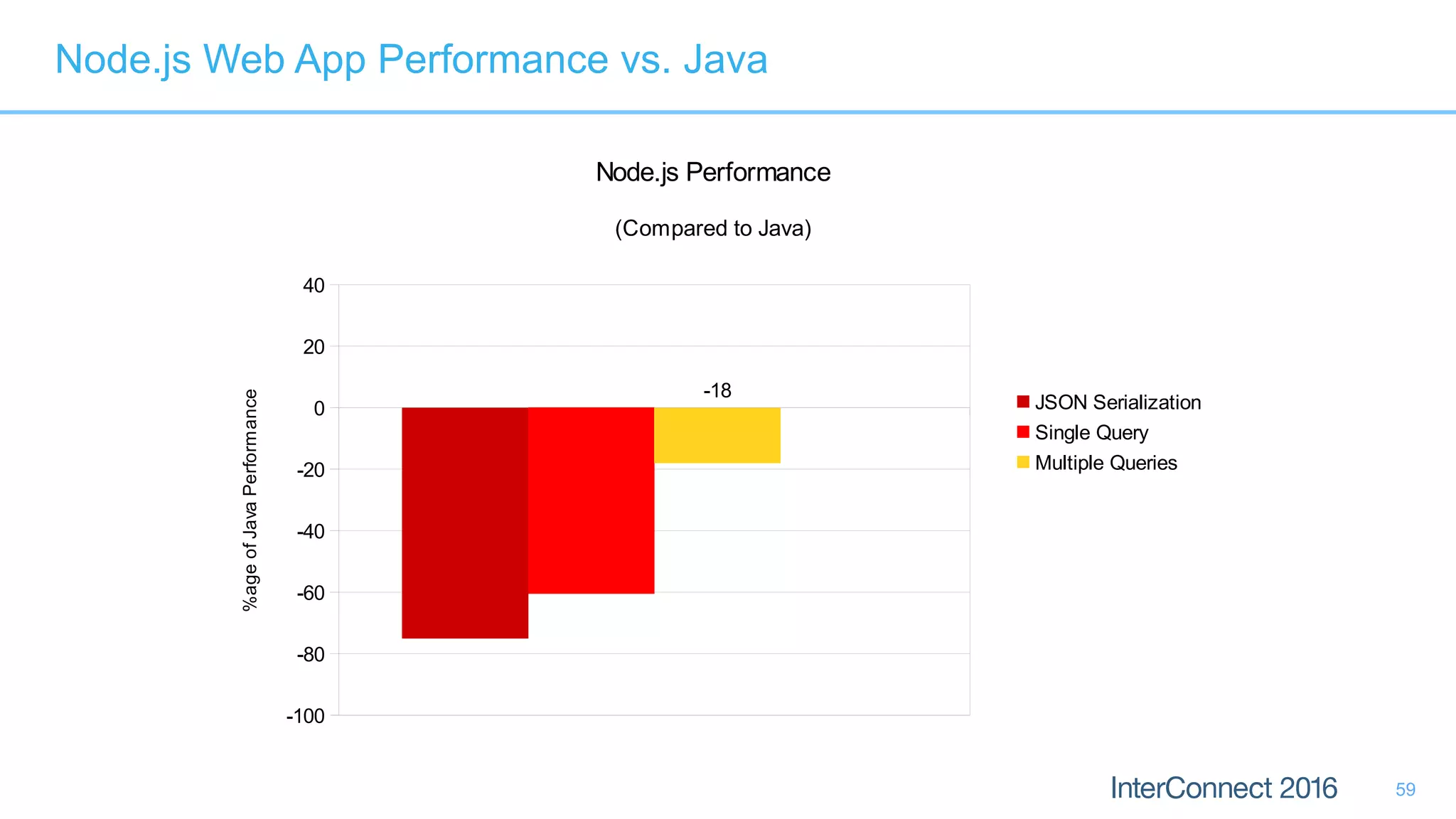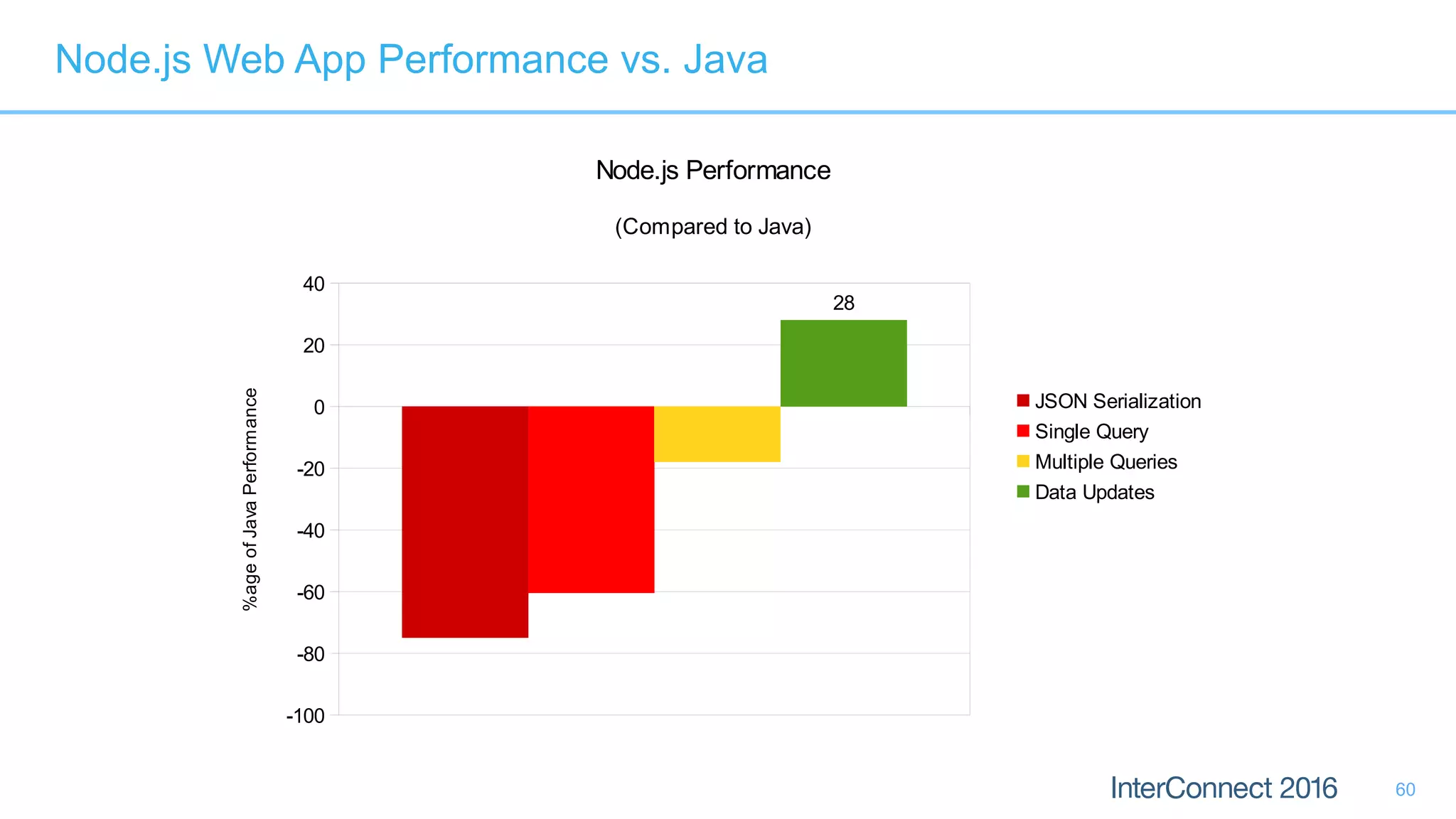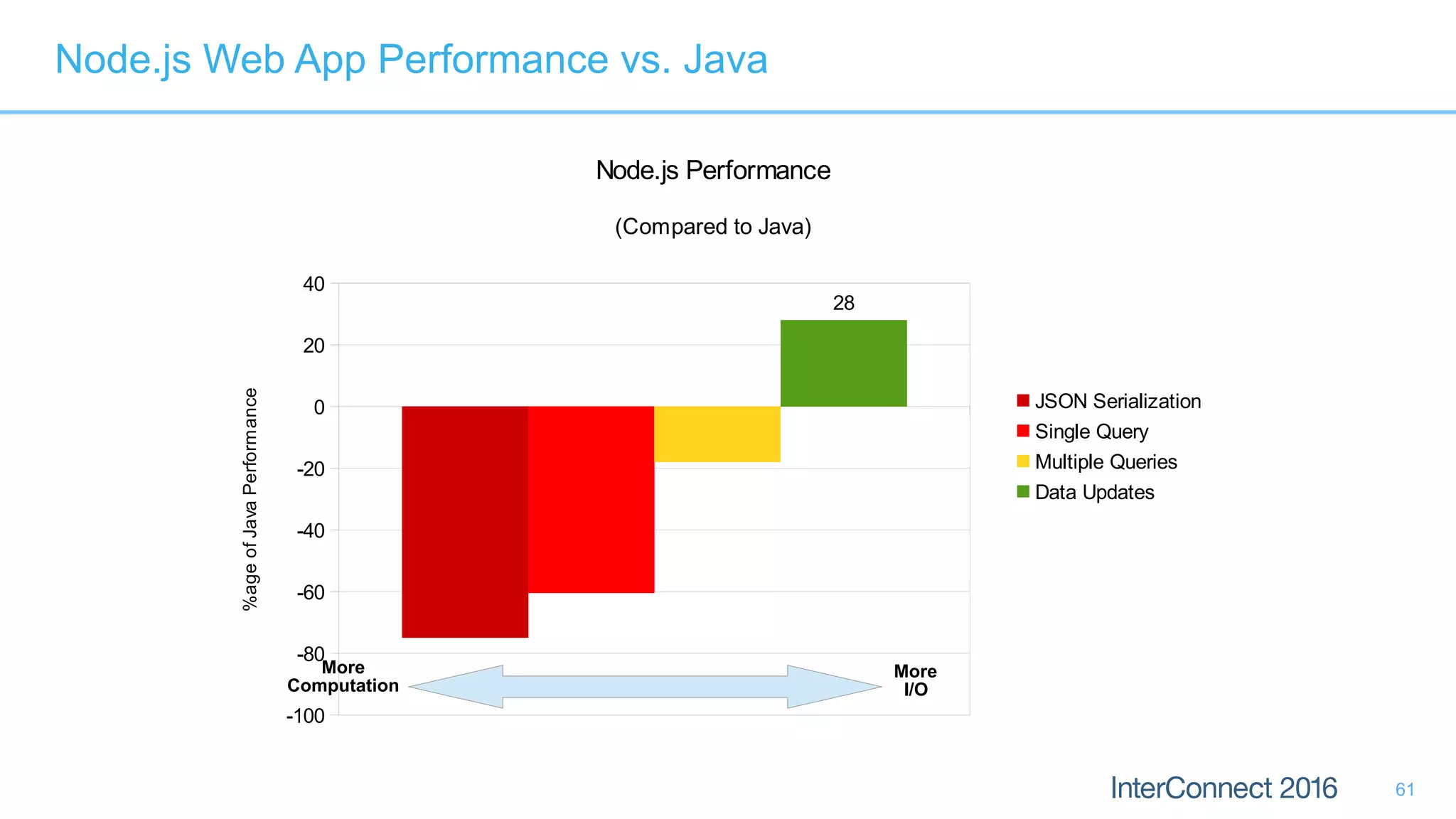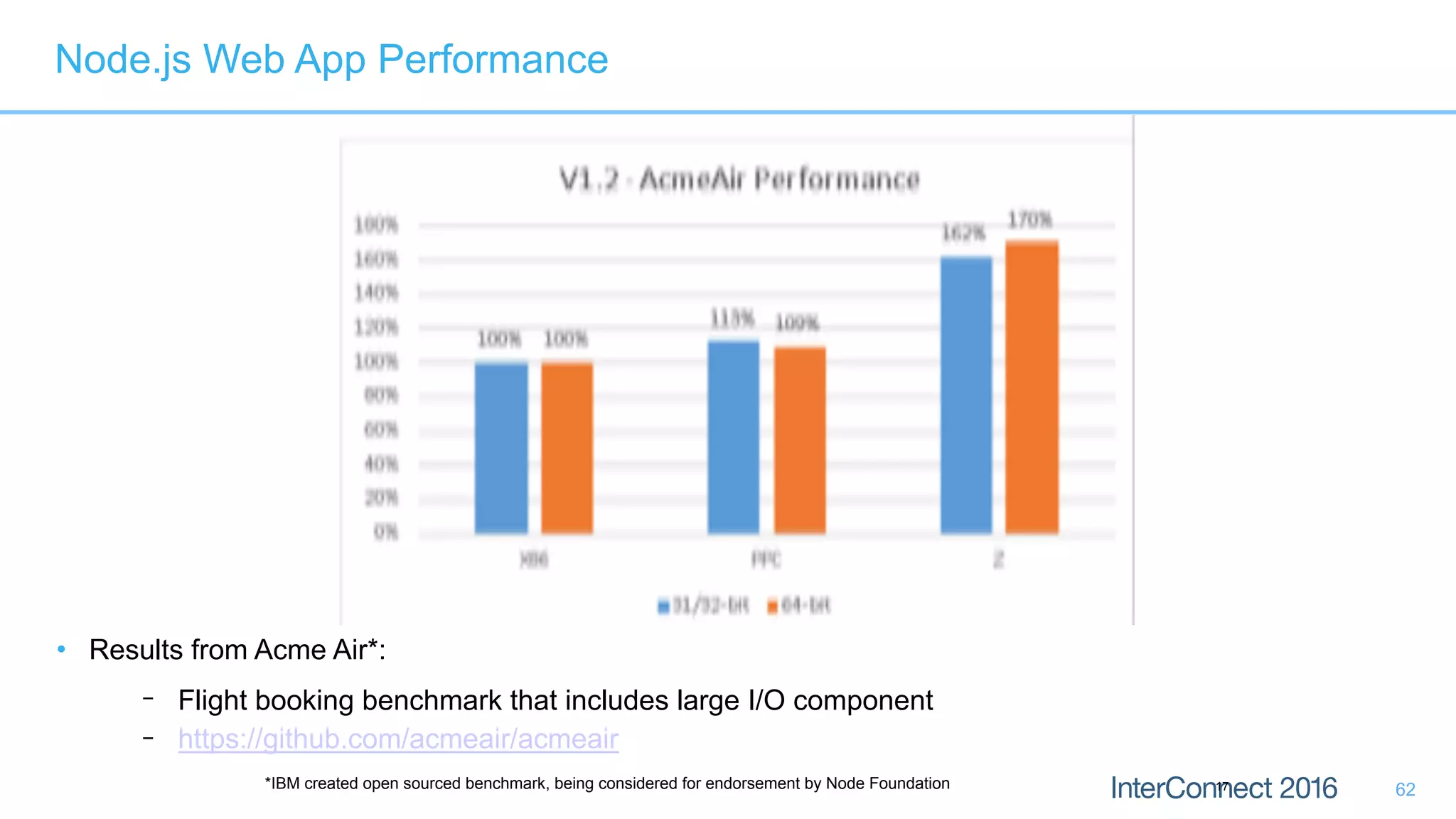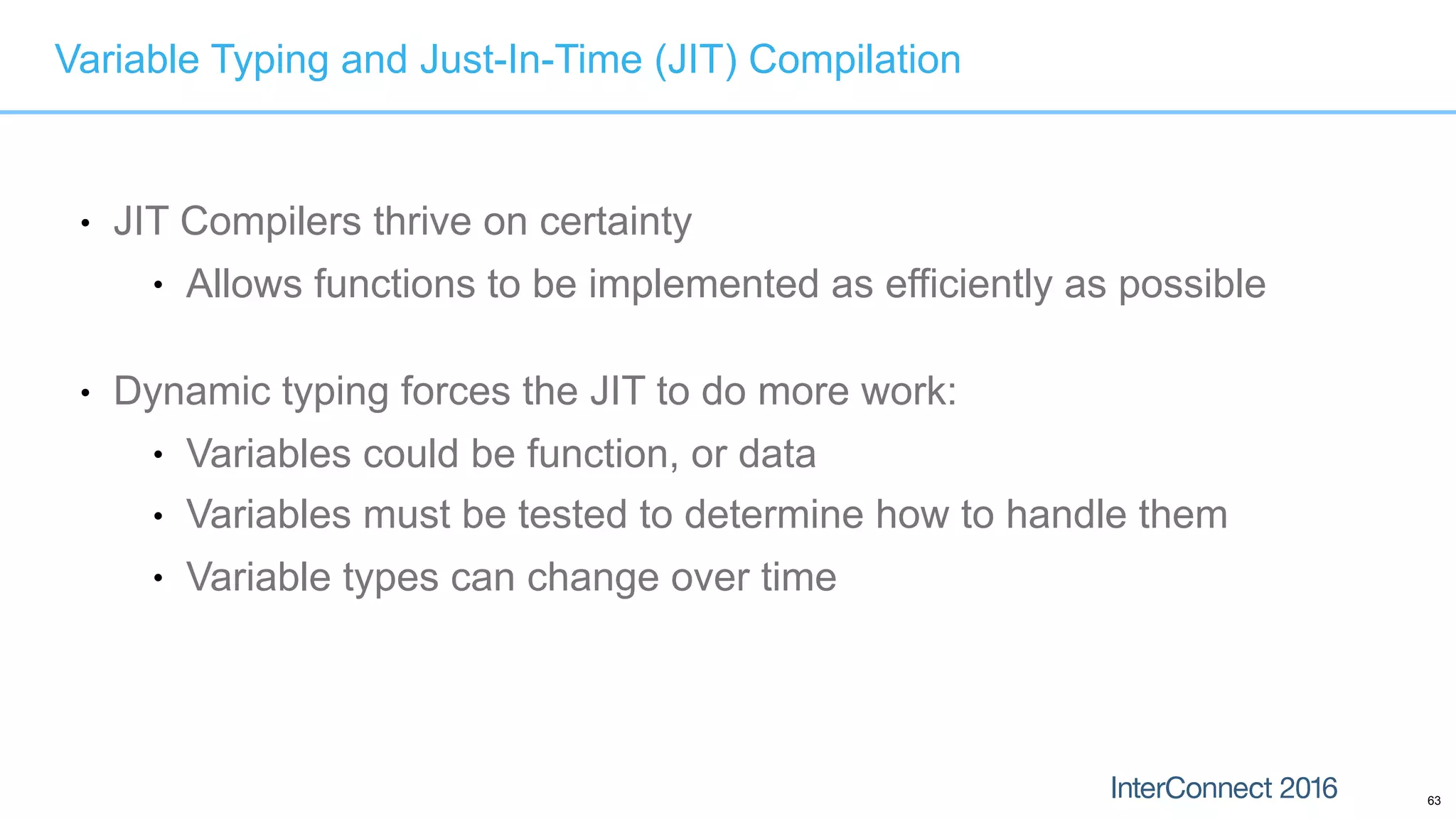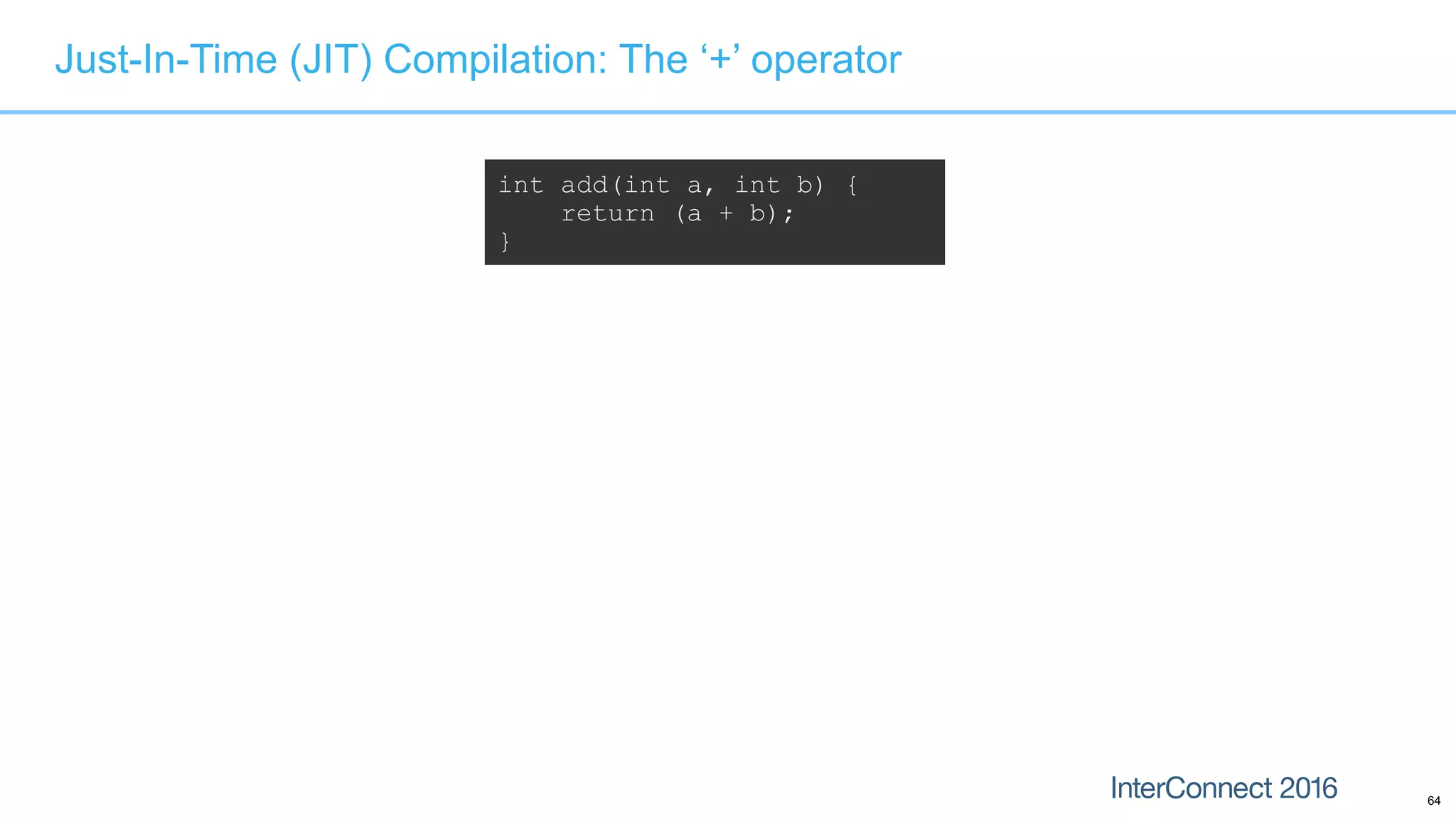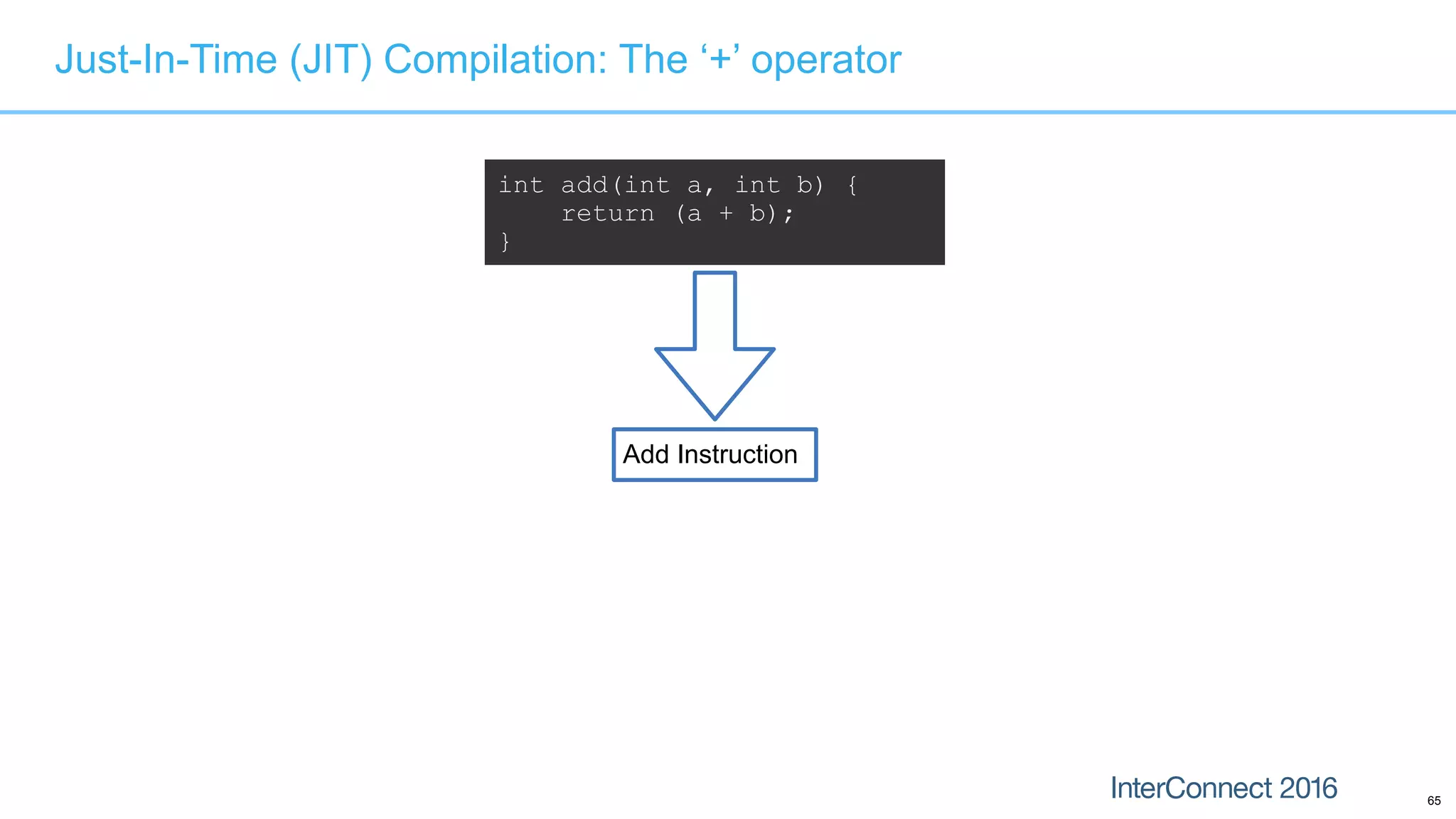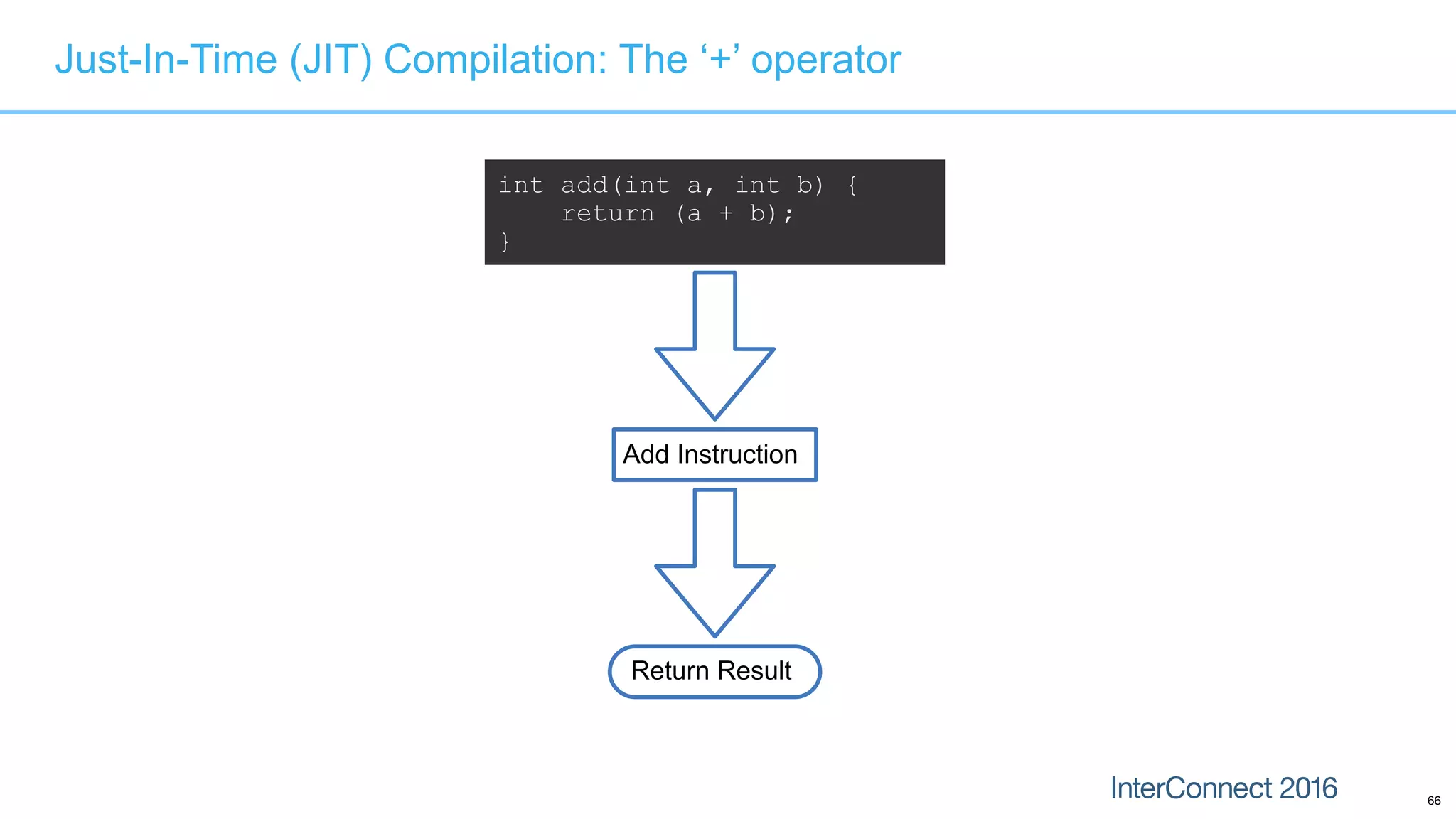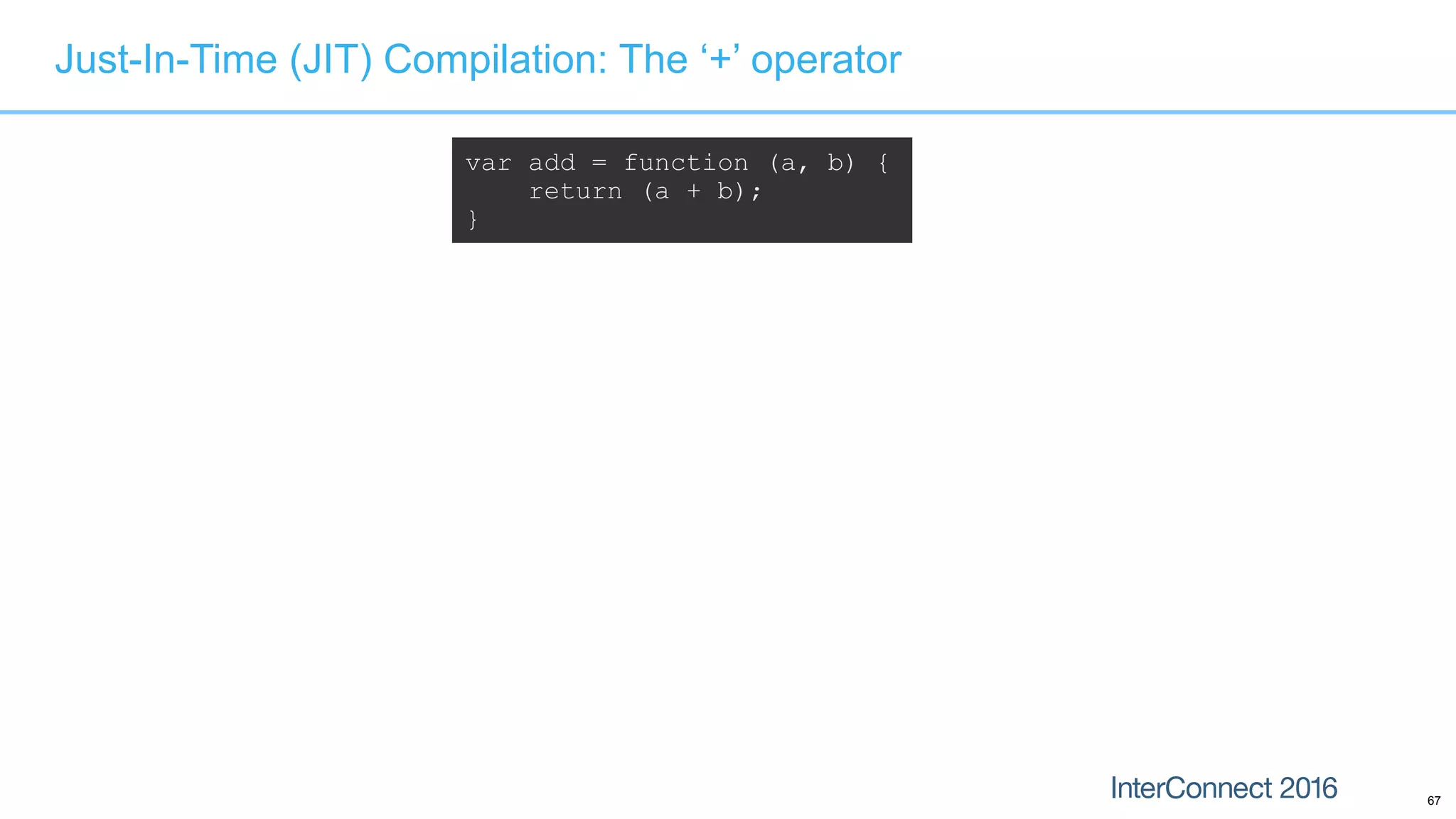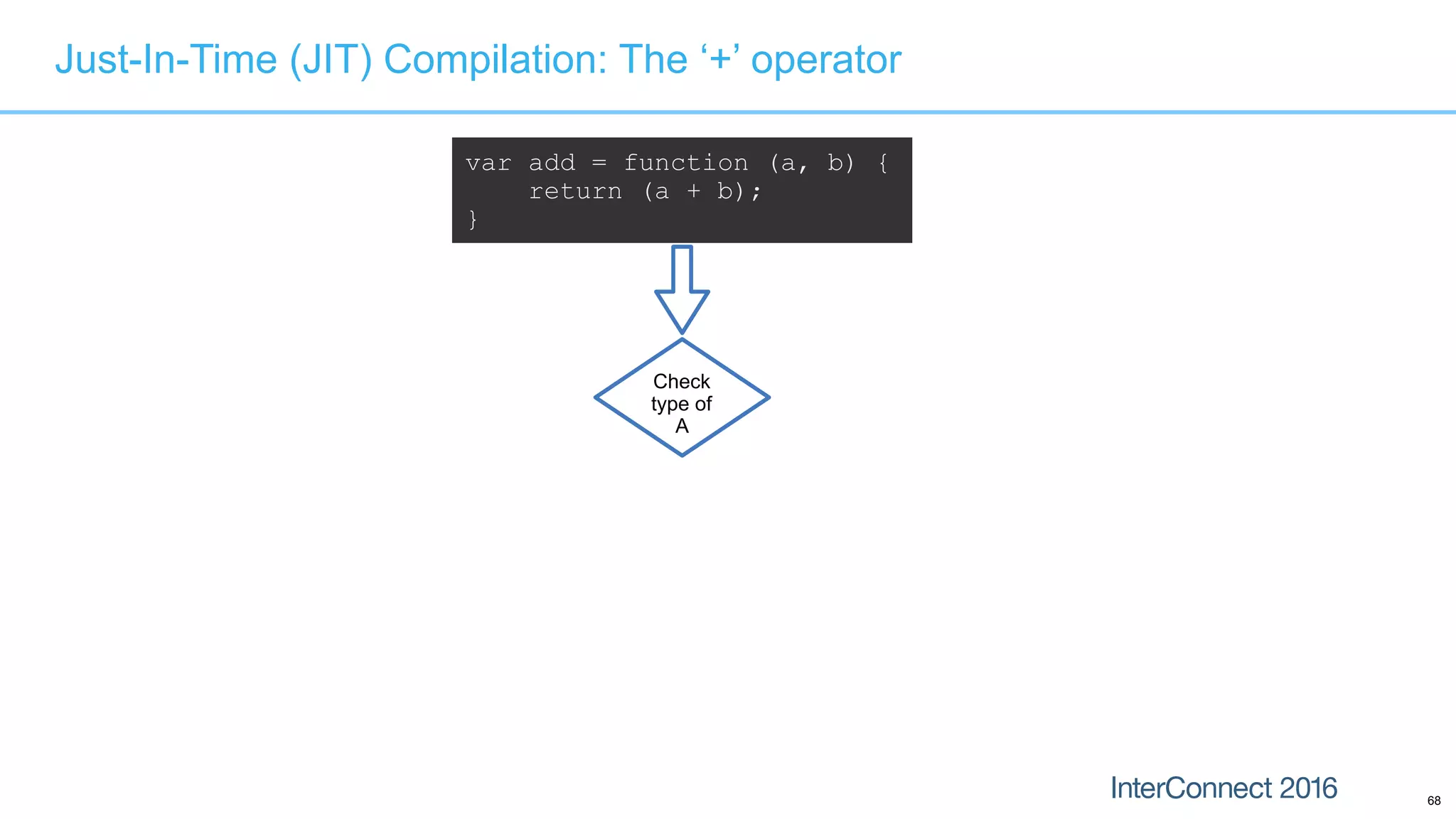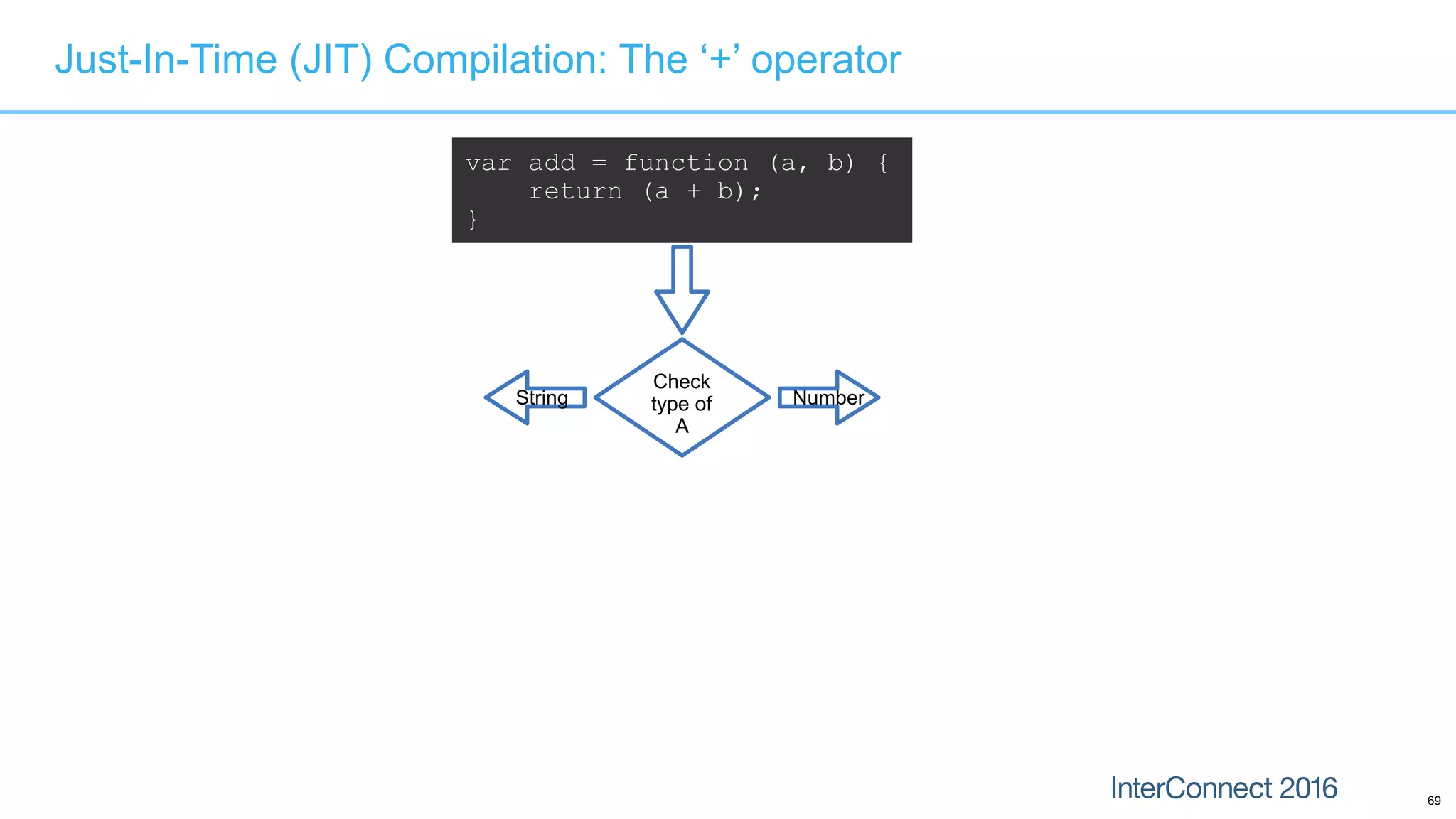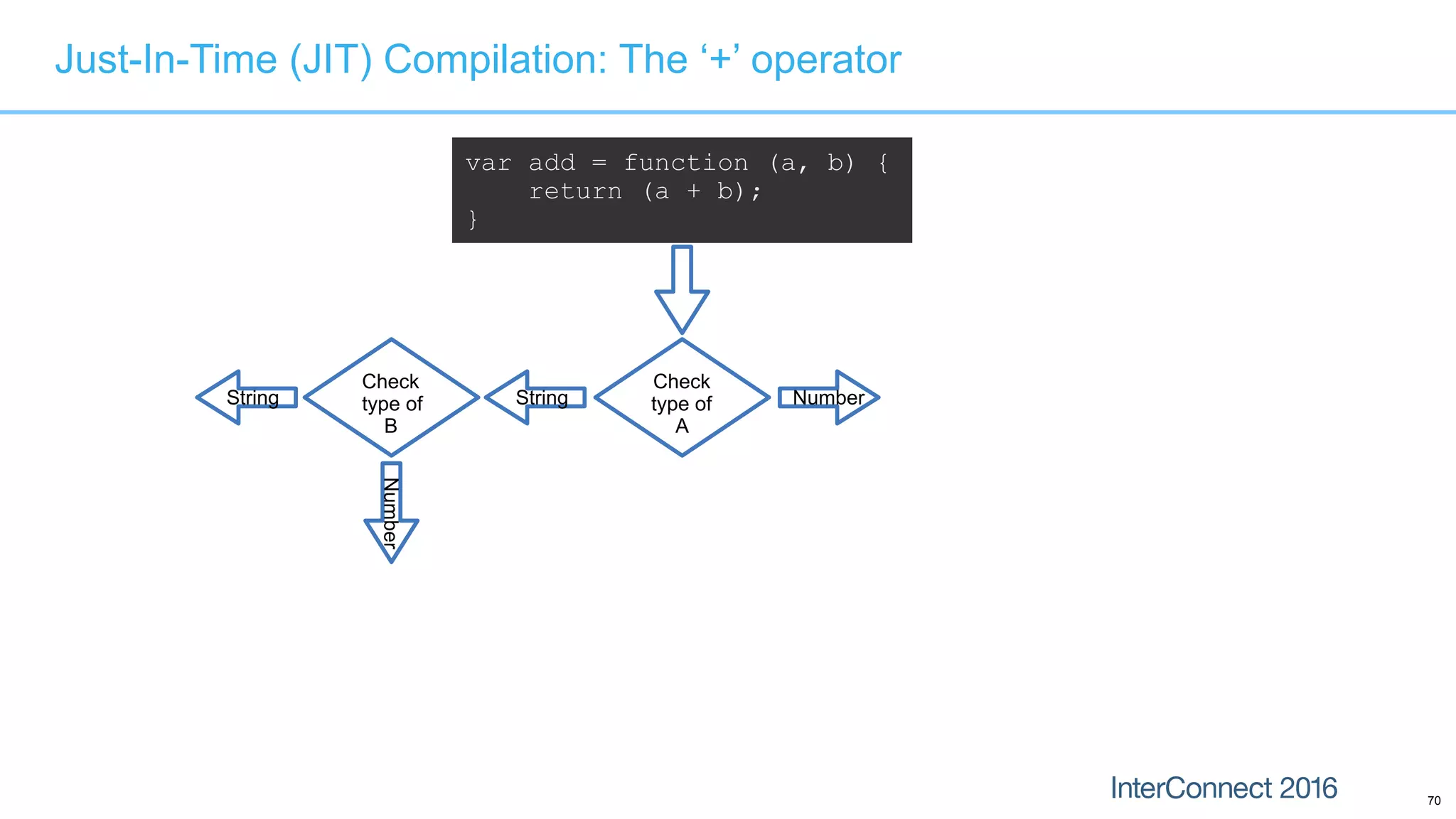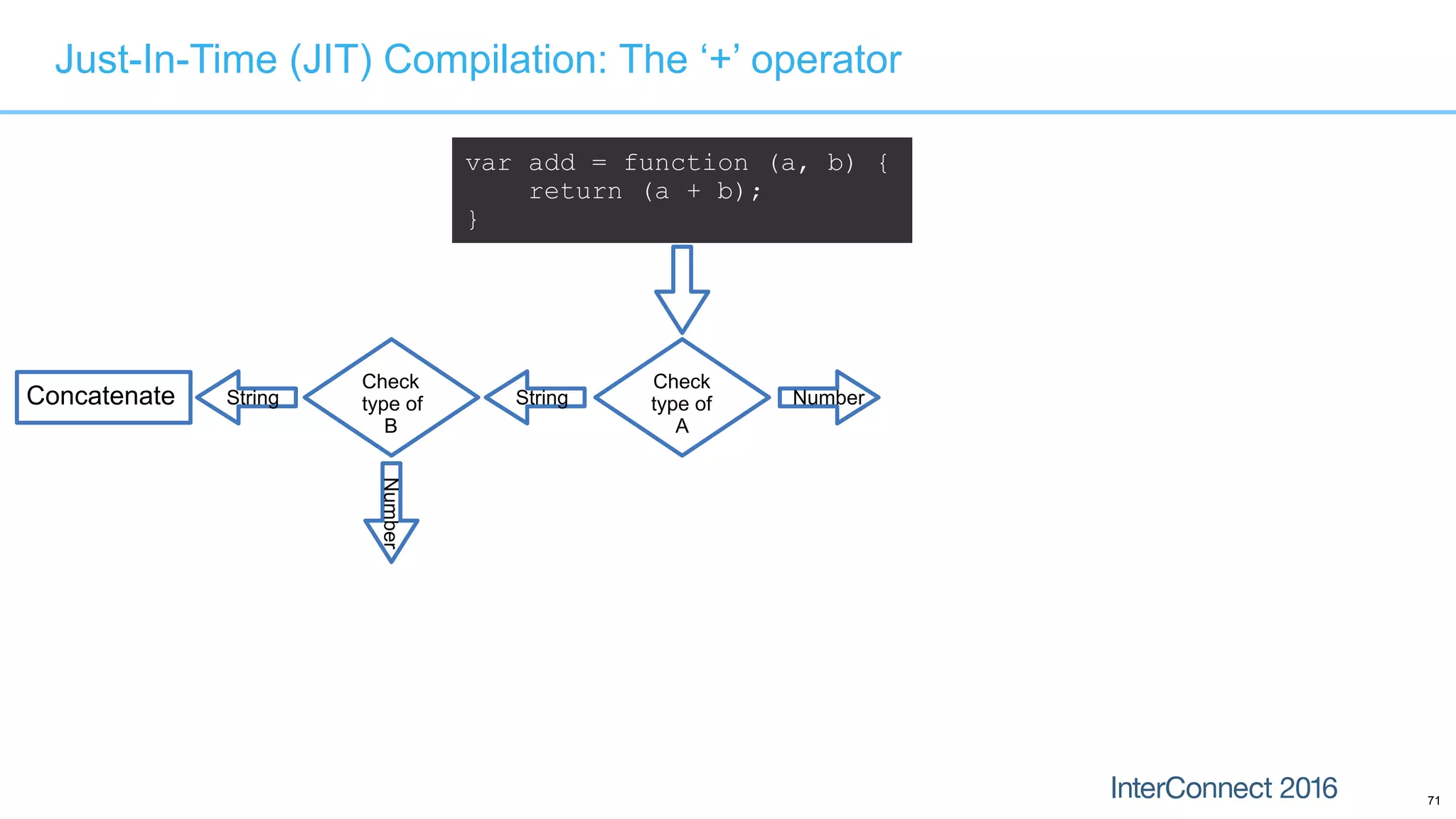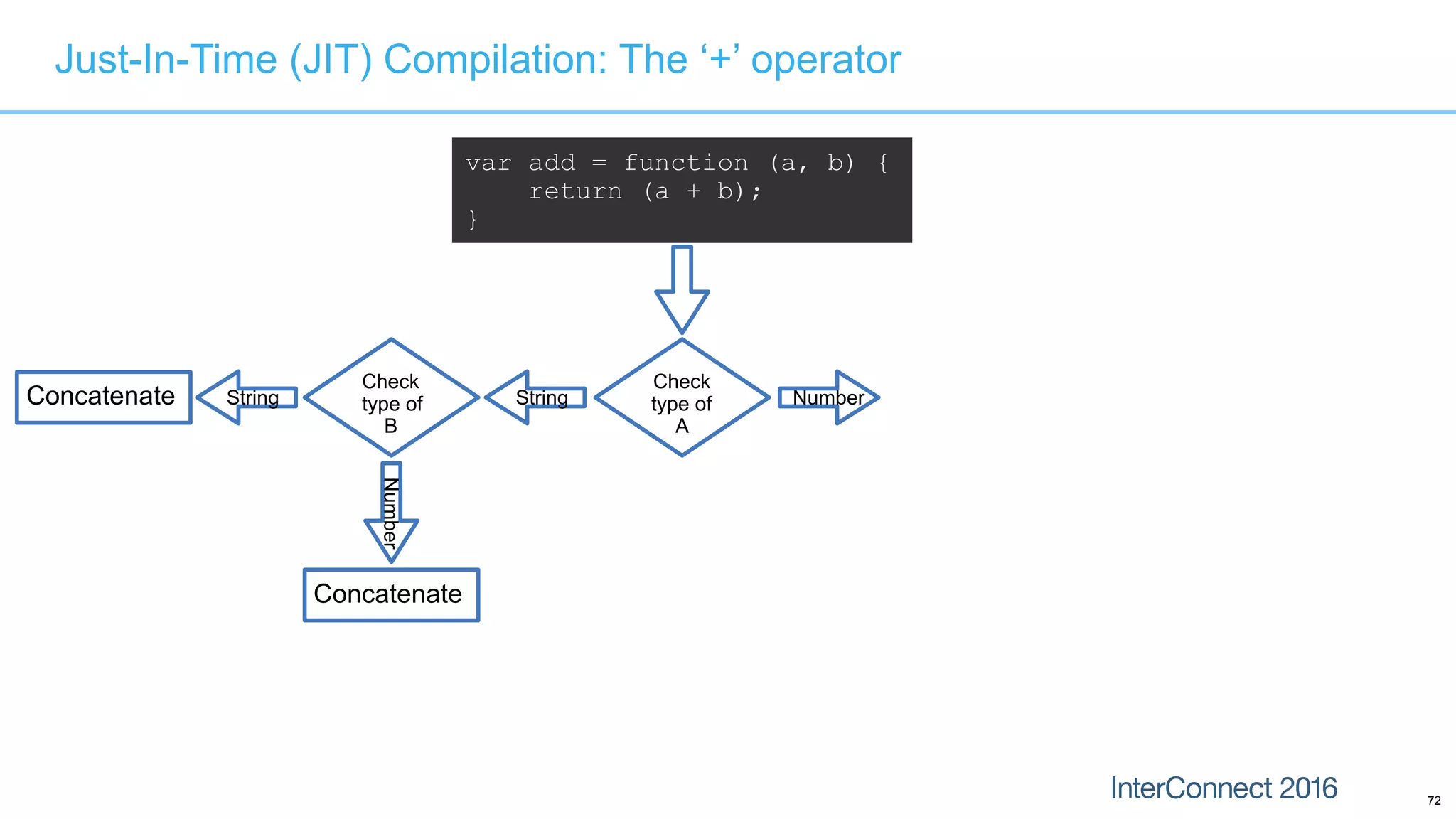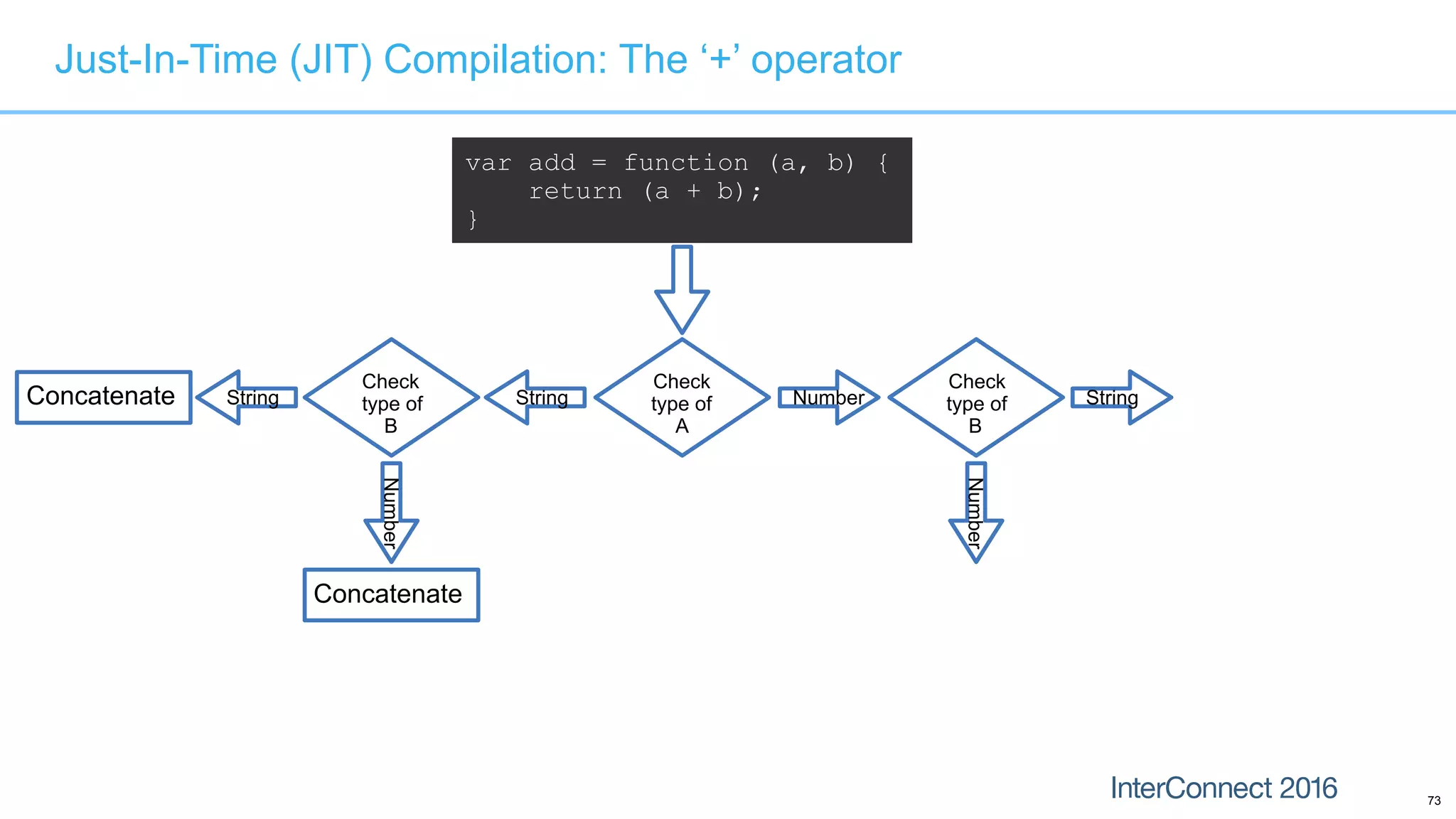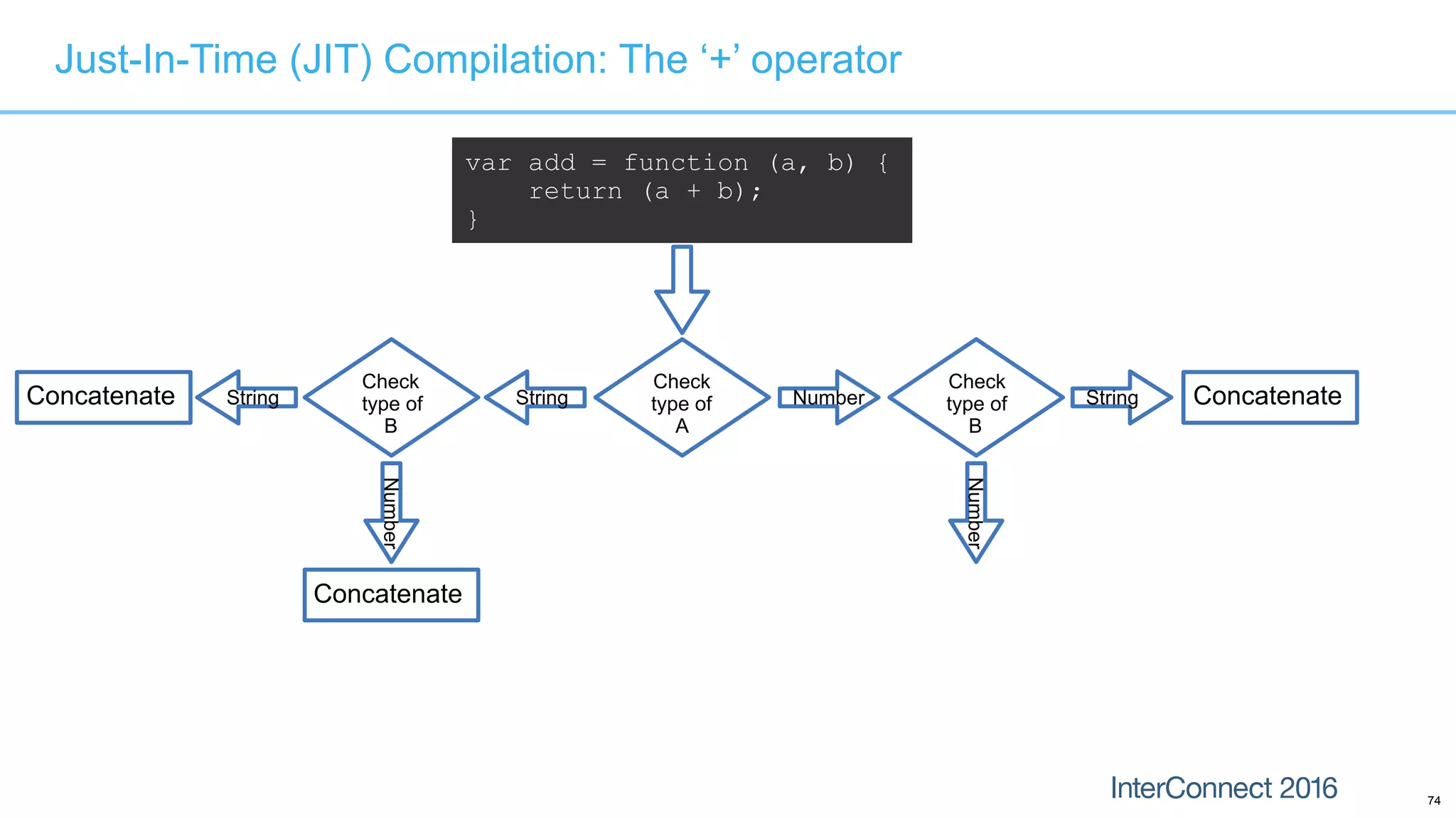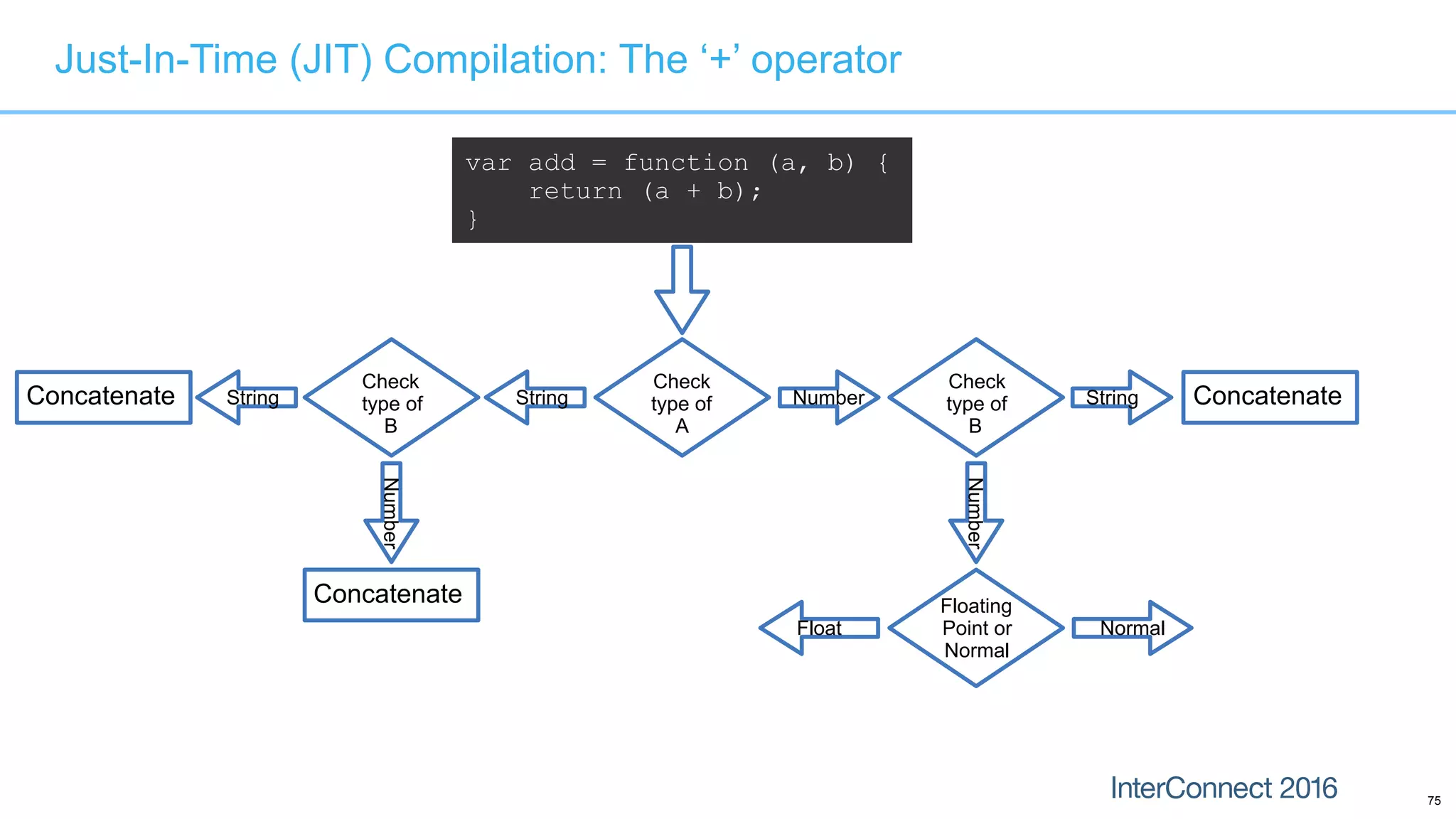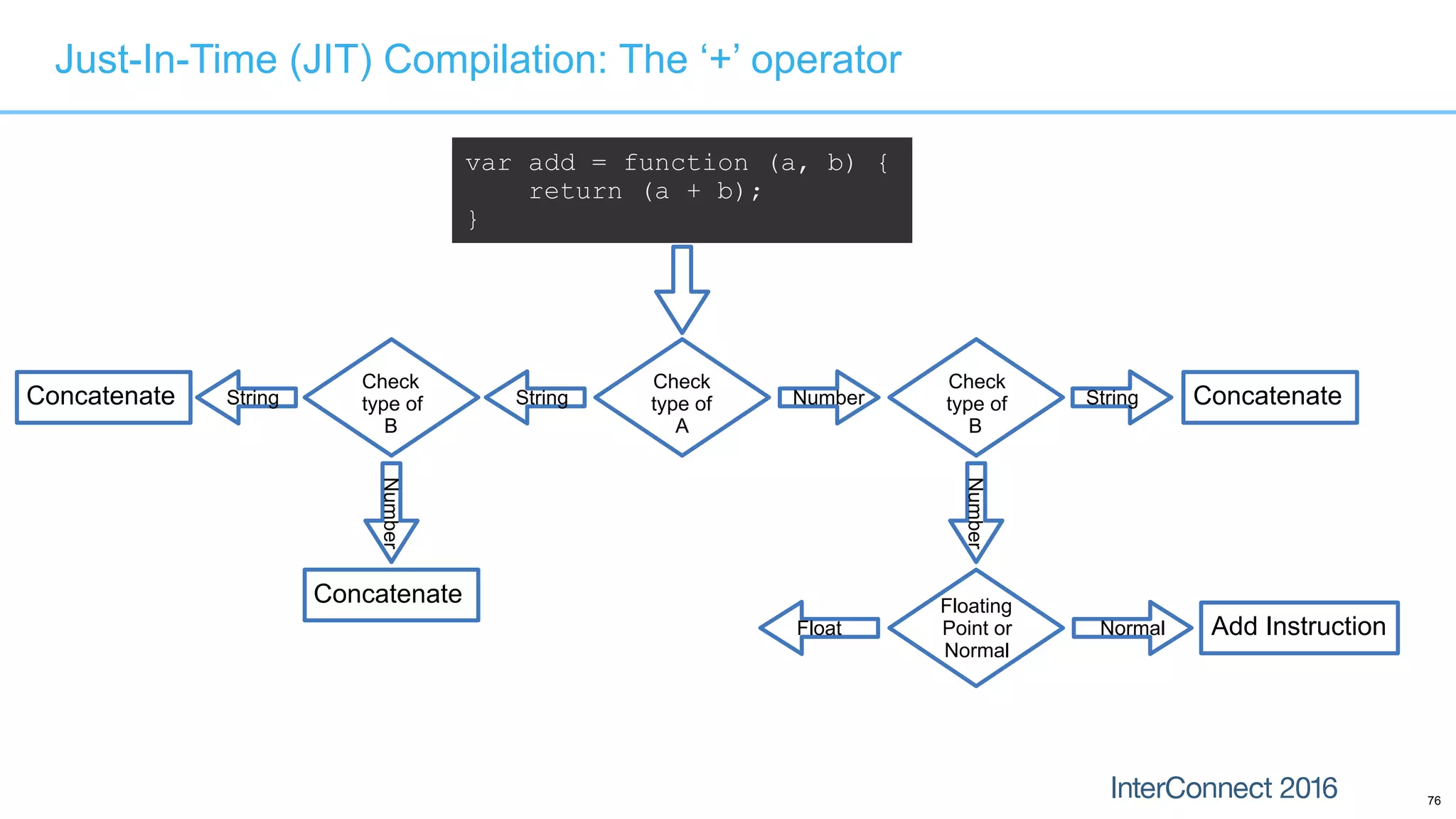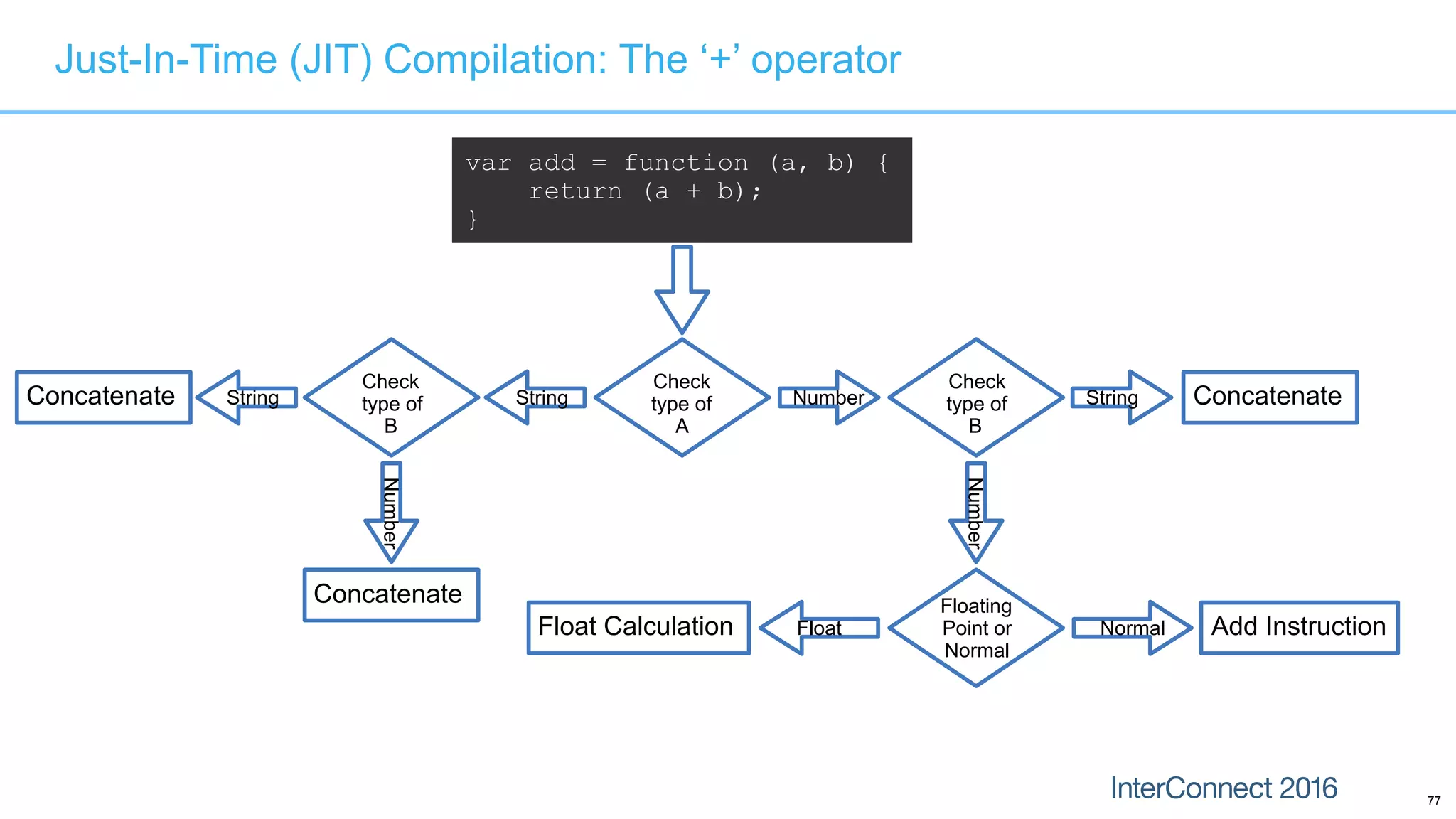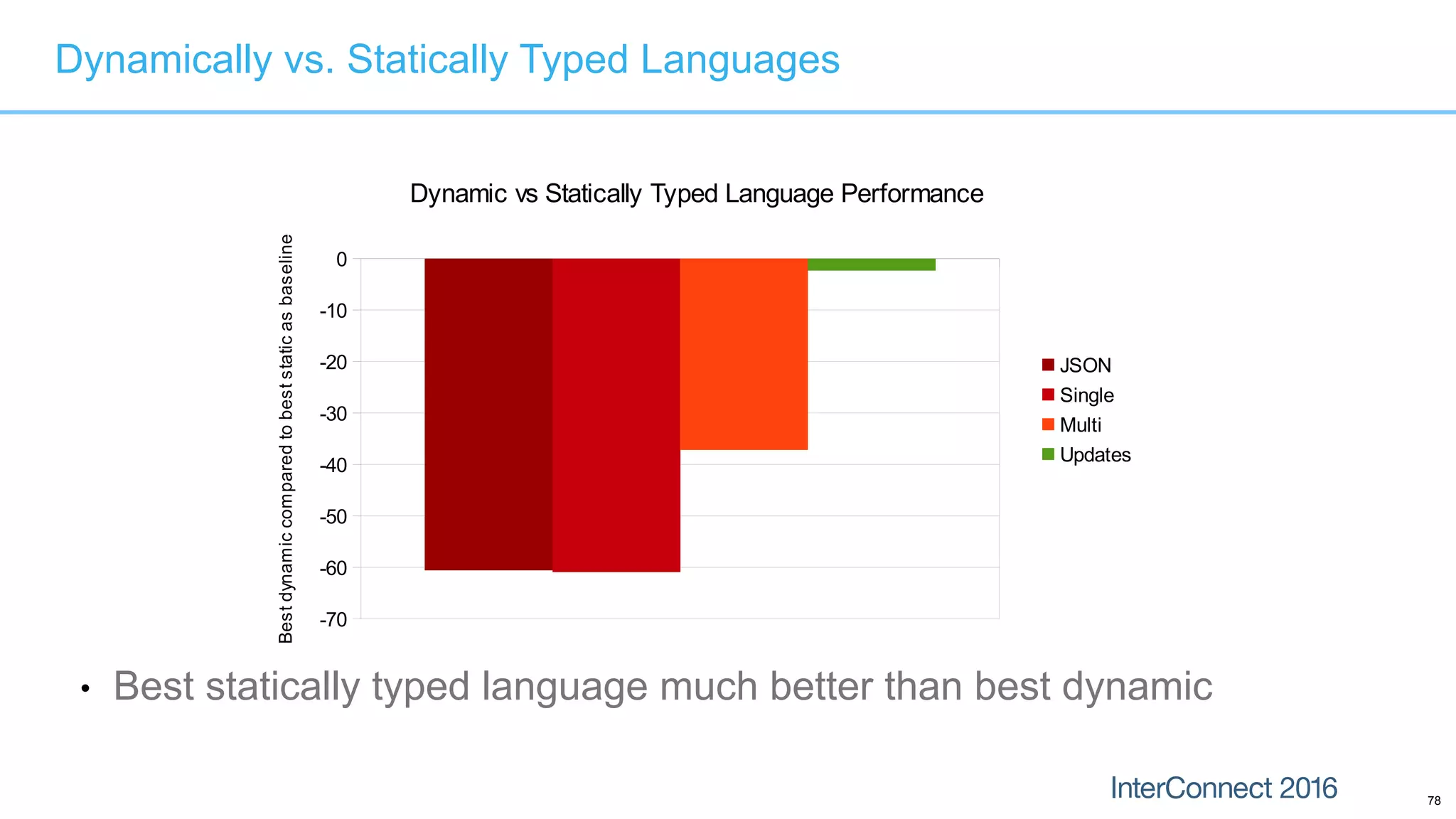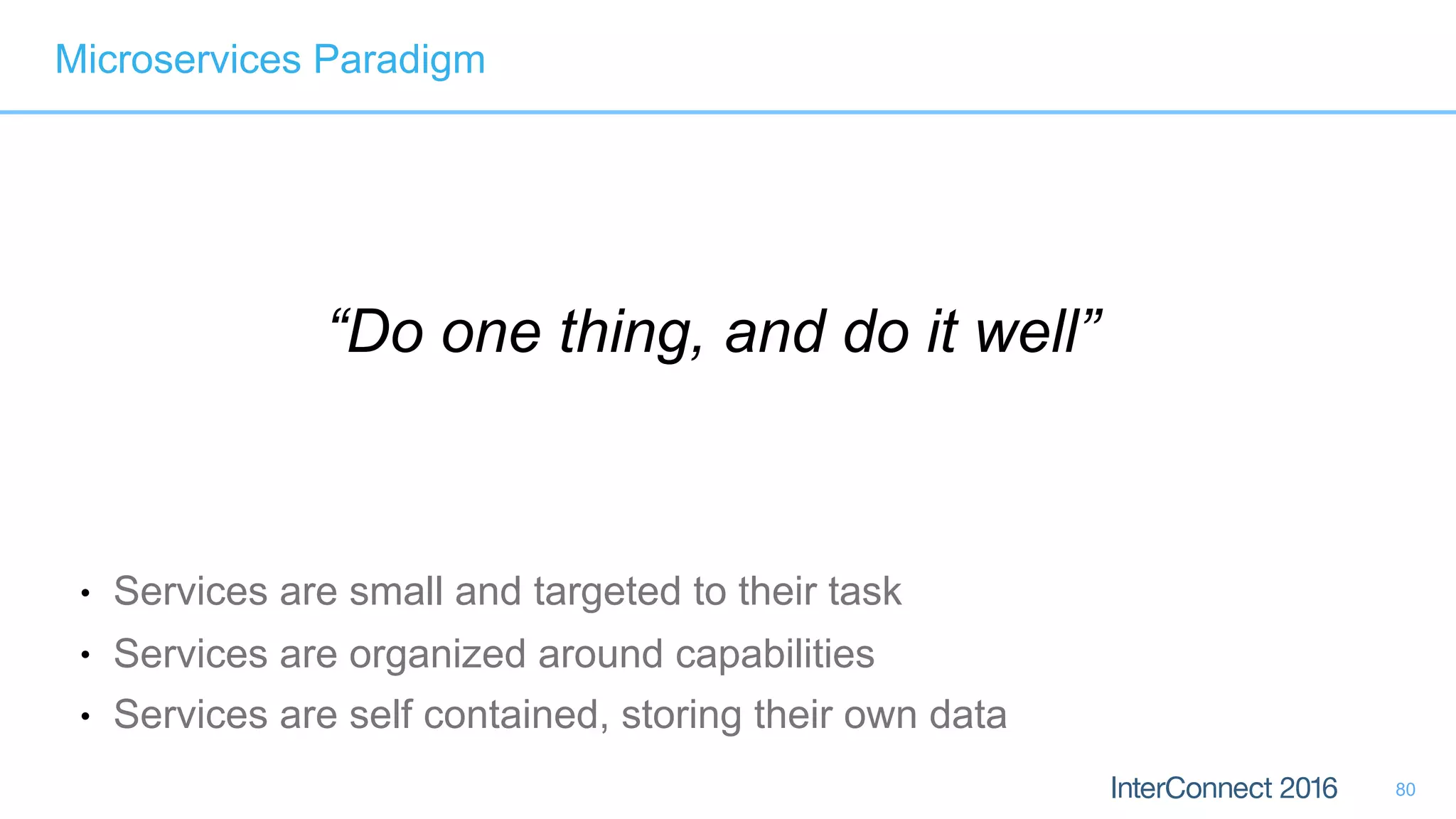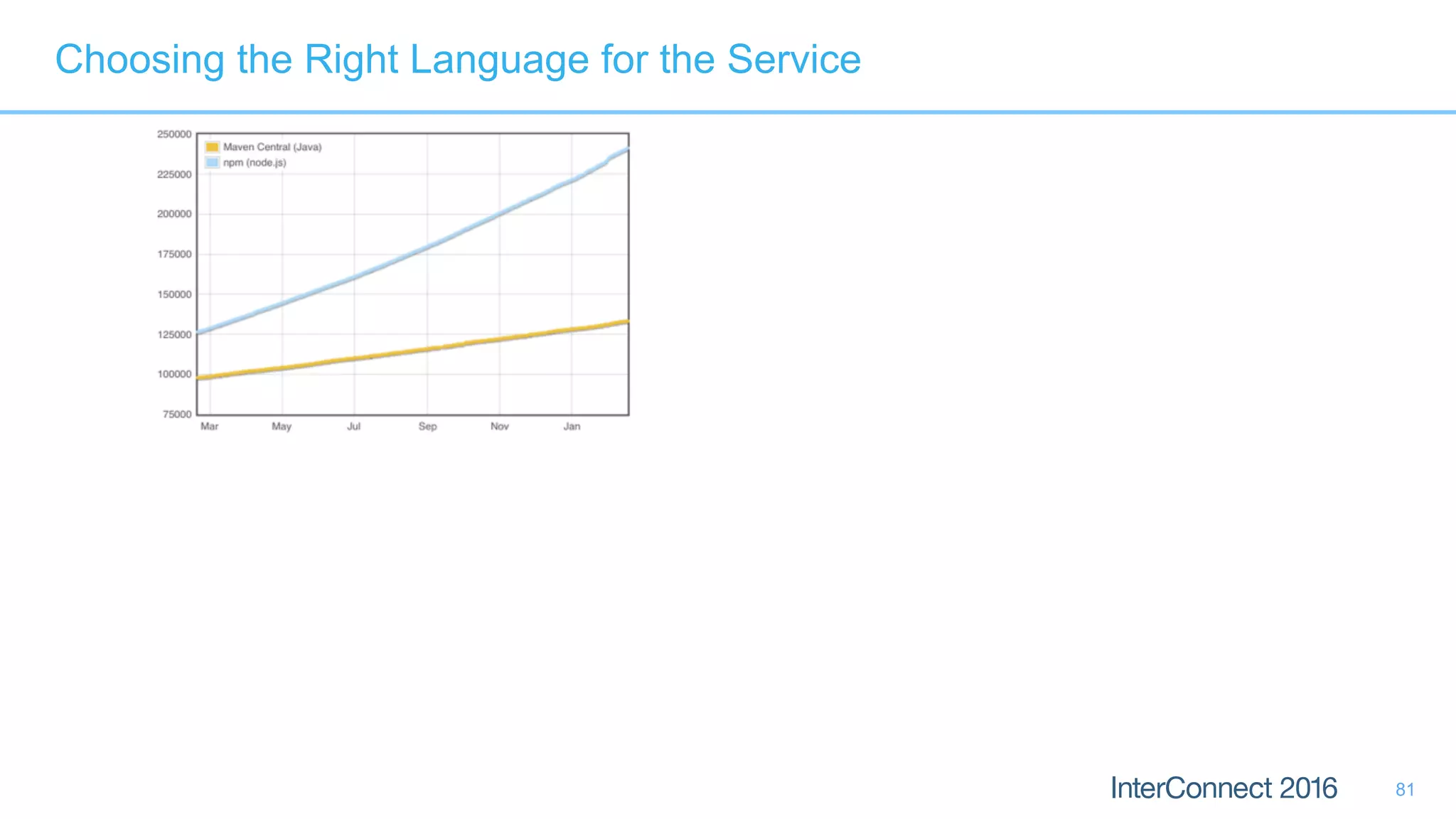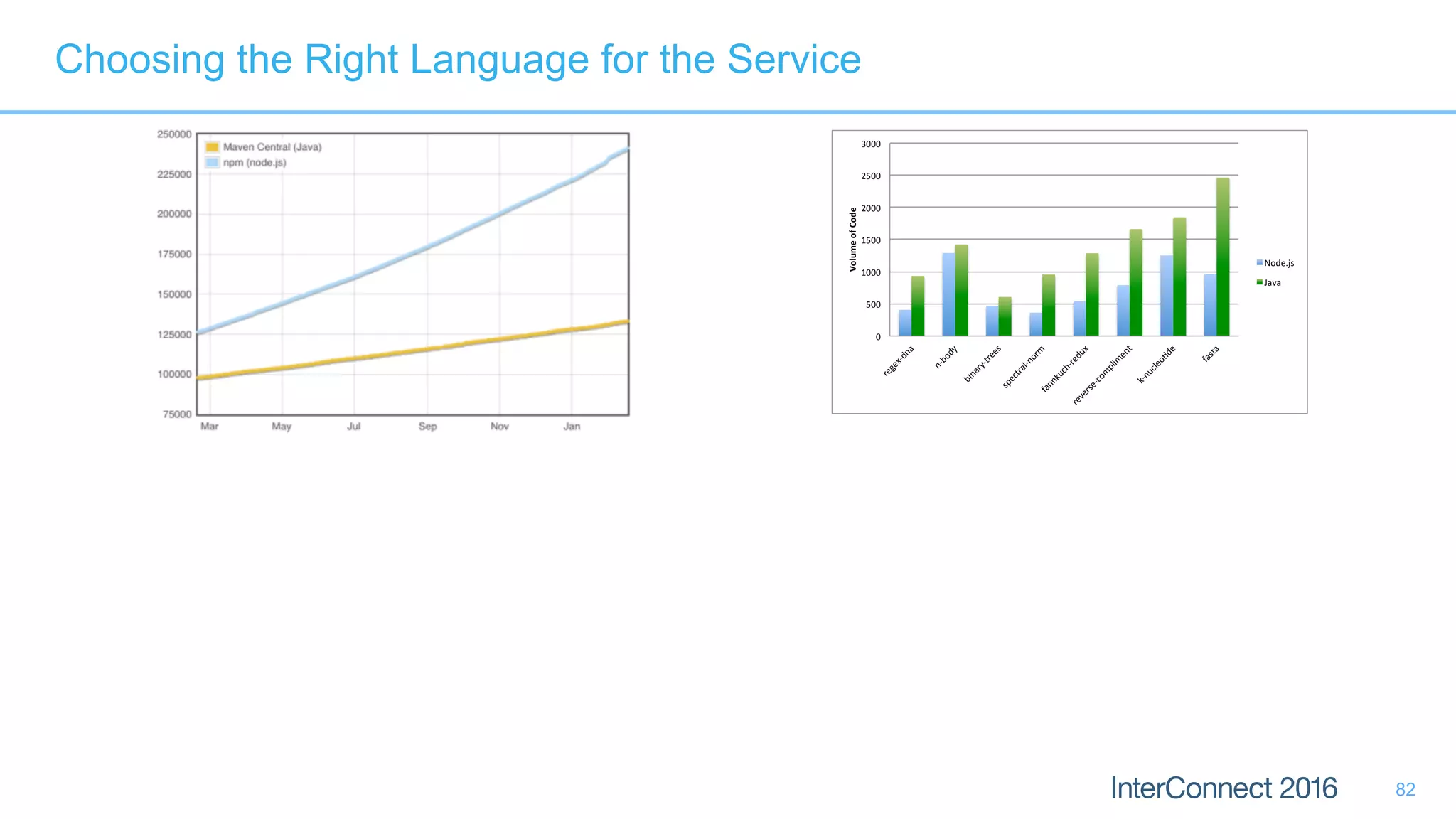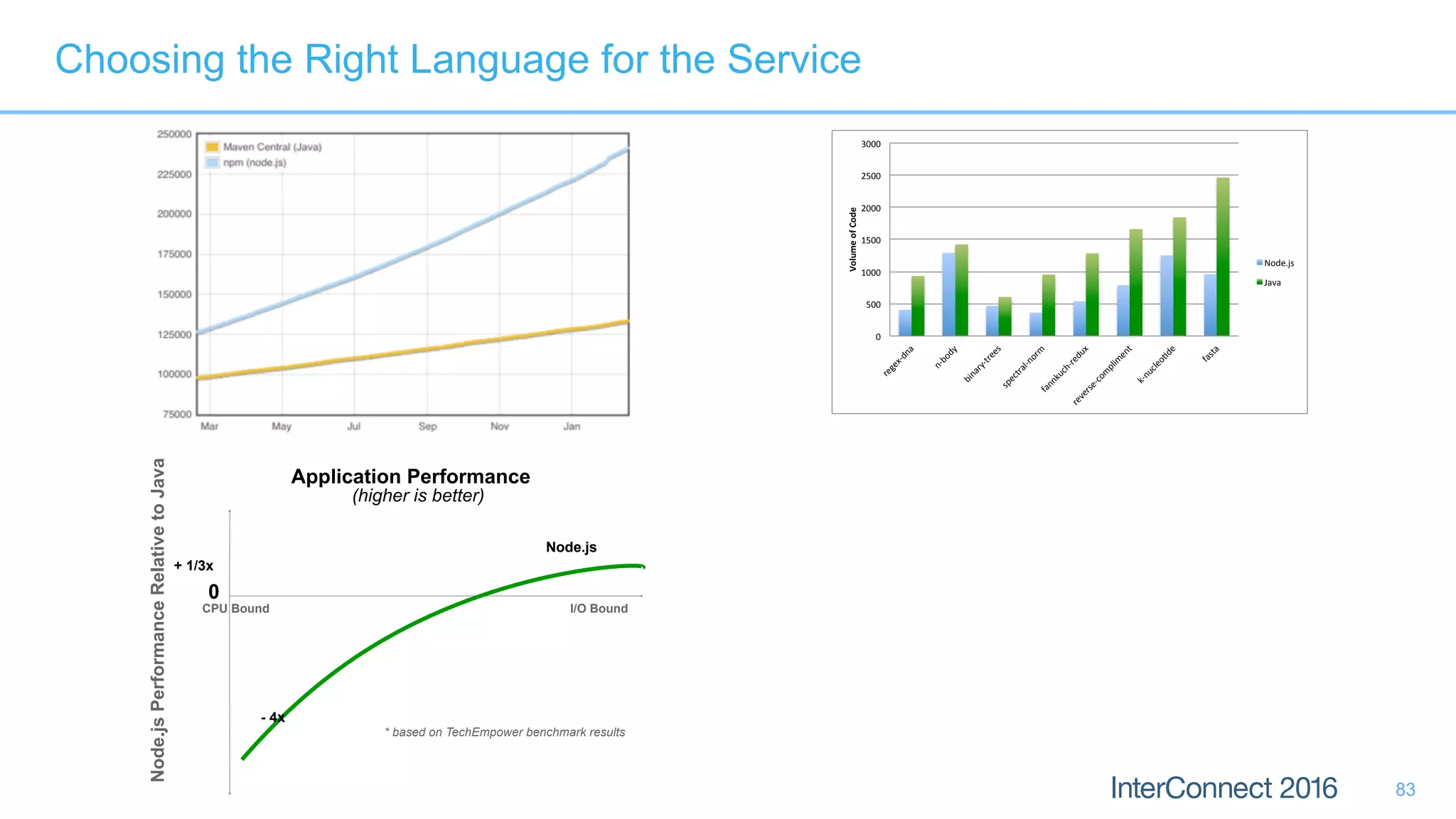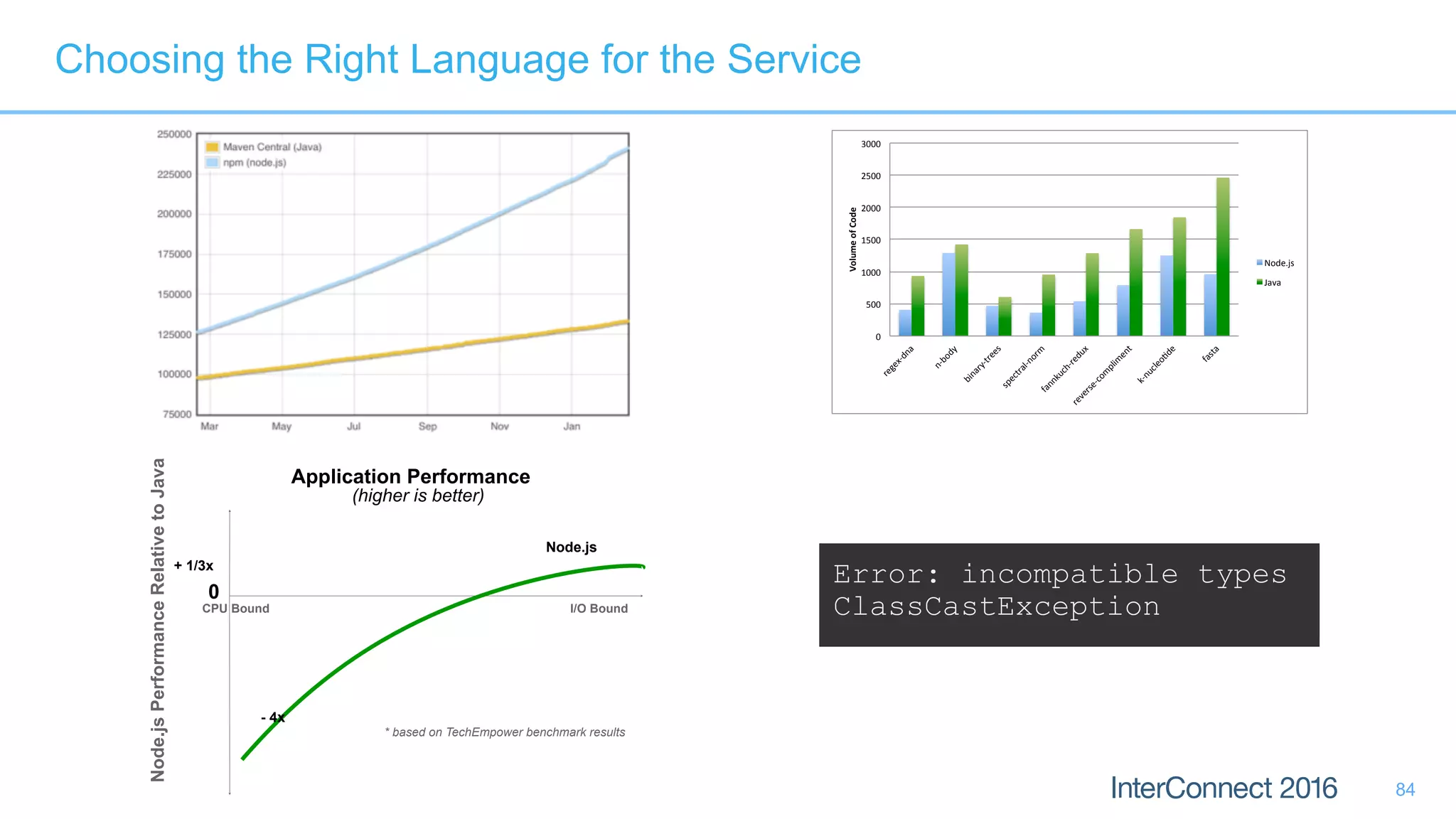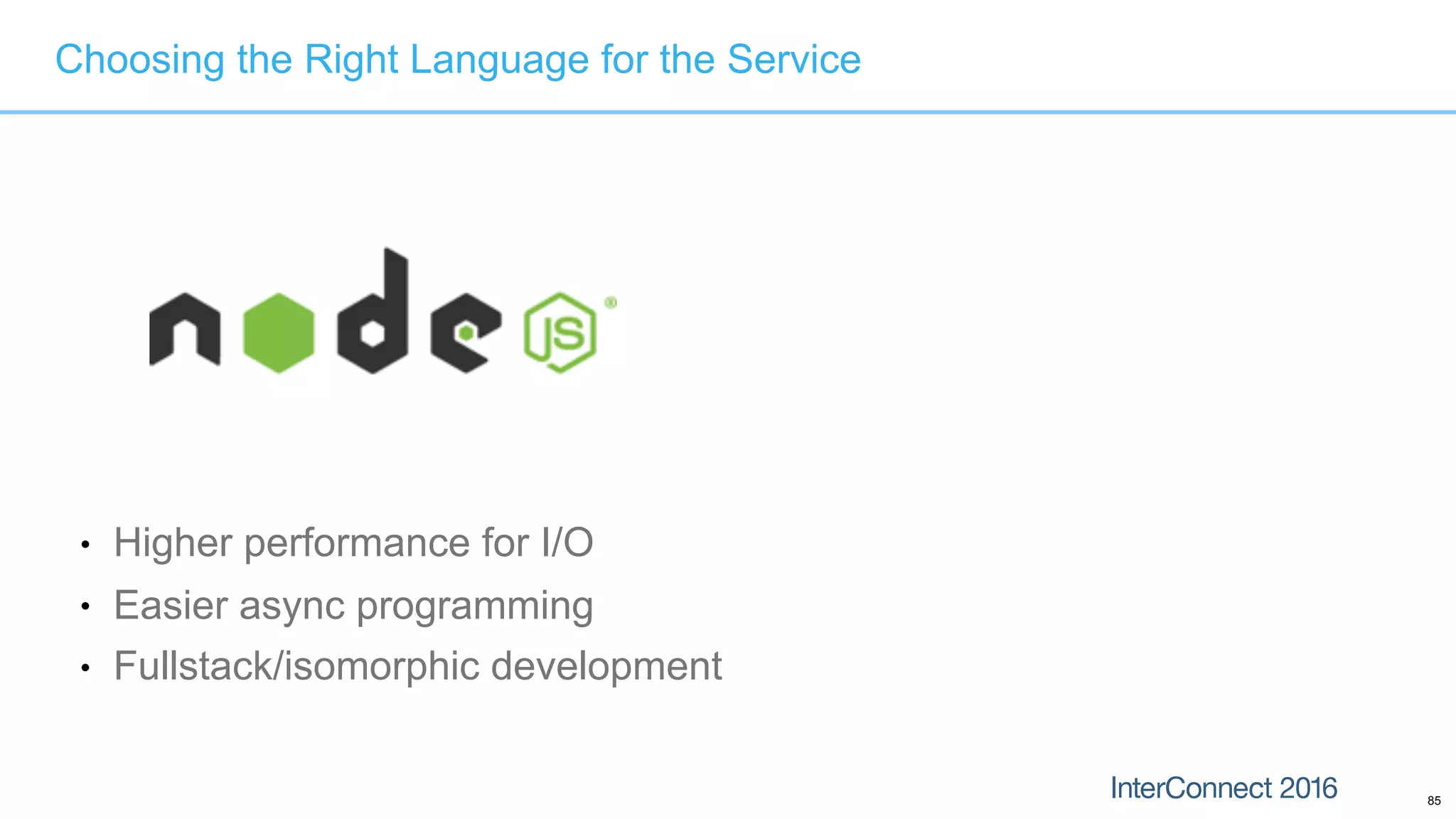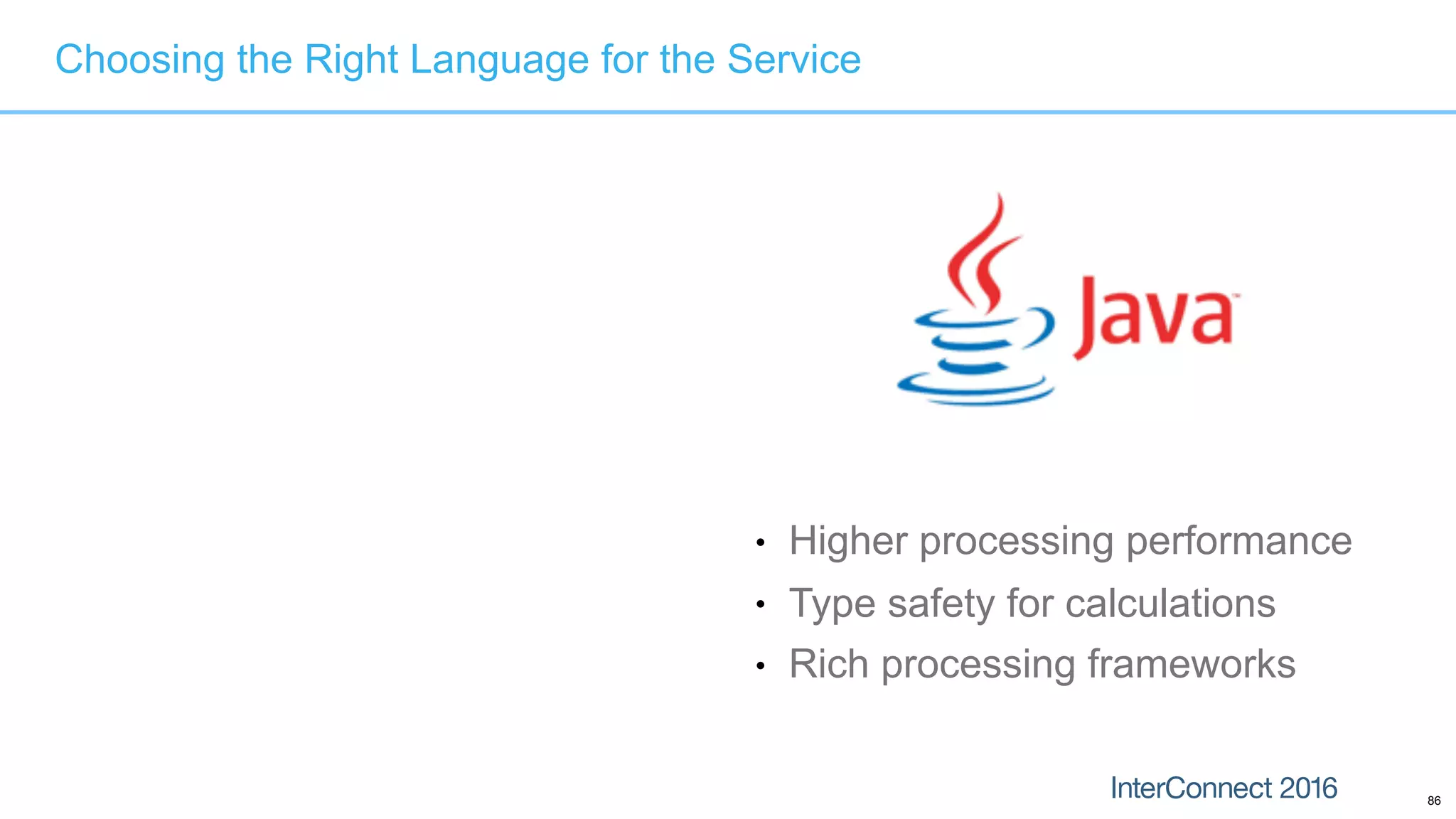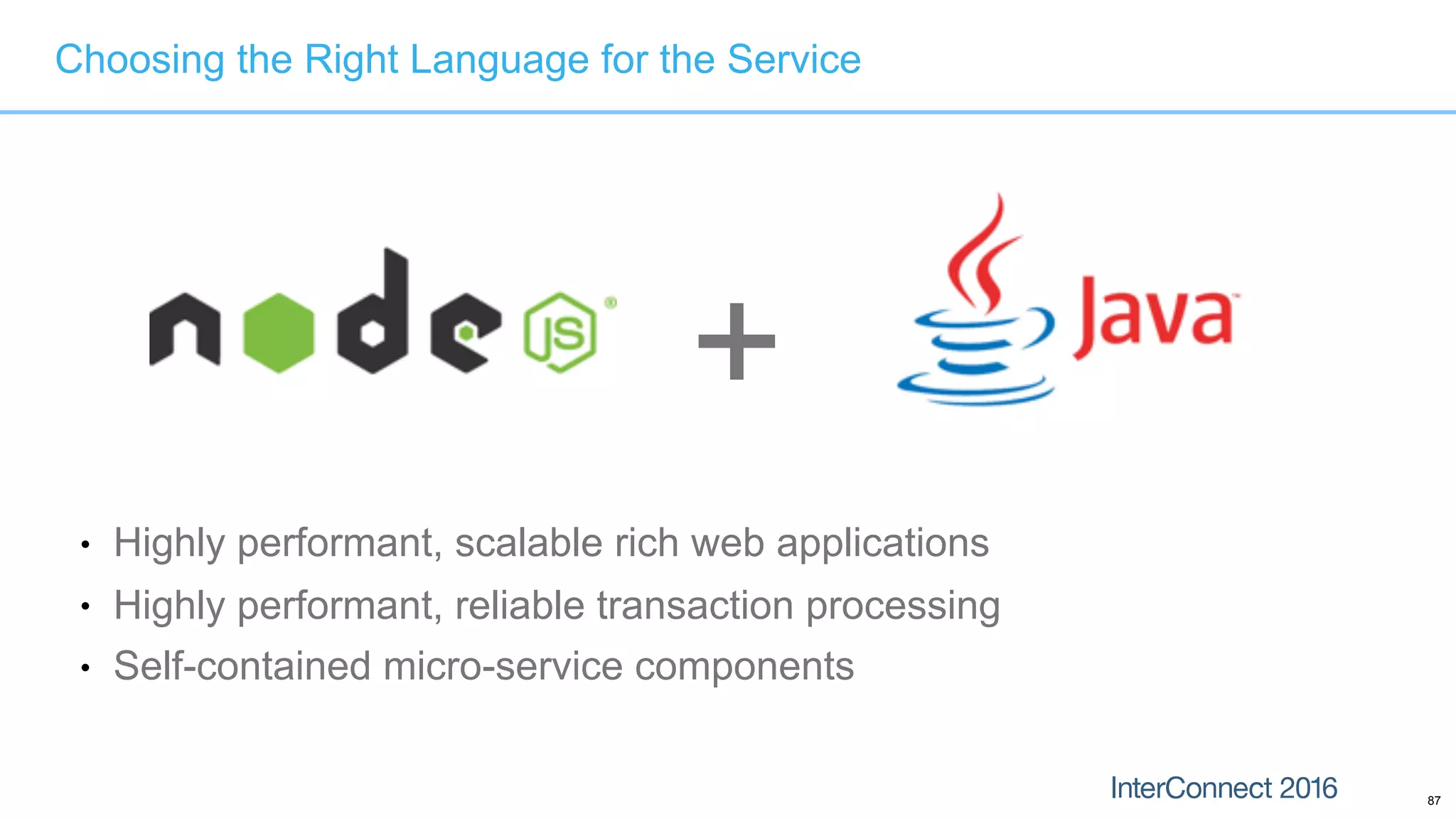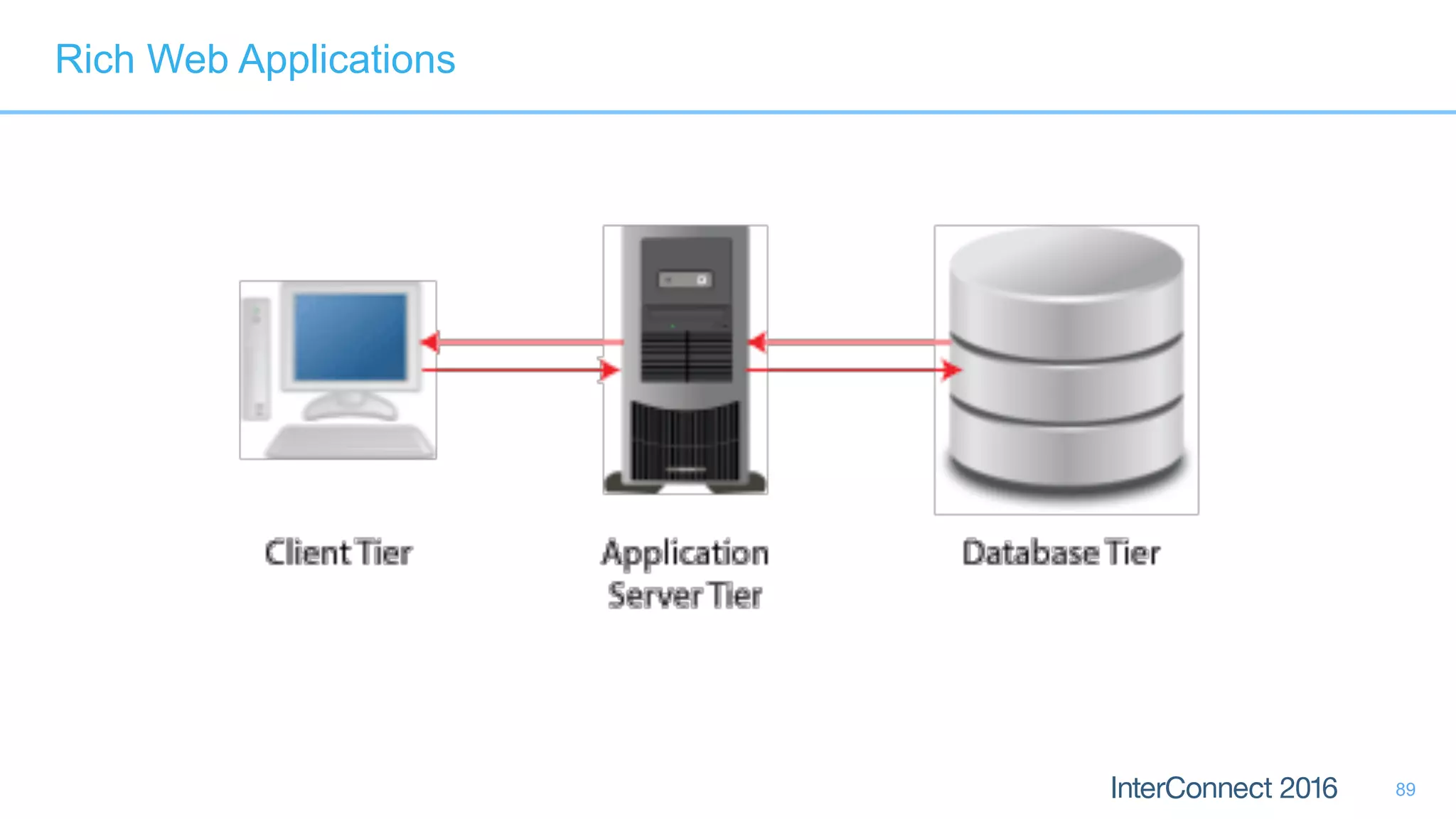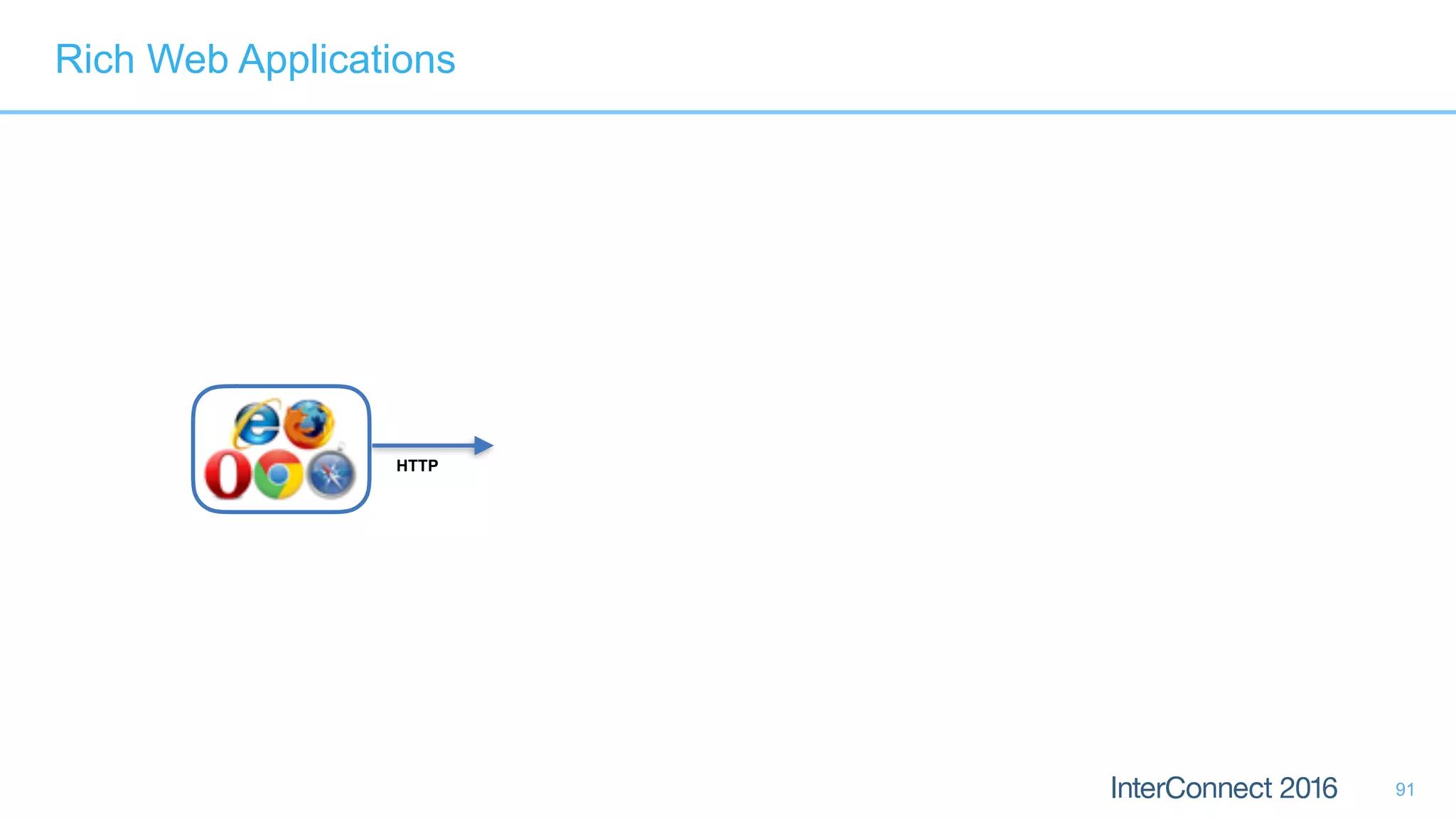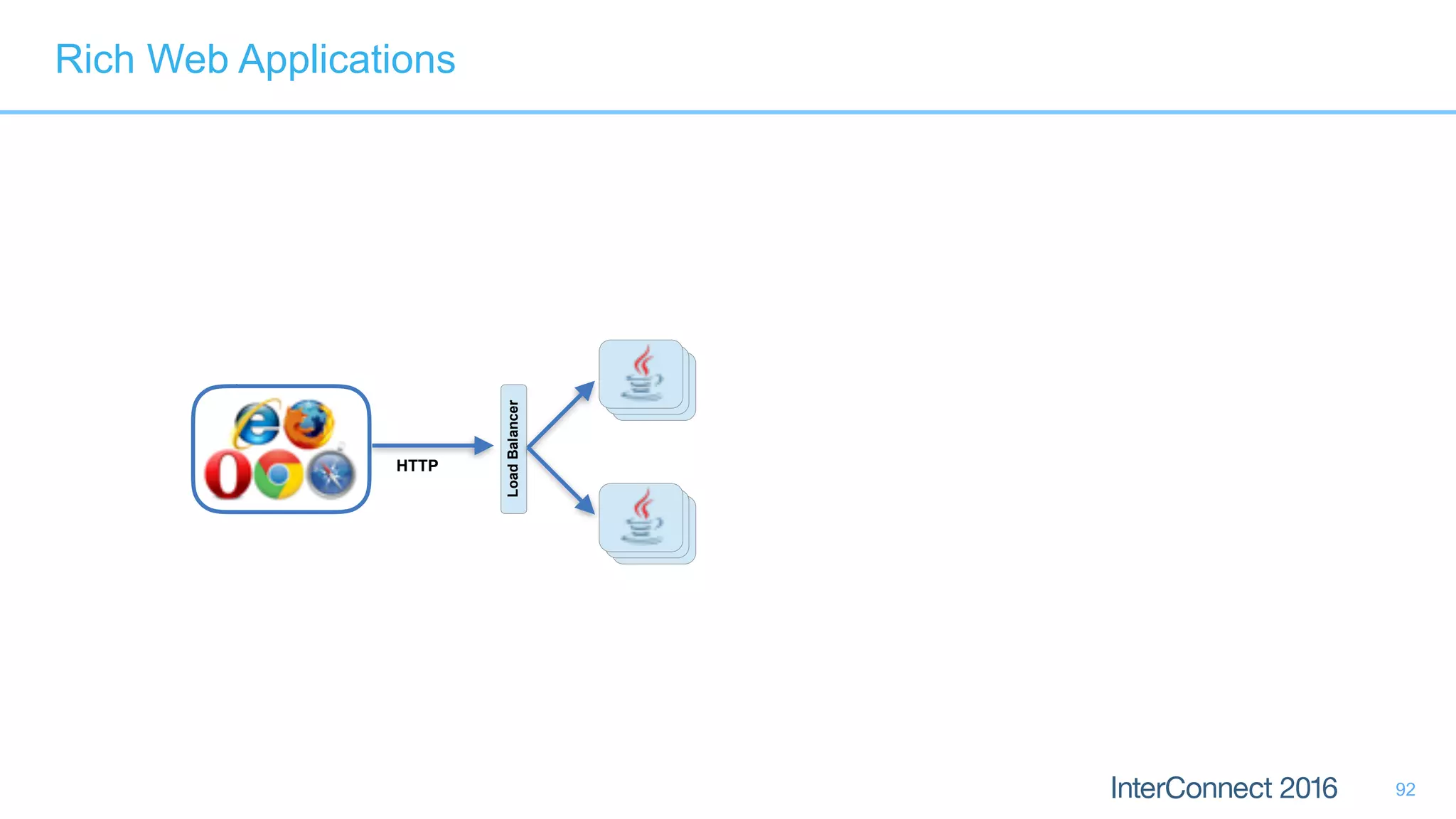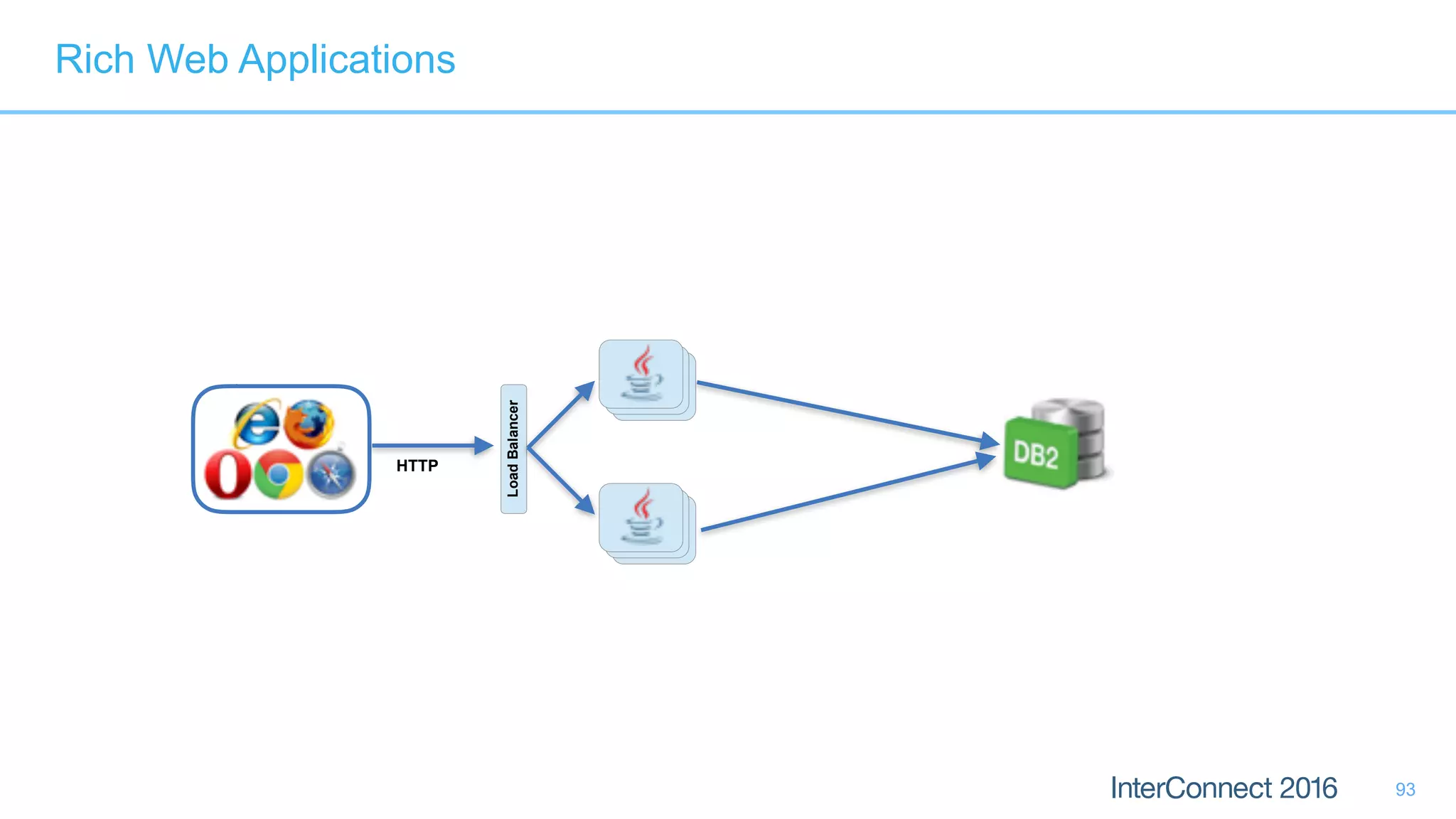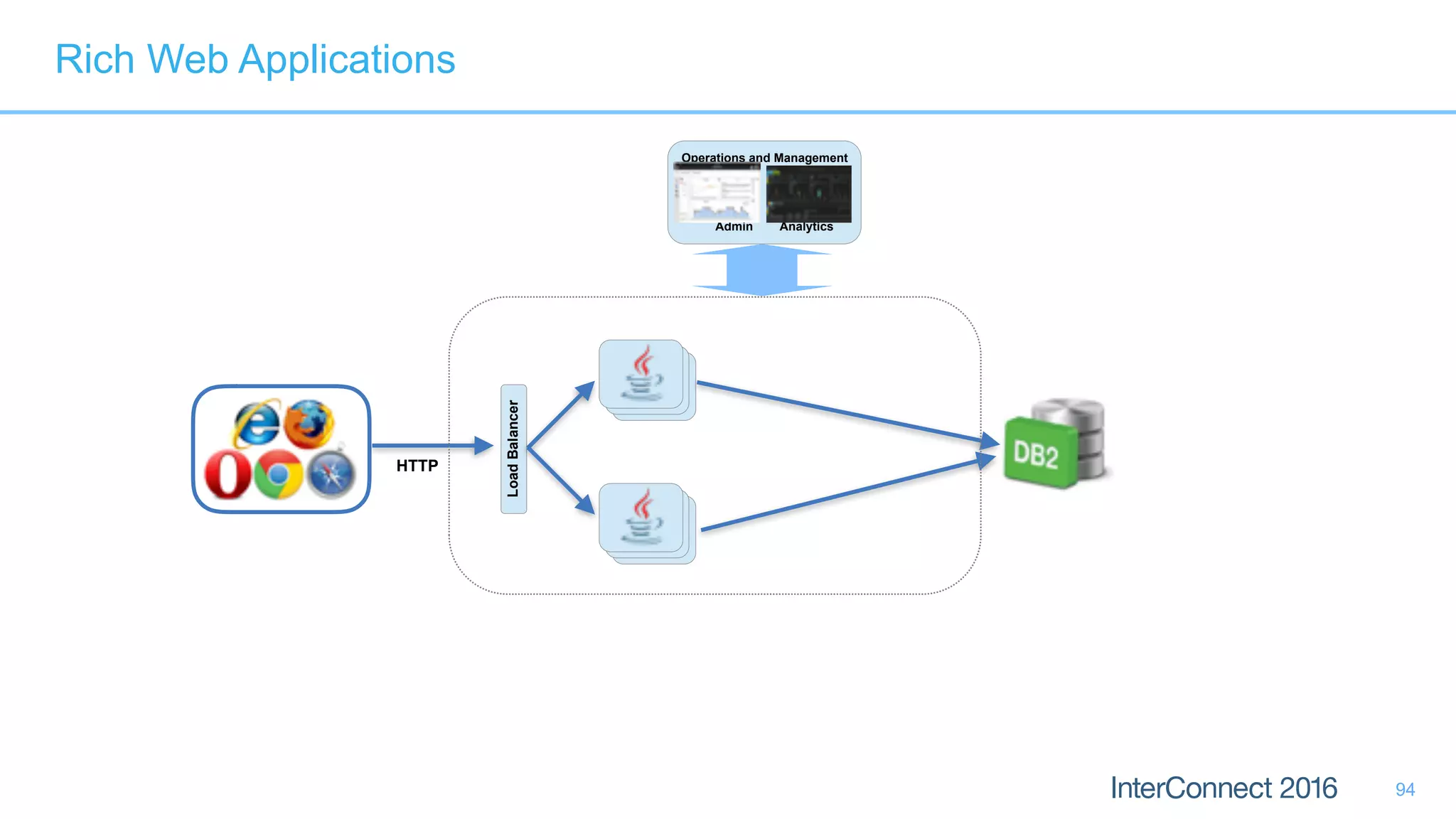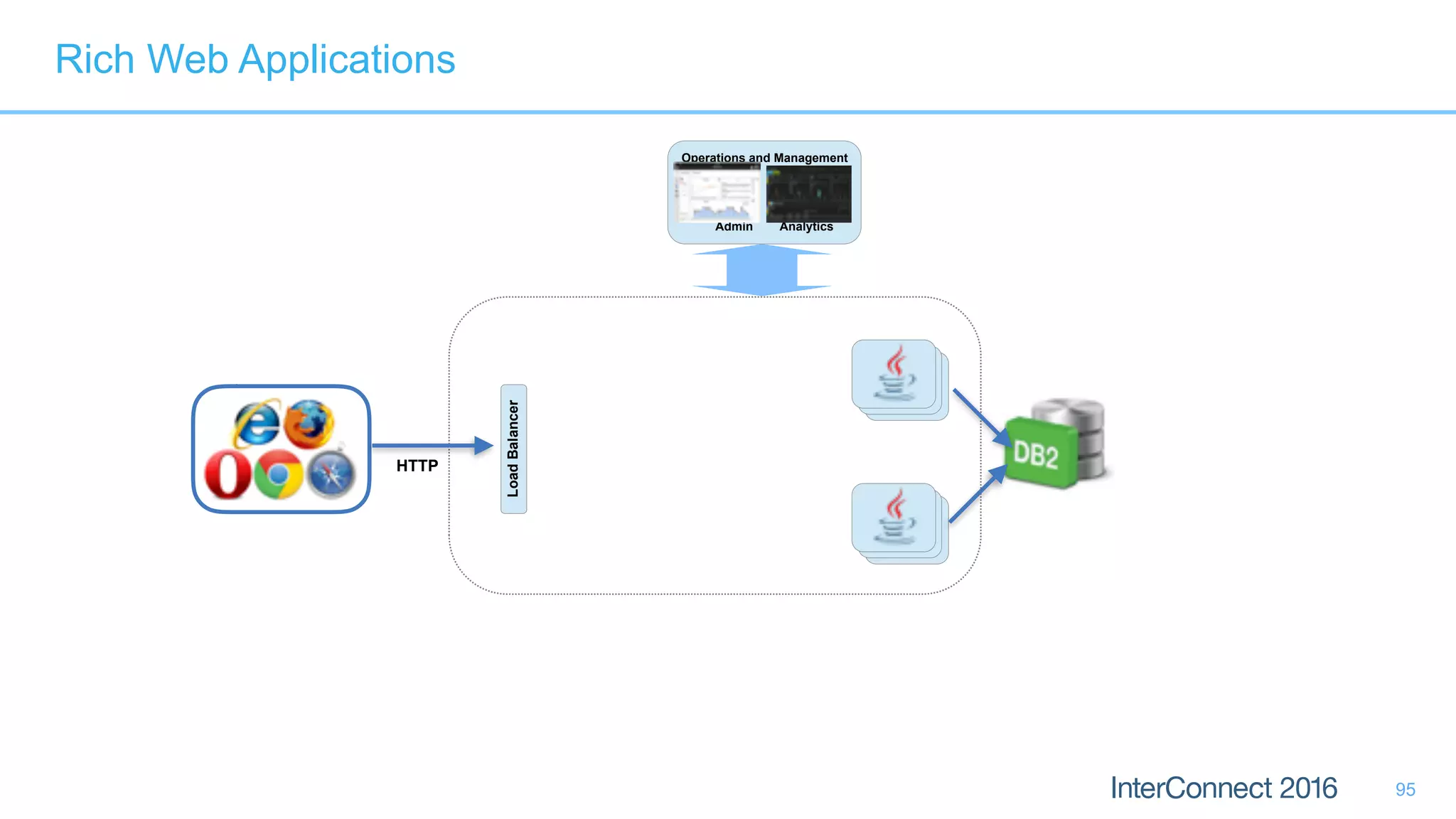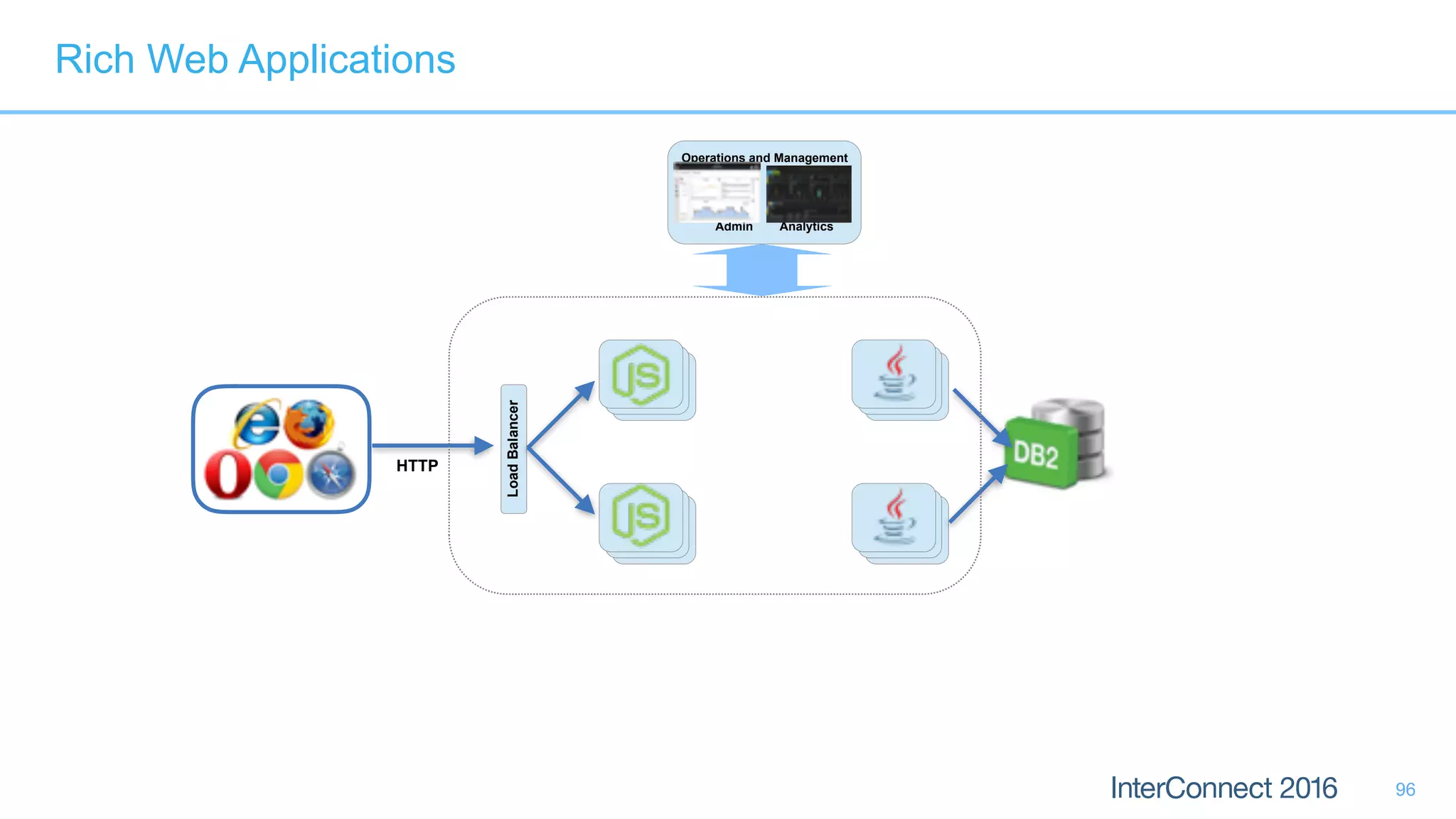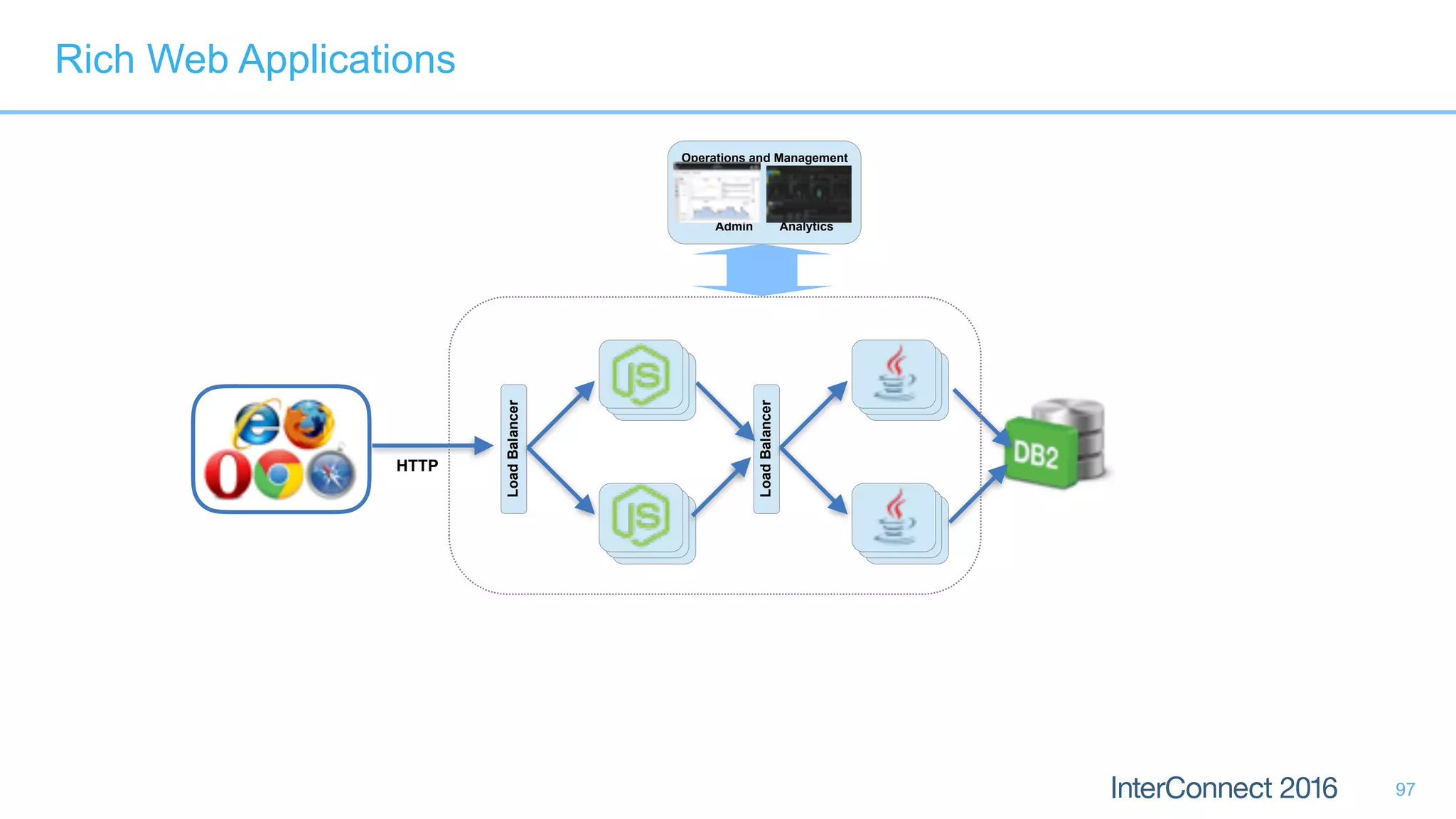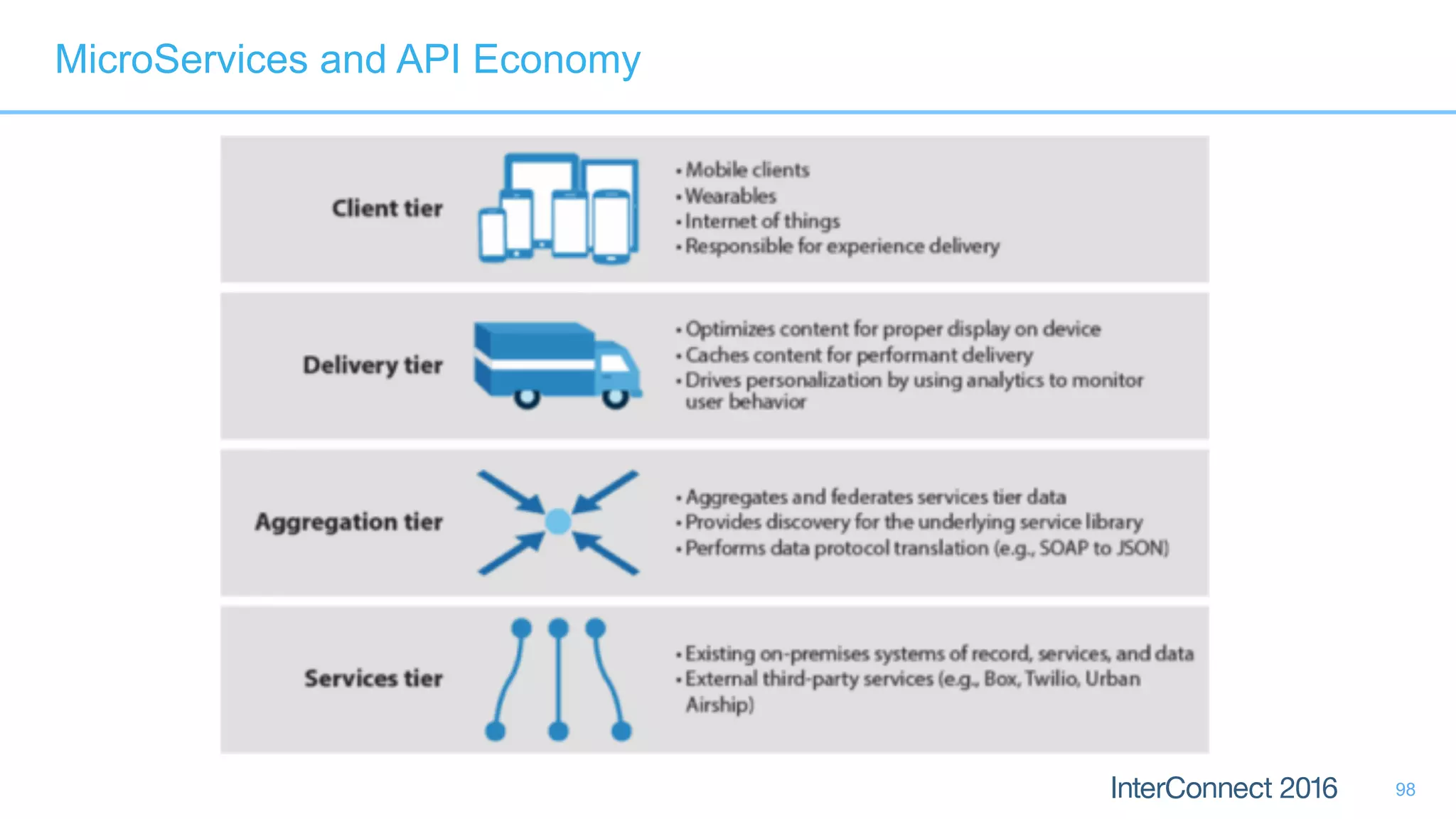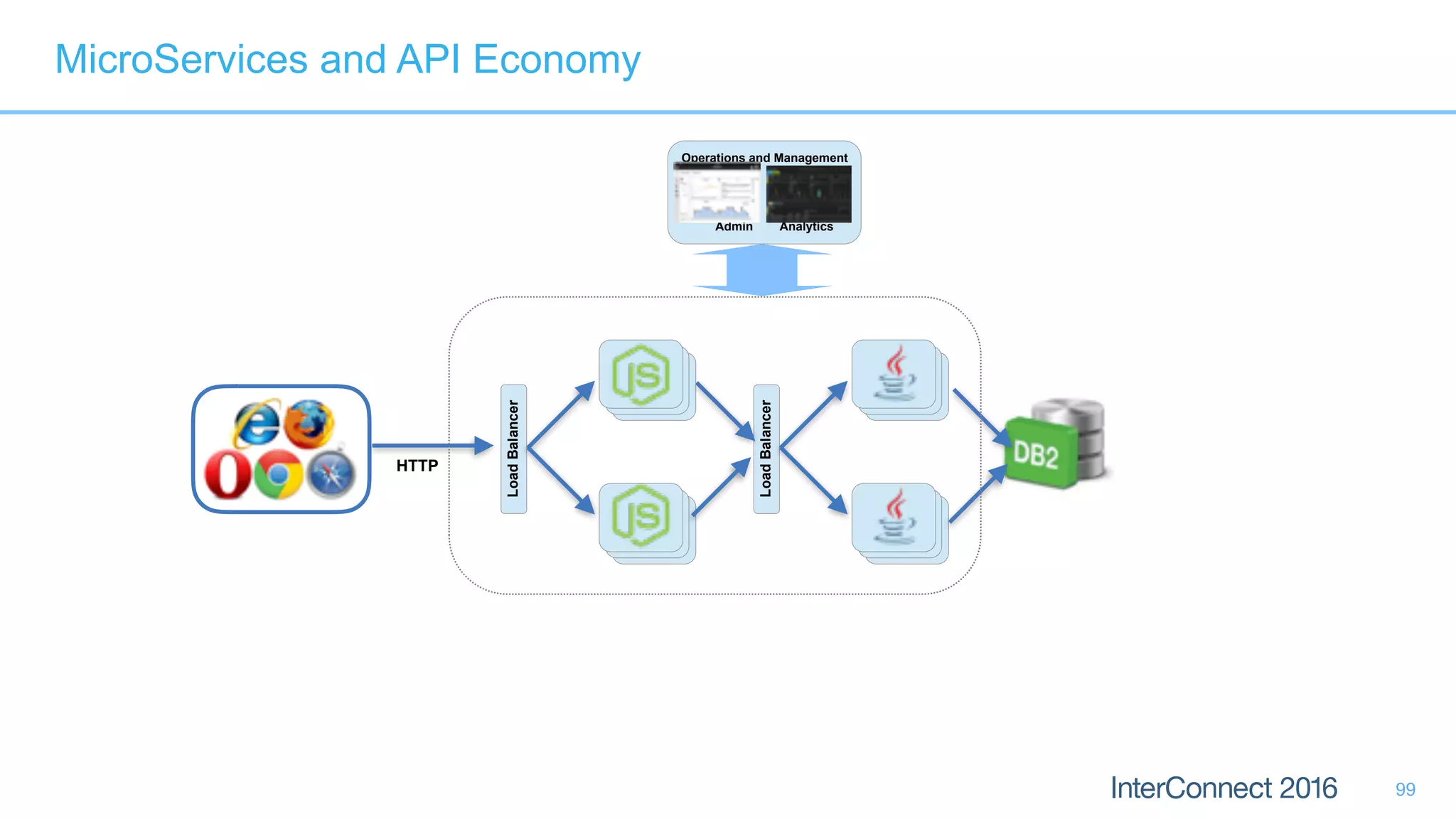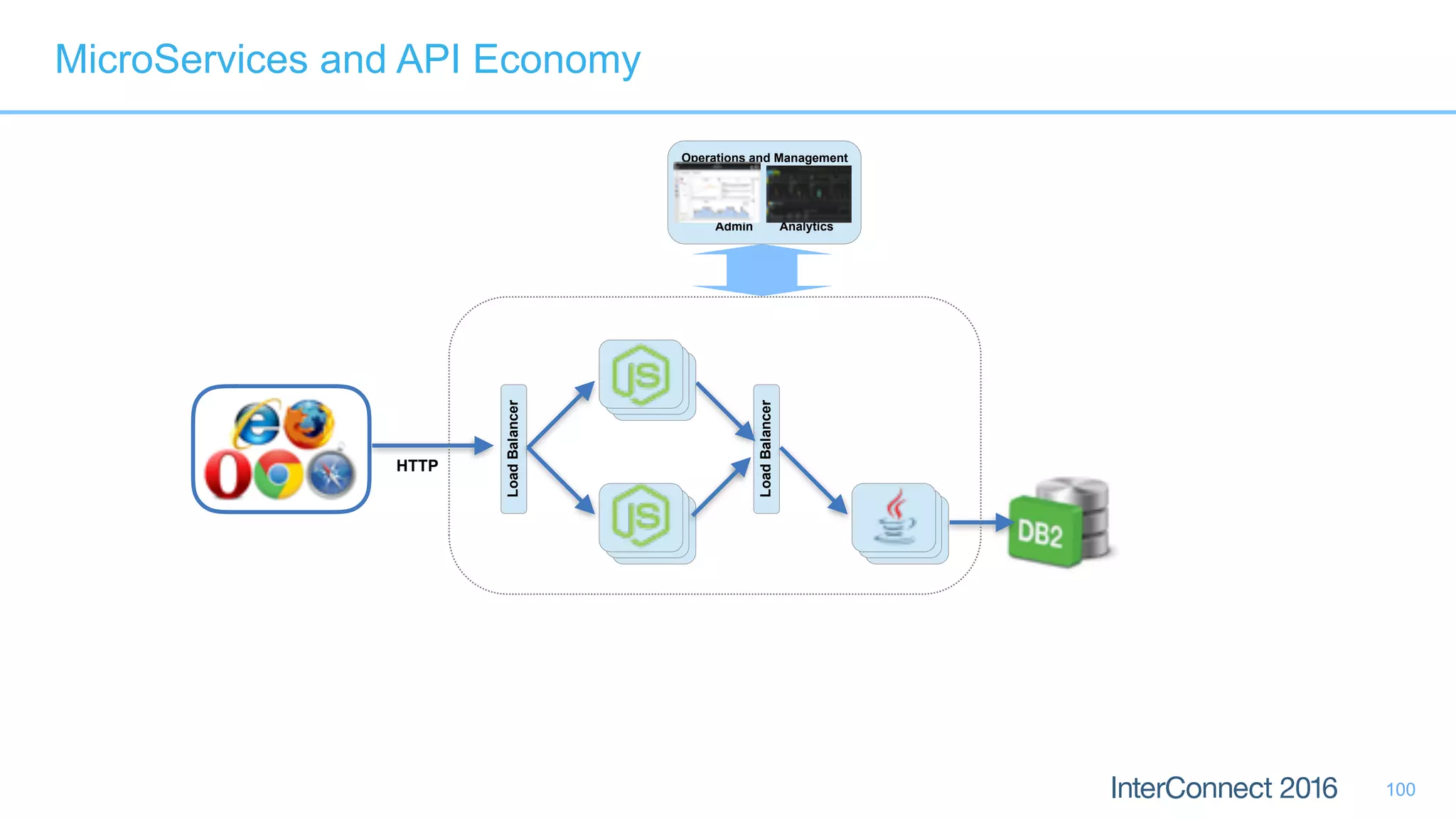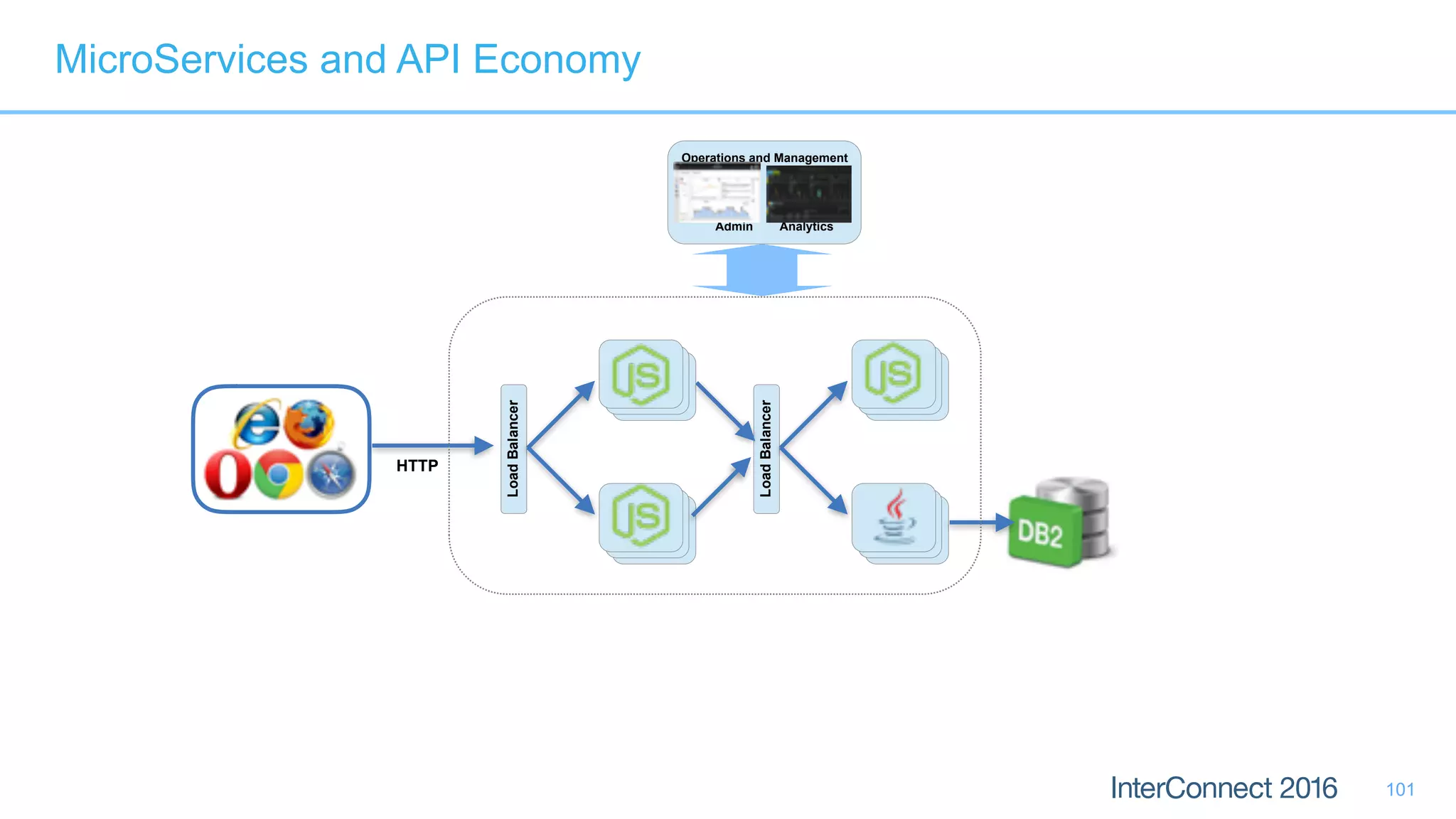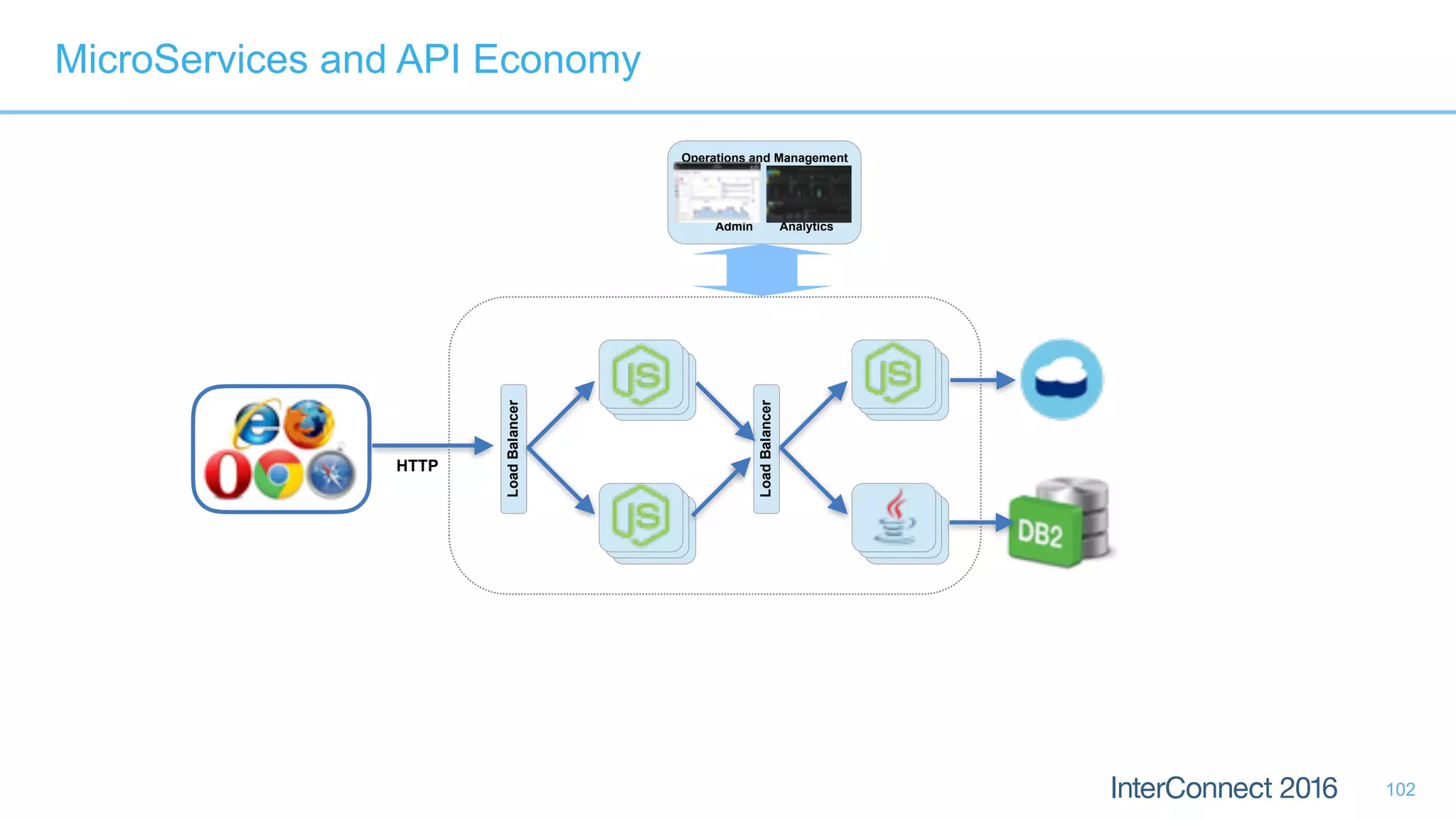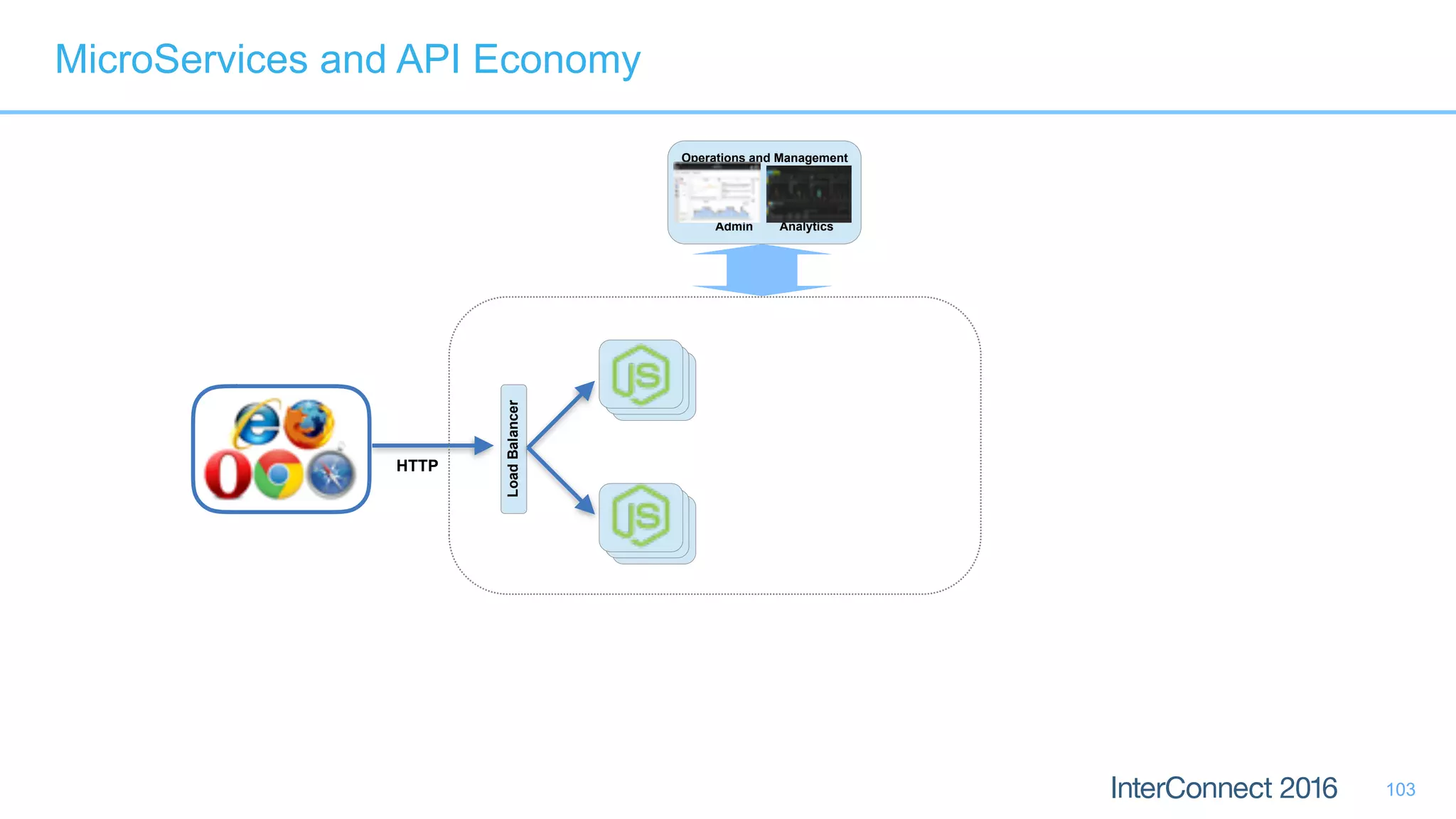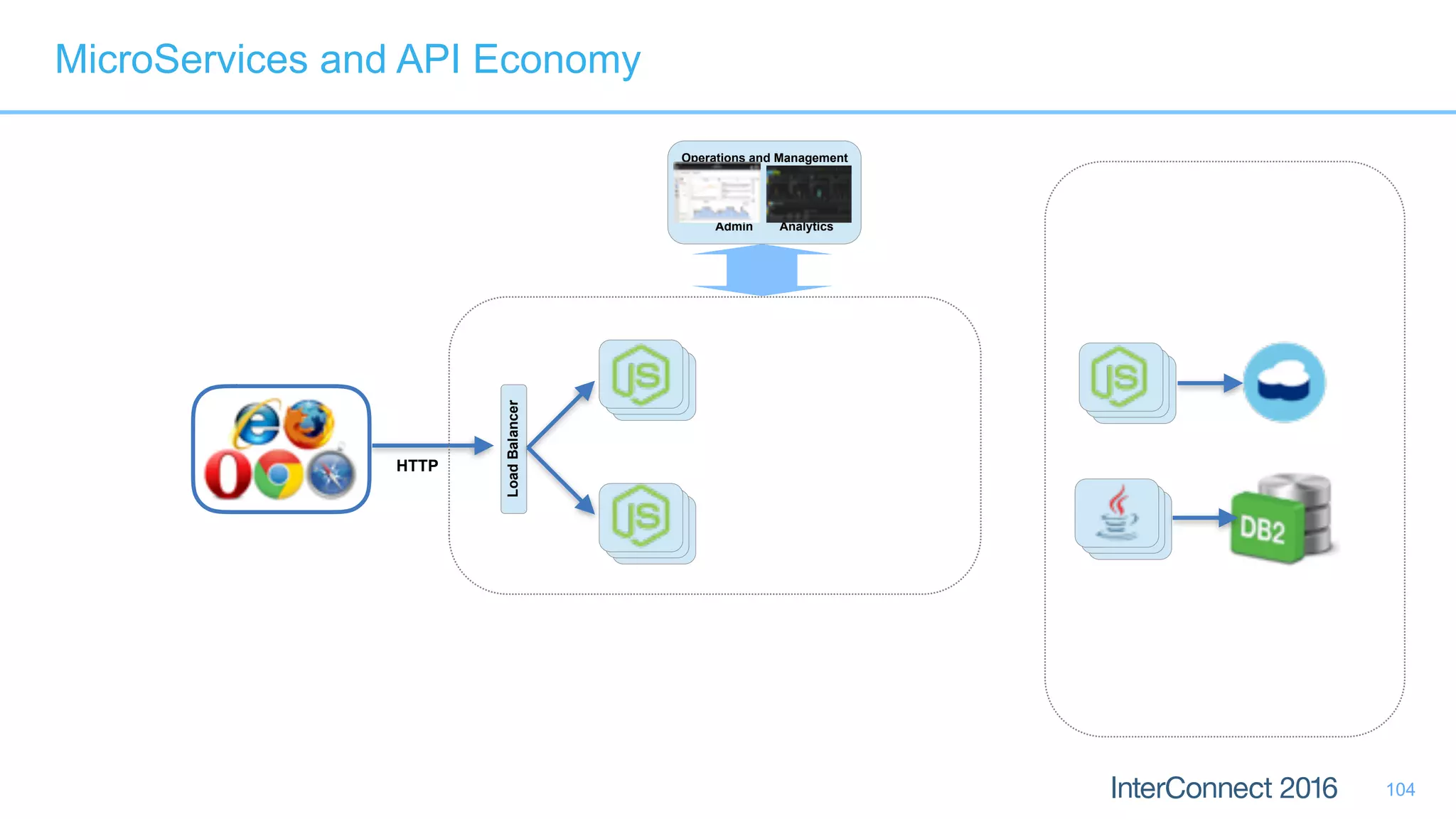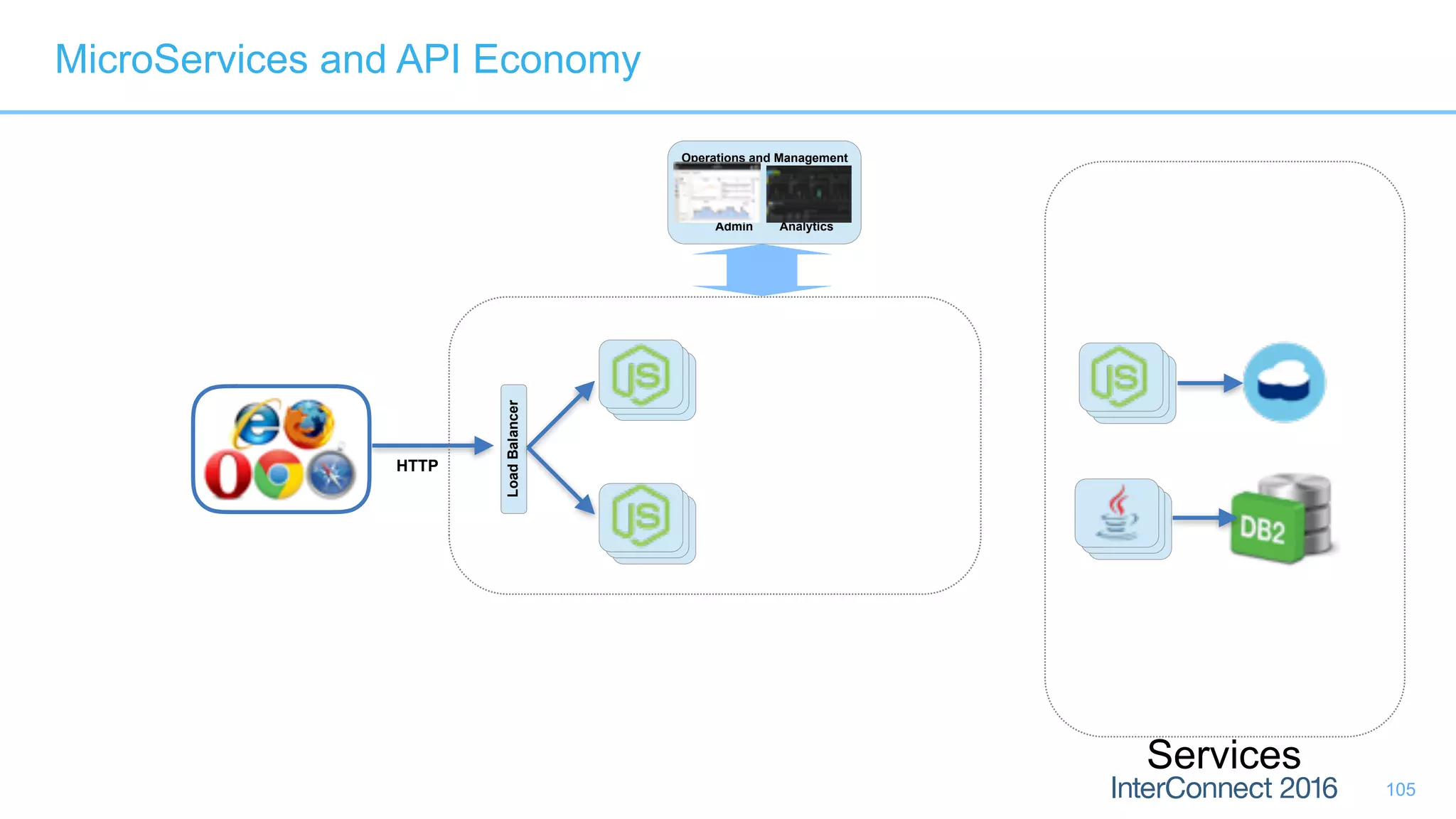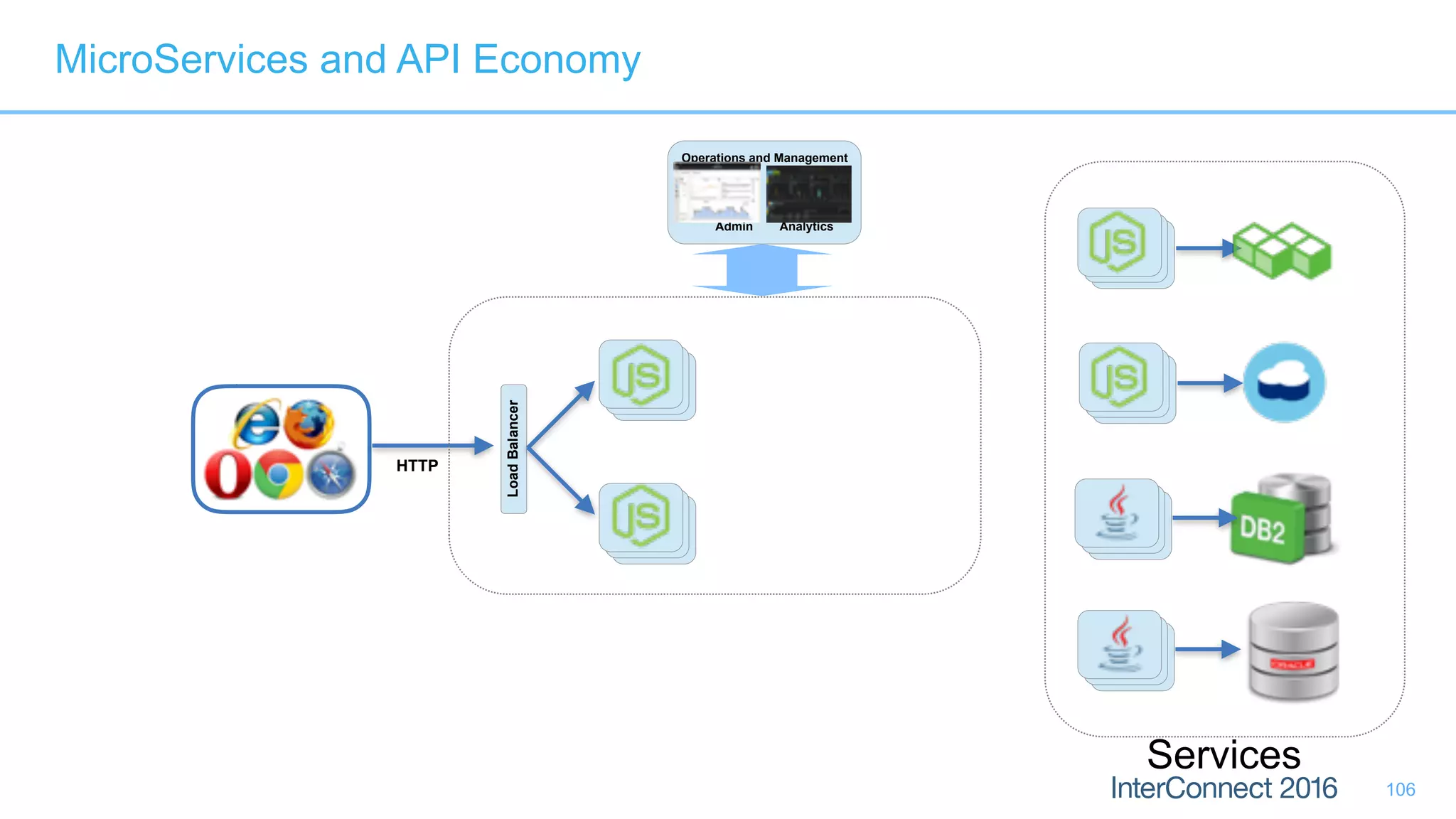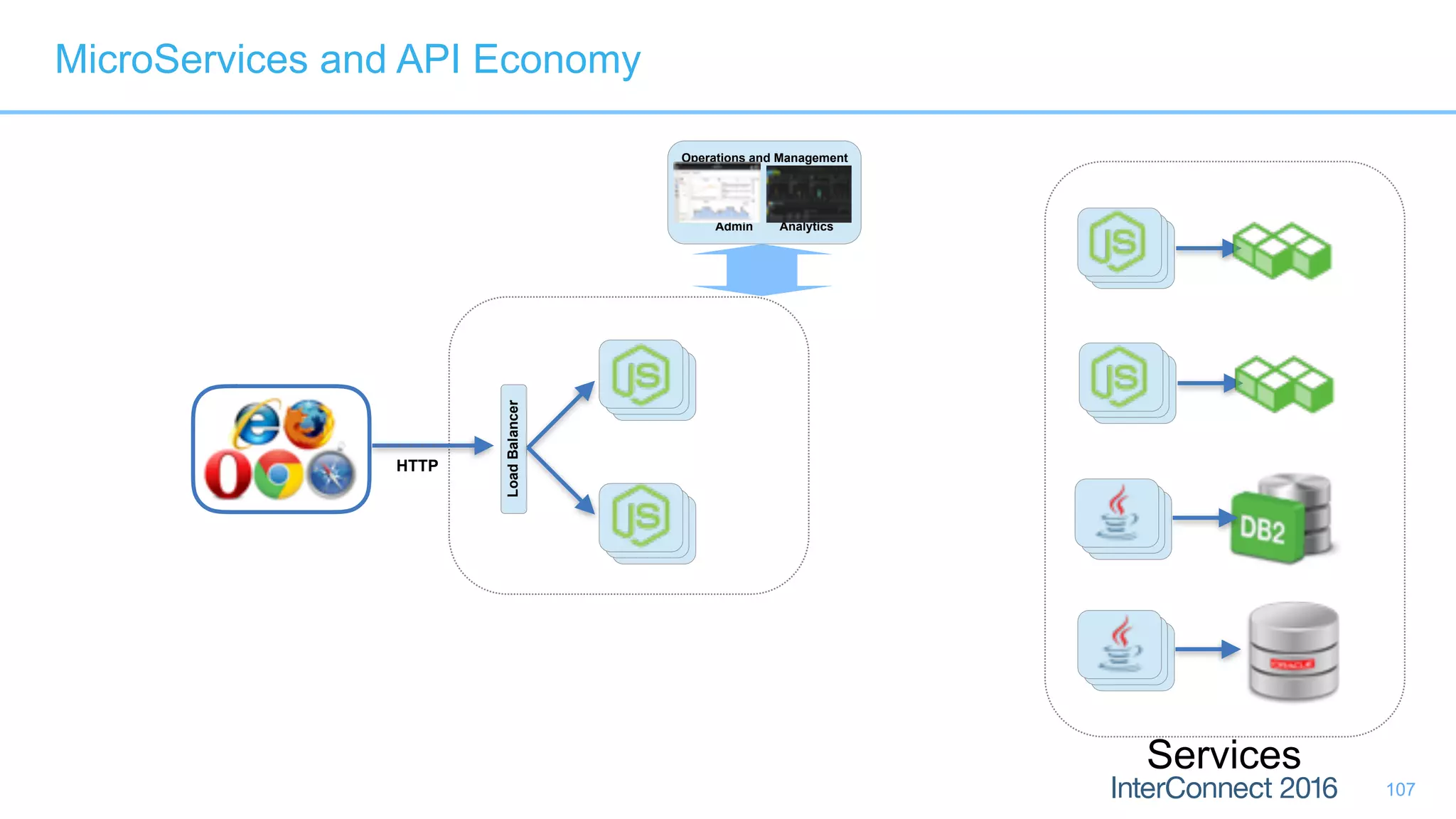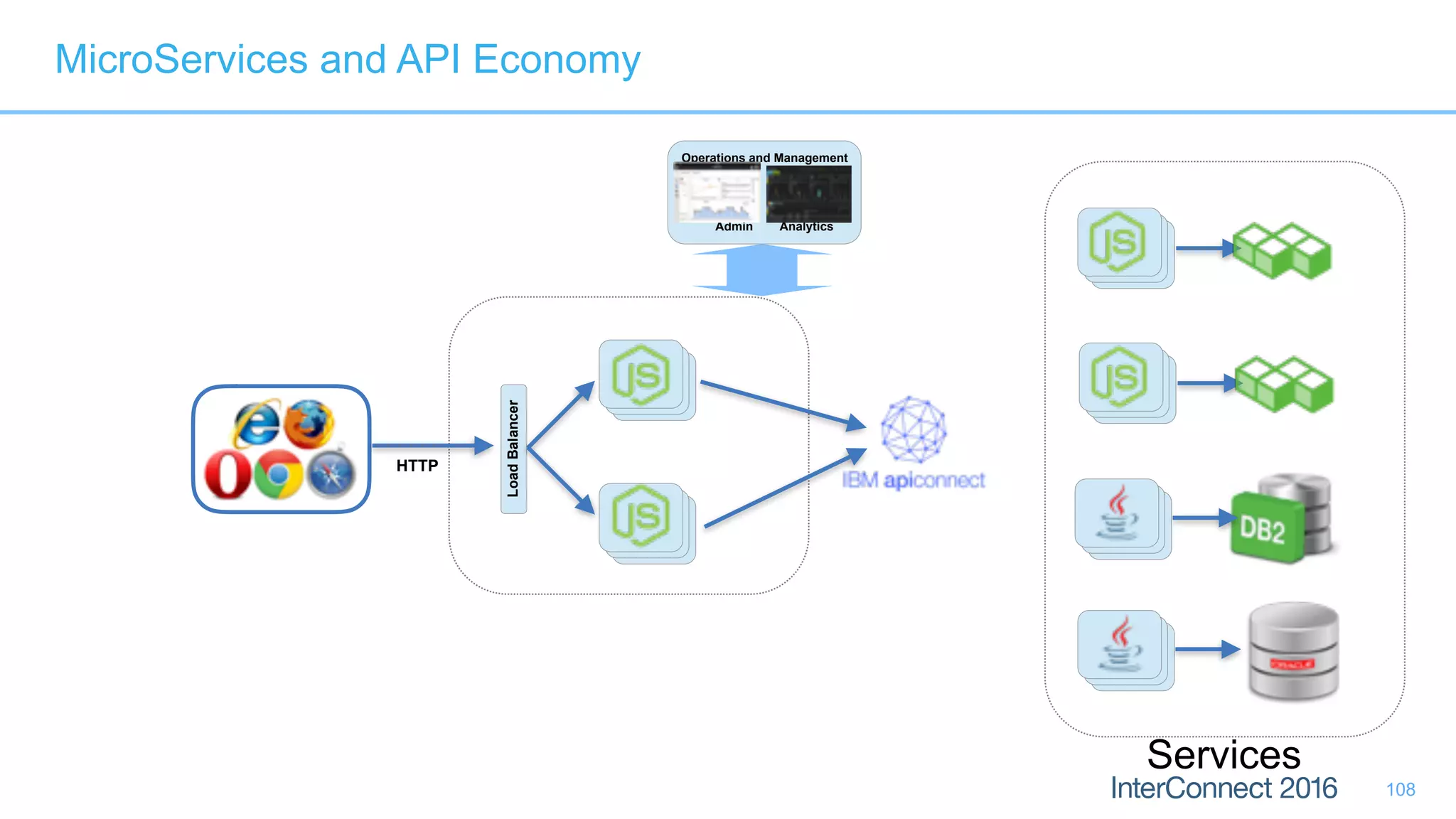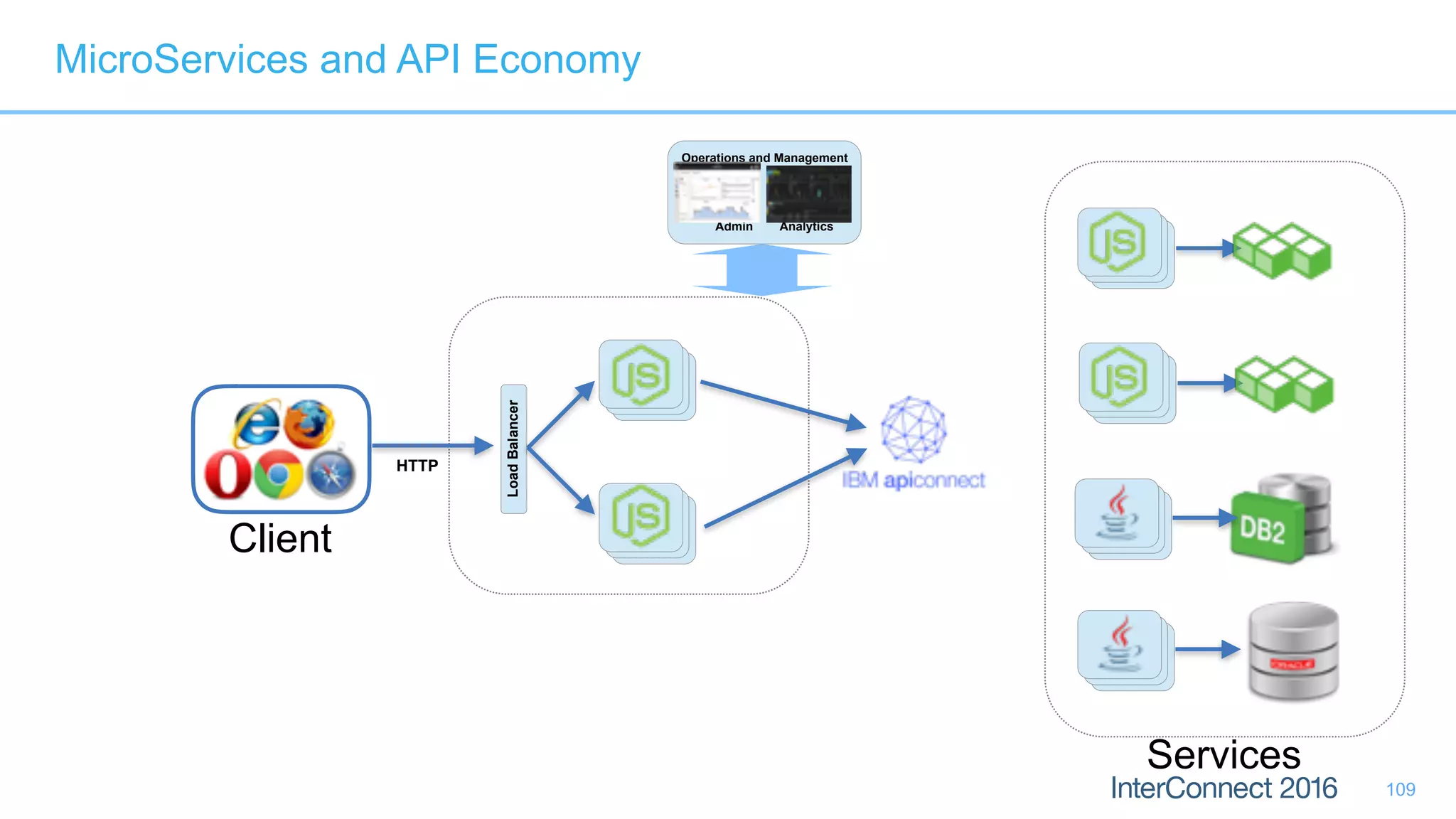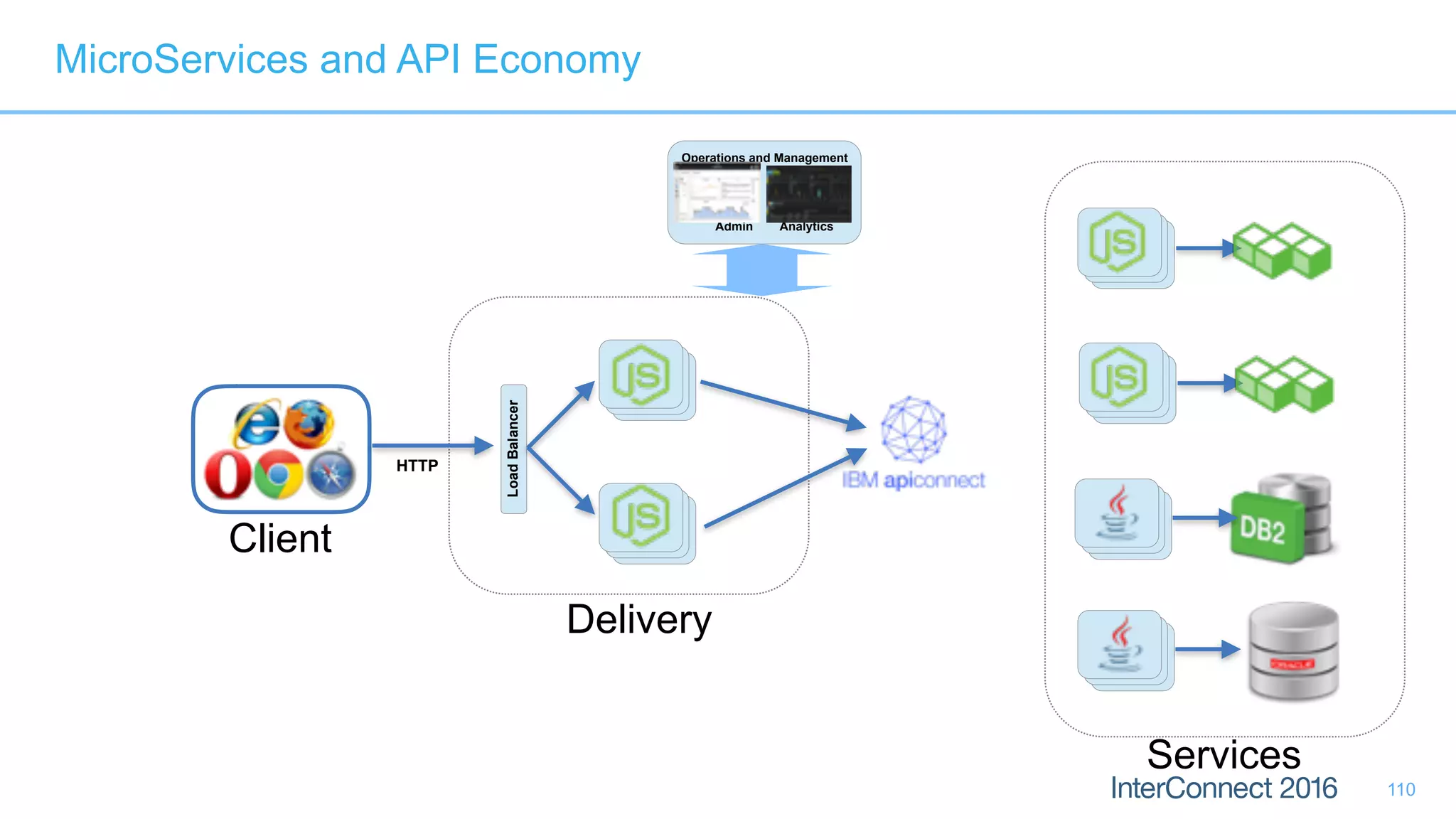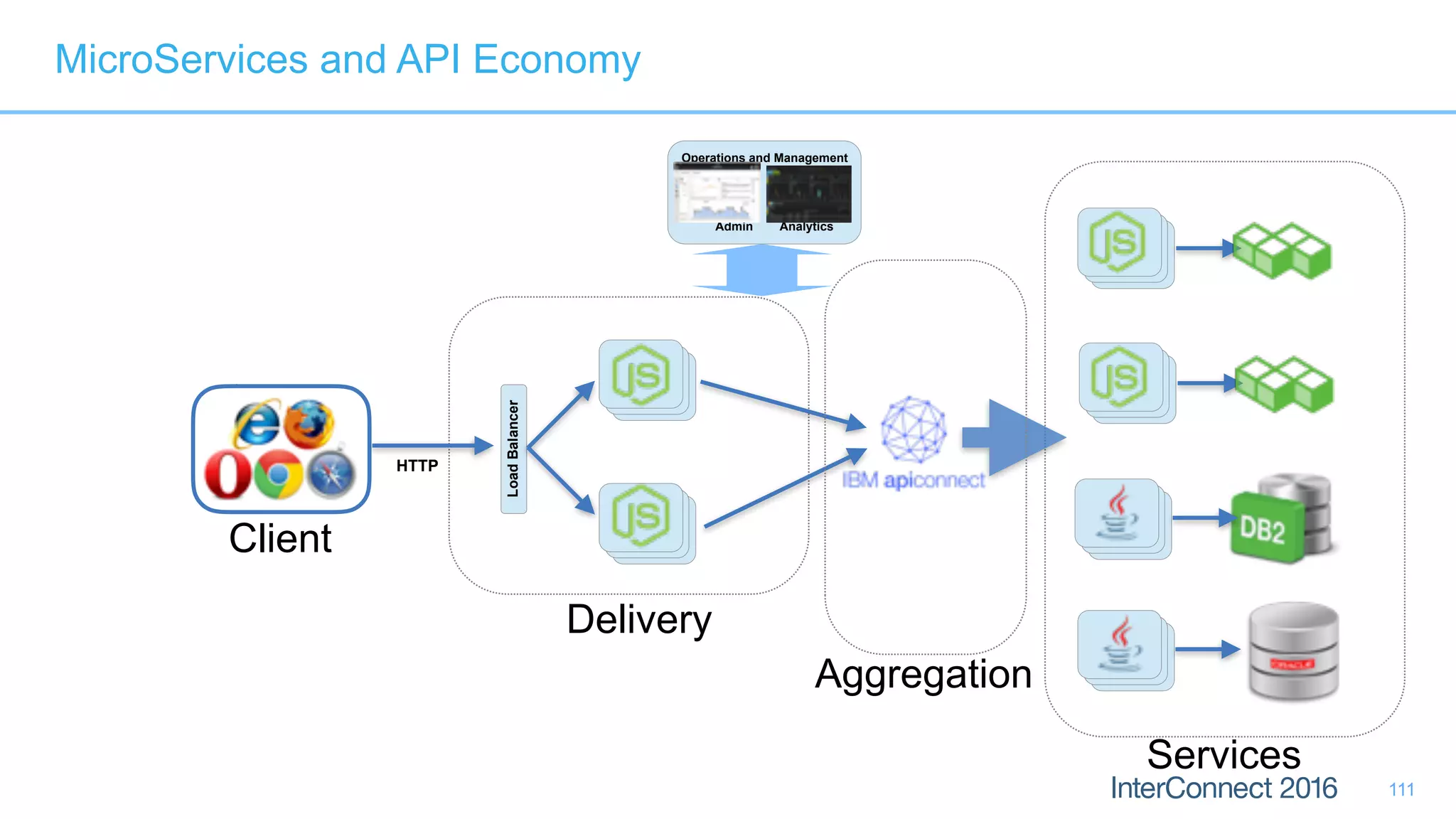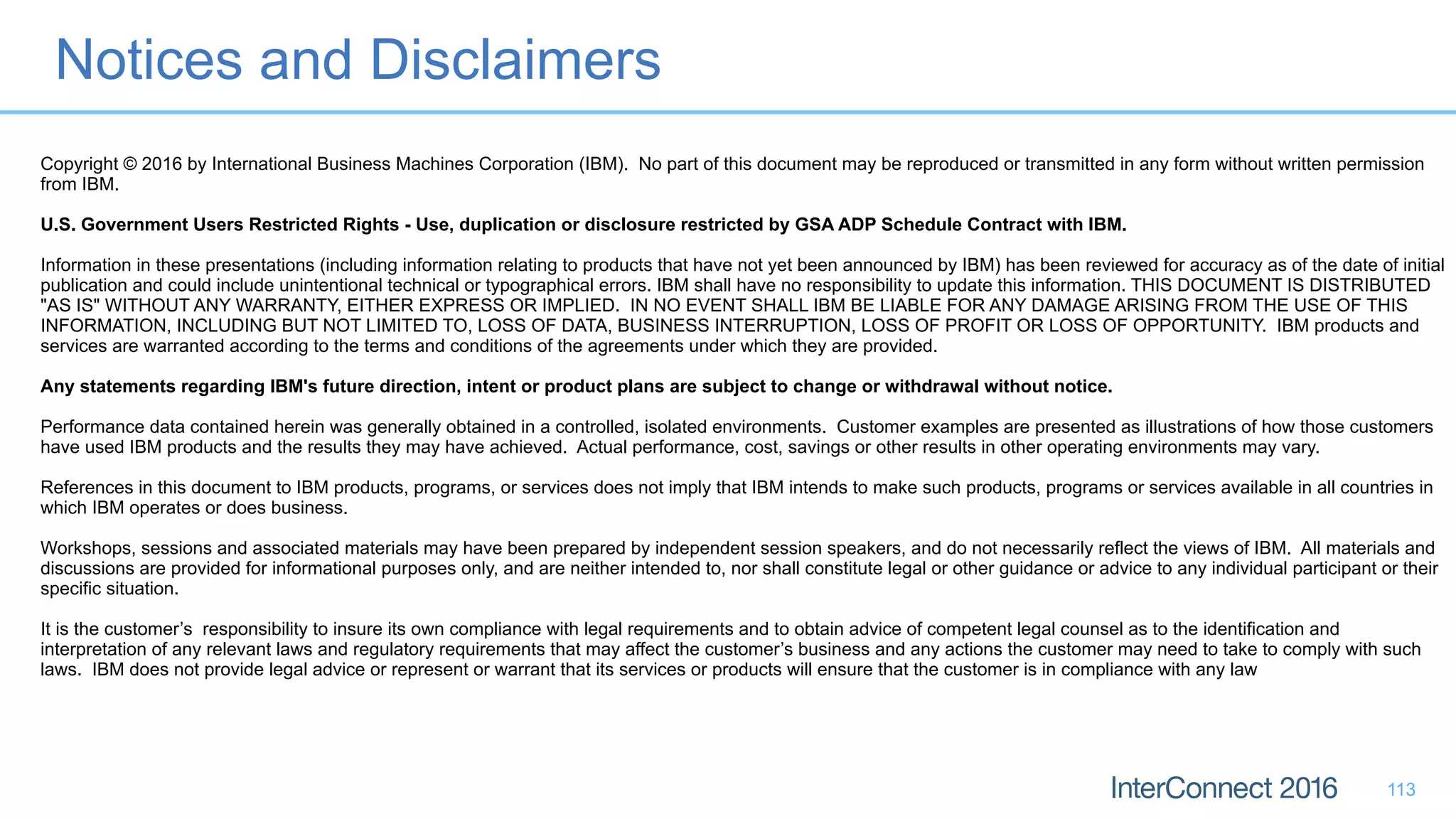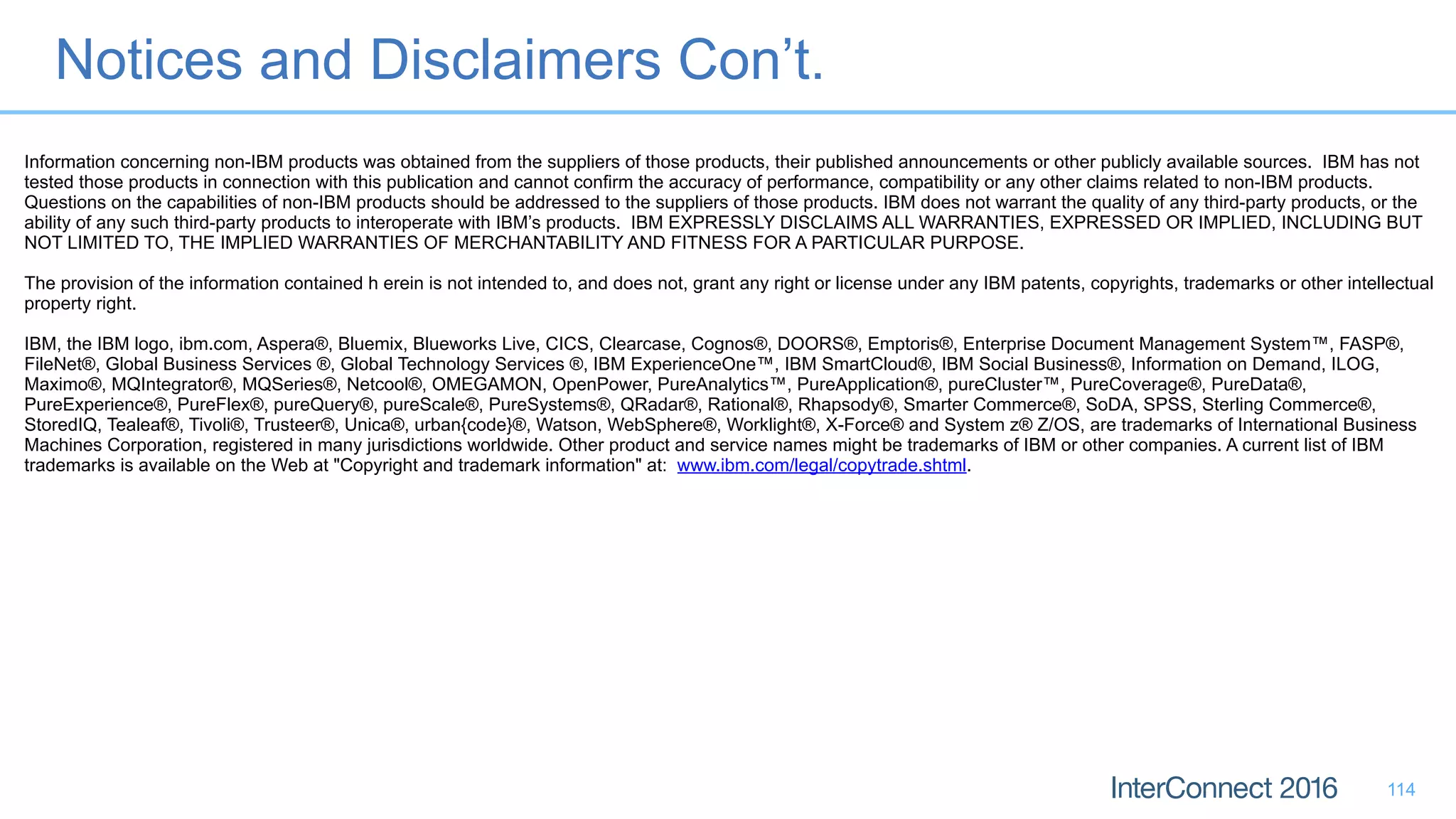The document outlines guidelines for IBM speakers regarding presentations, including mandatory slides for forward-looking content, disclaimers, and submission instructions. It also compares web app architectures using Java and Node.js, highlighting advantages such as developer productivity and scalability differences. Additionally, it emphasizes the importance of adhering to legal and copyright considerations when using visual content.

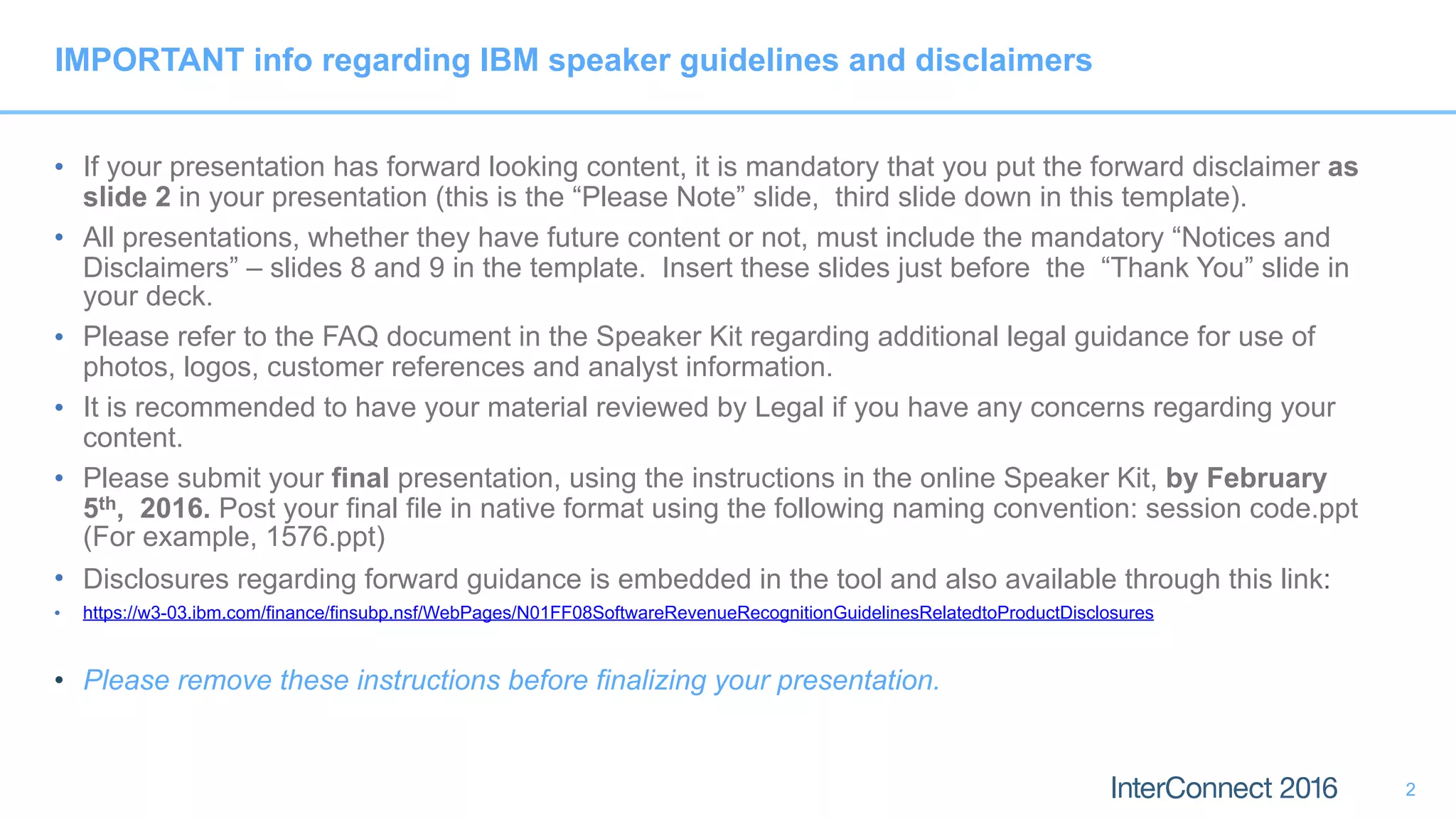
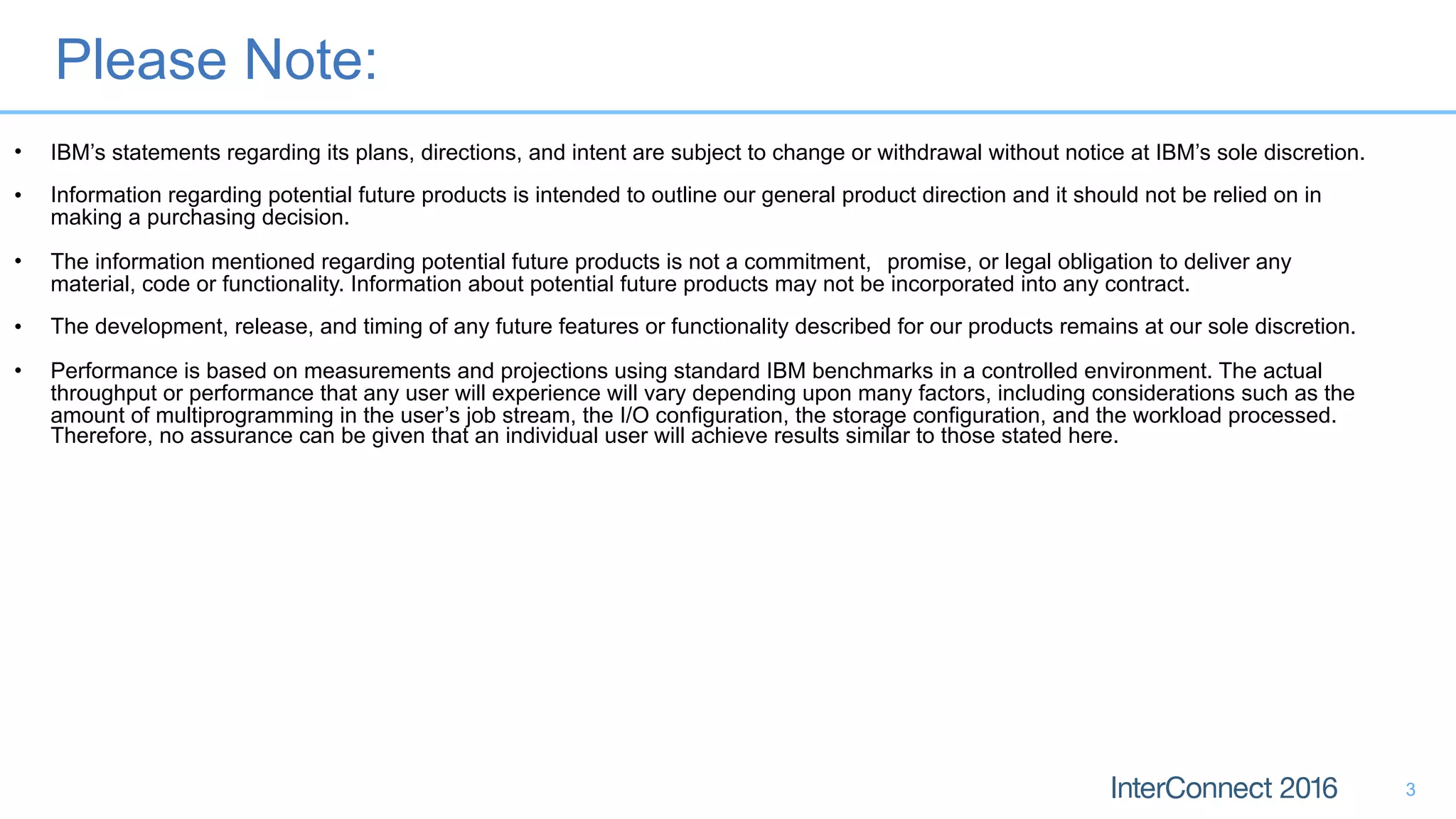
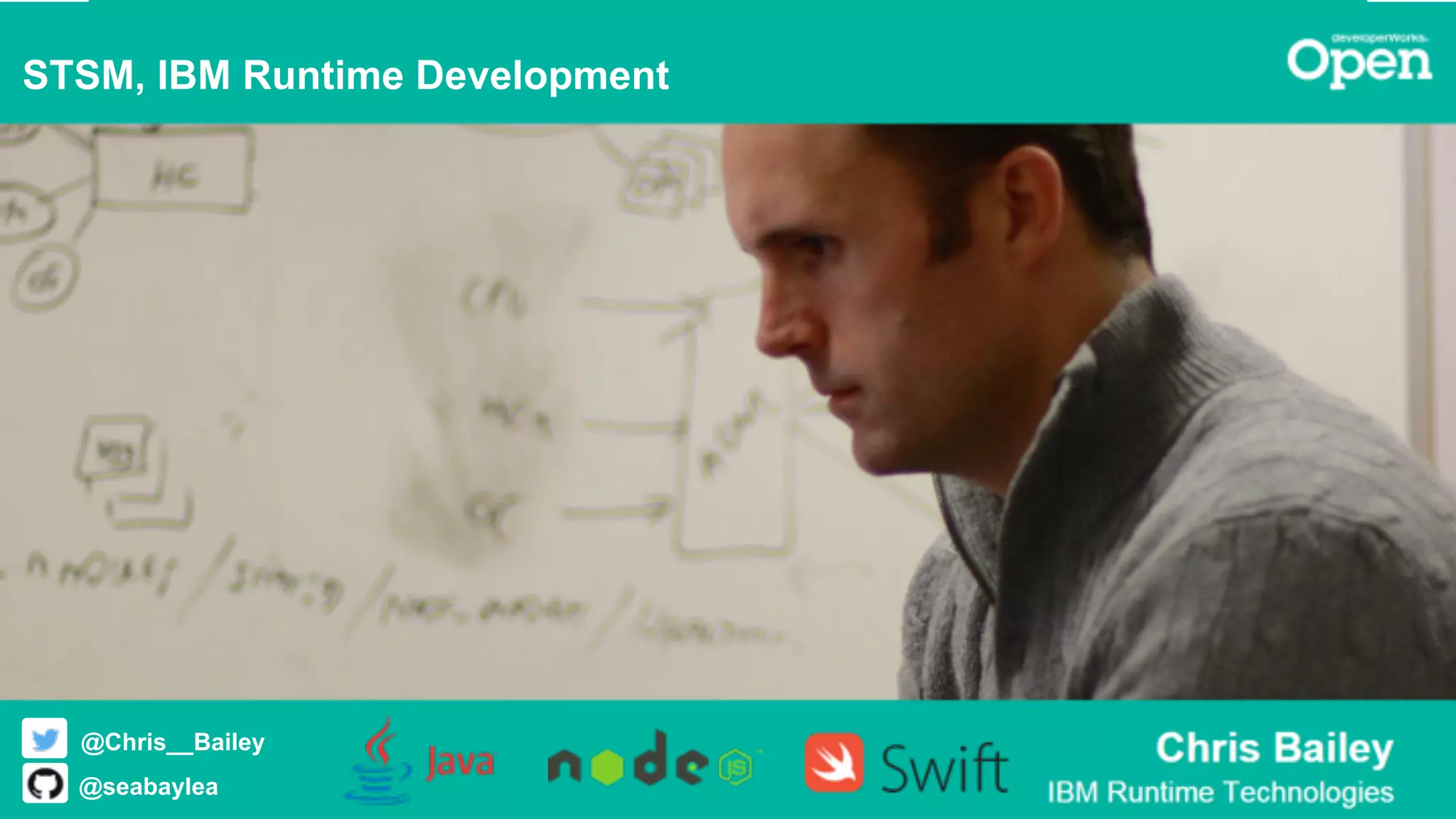
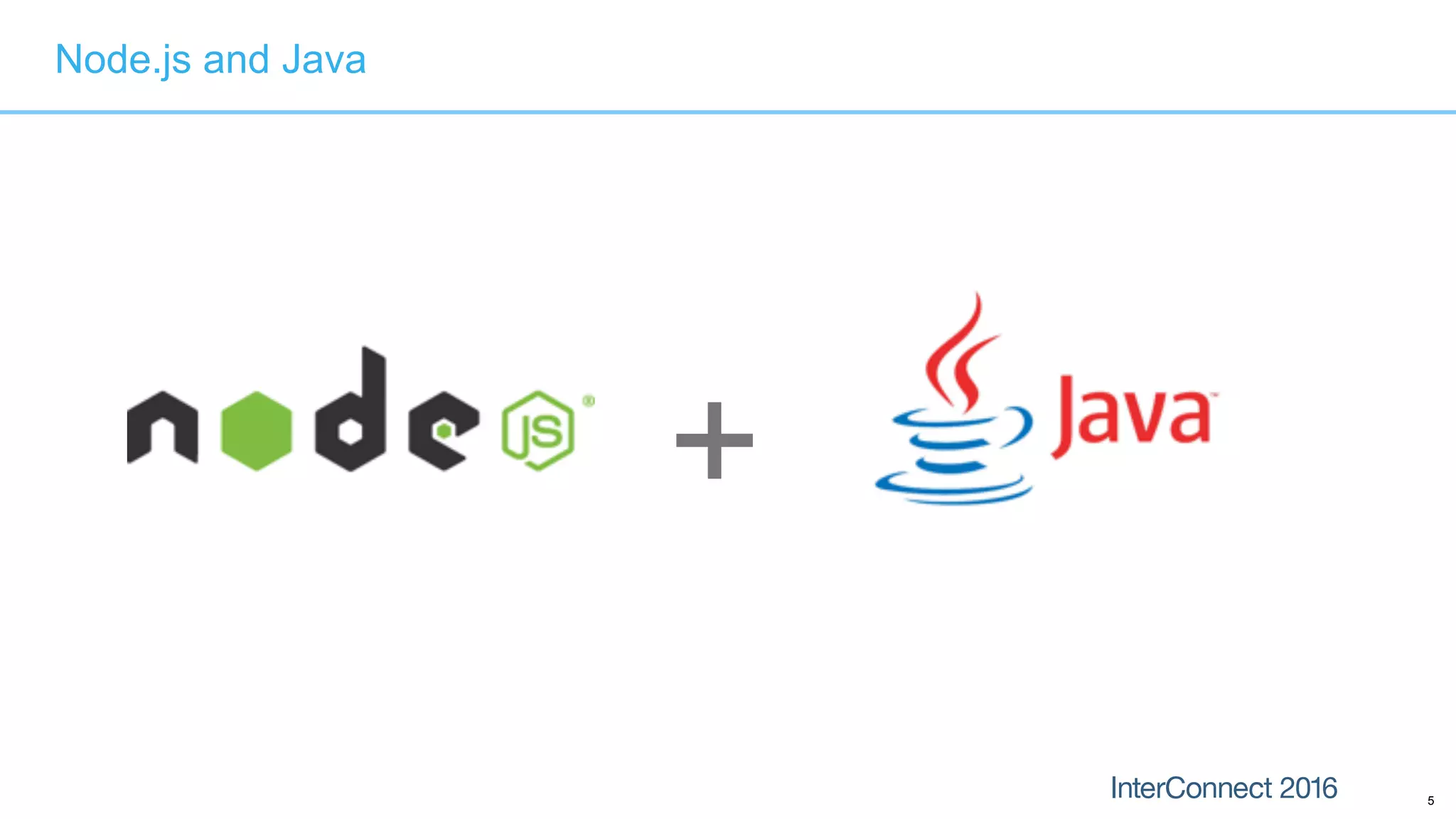
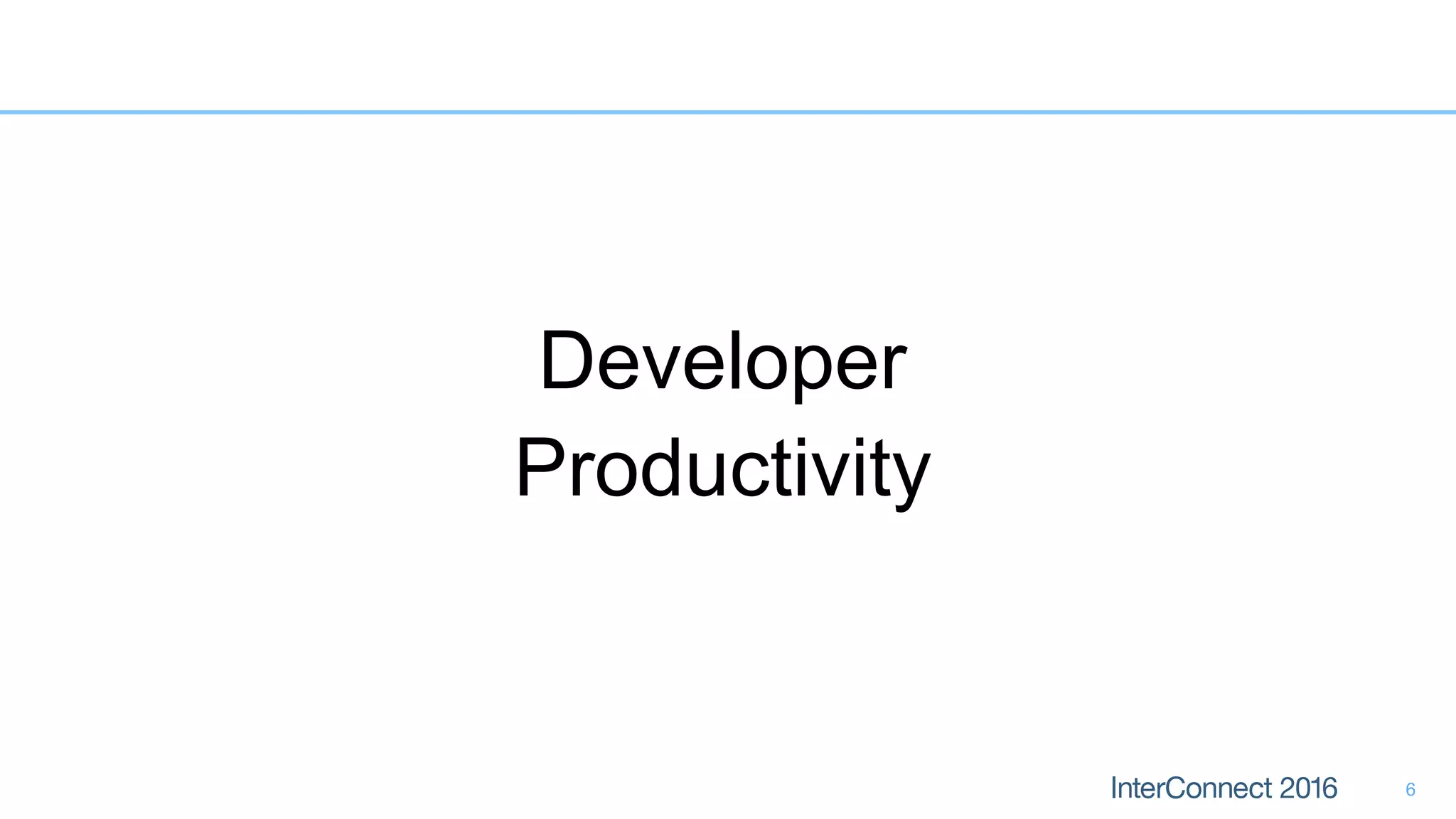
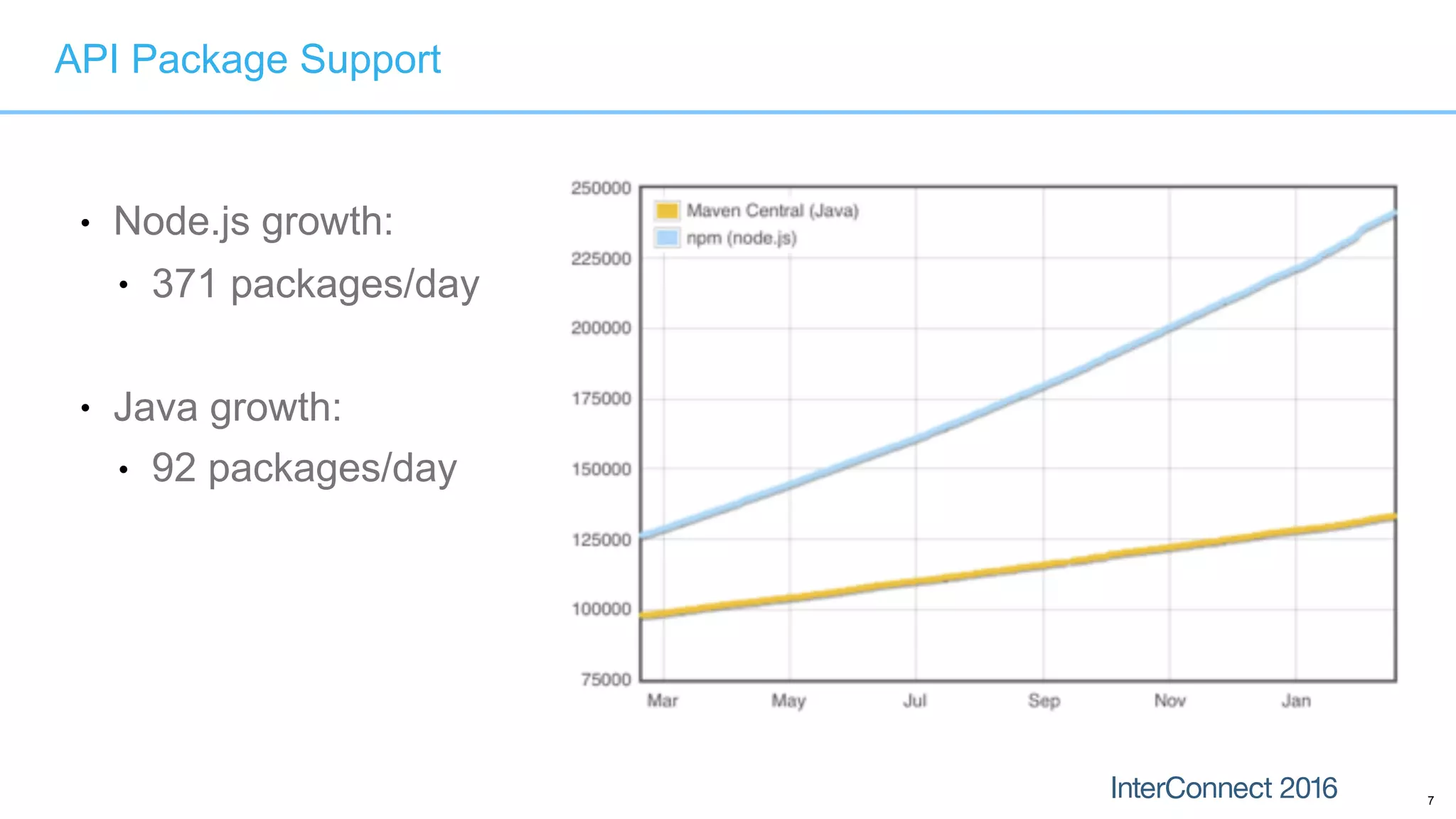
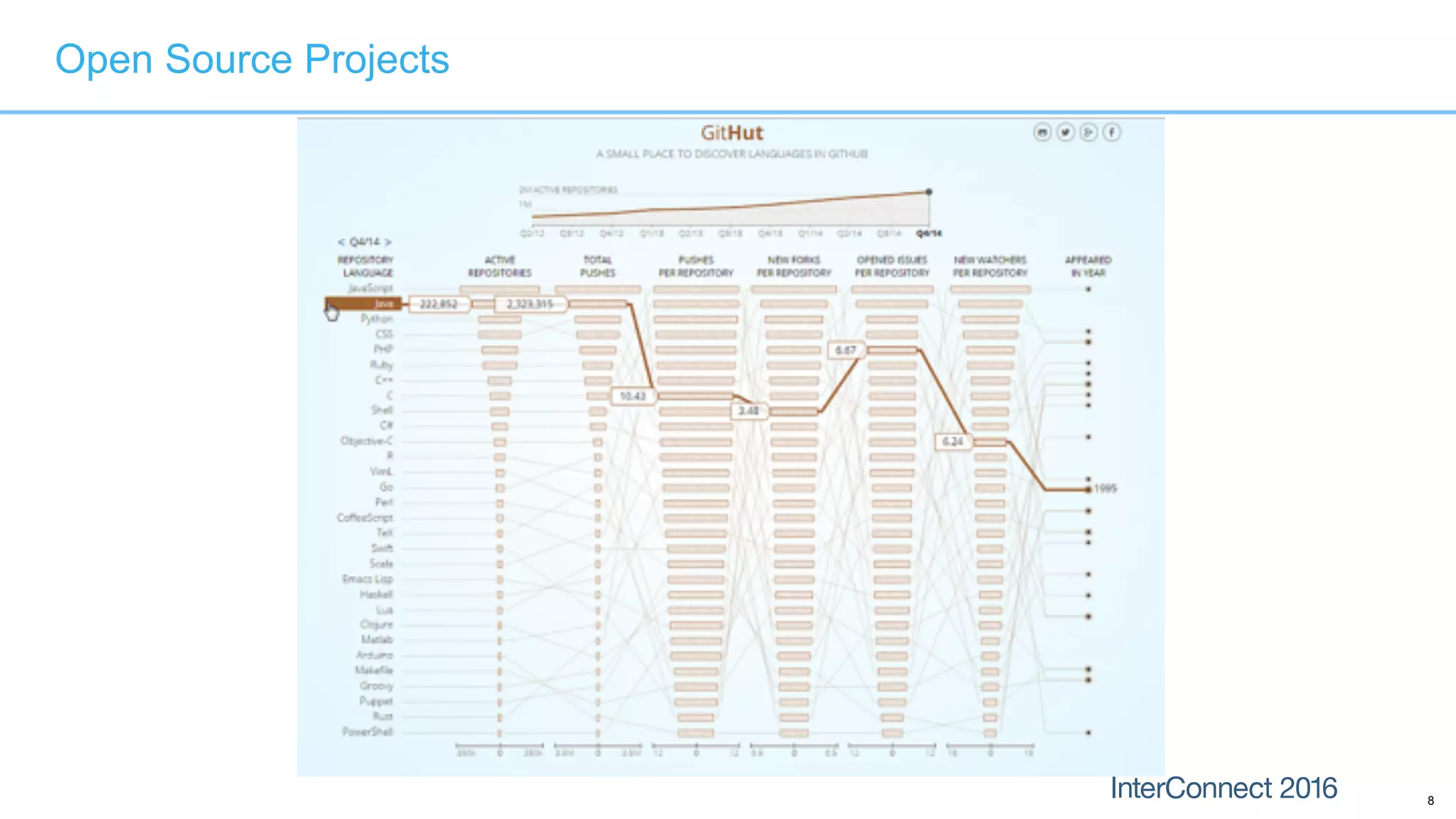
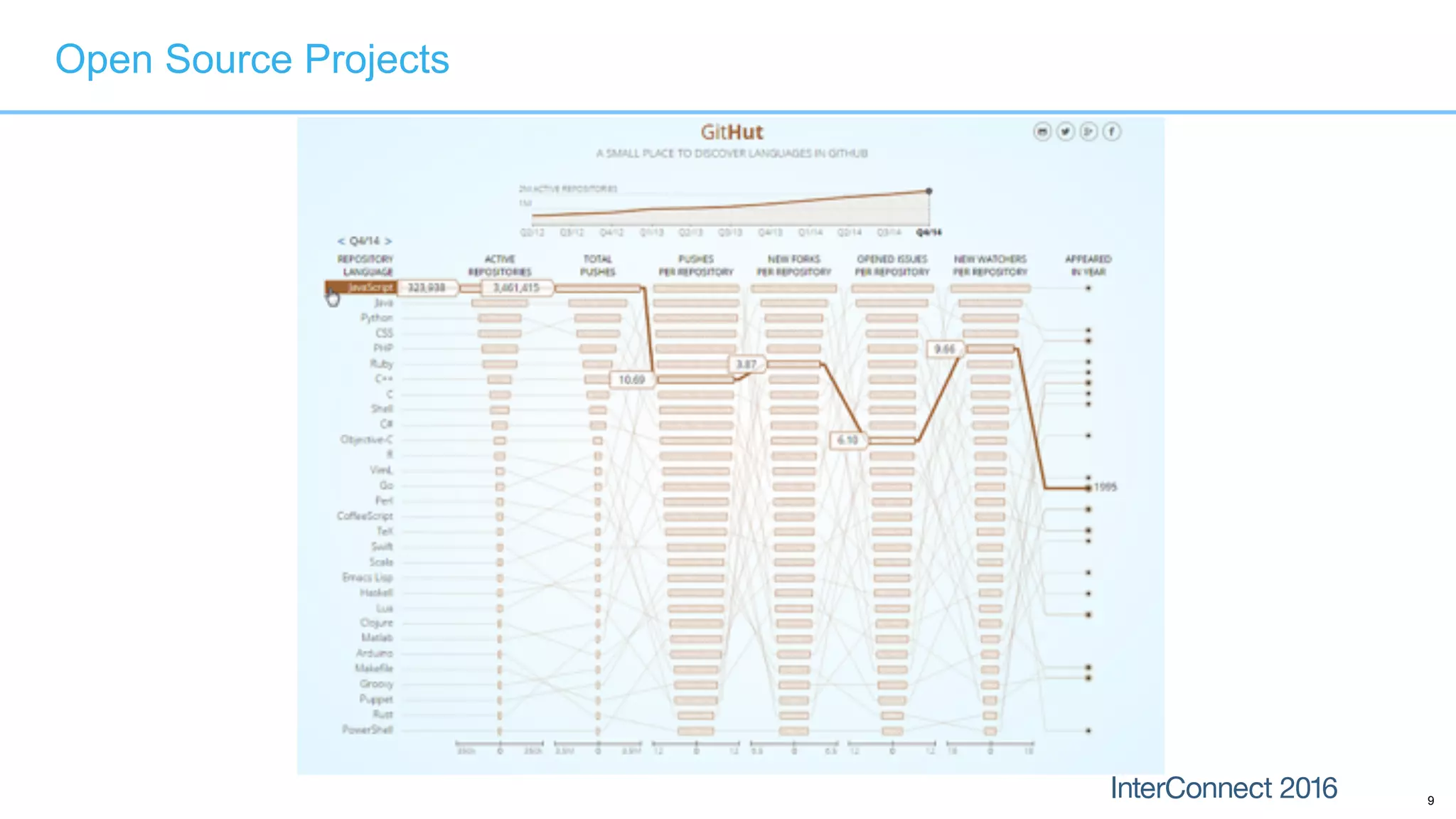
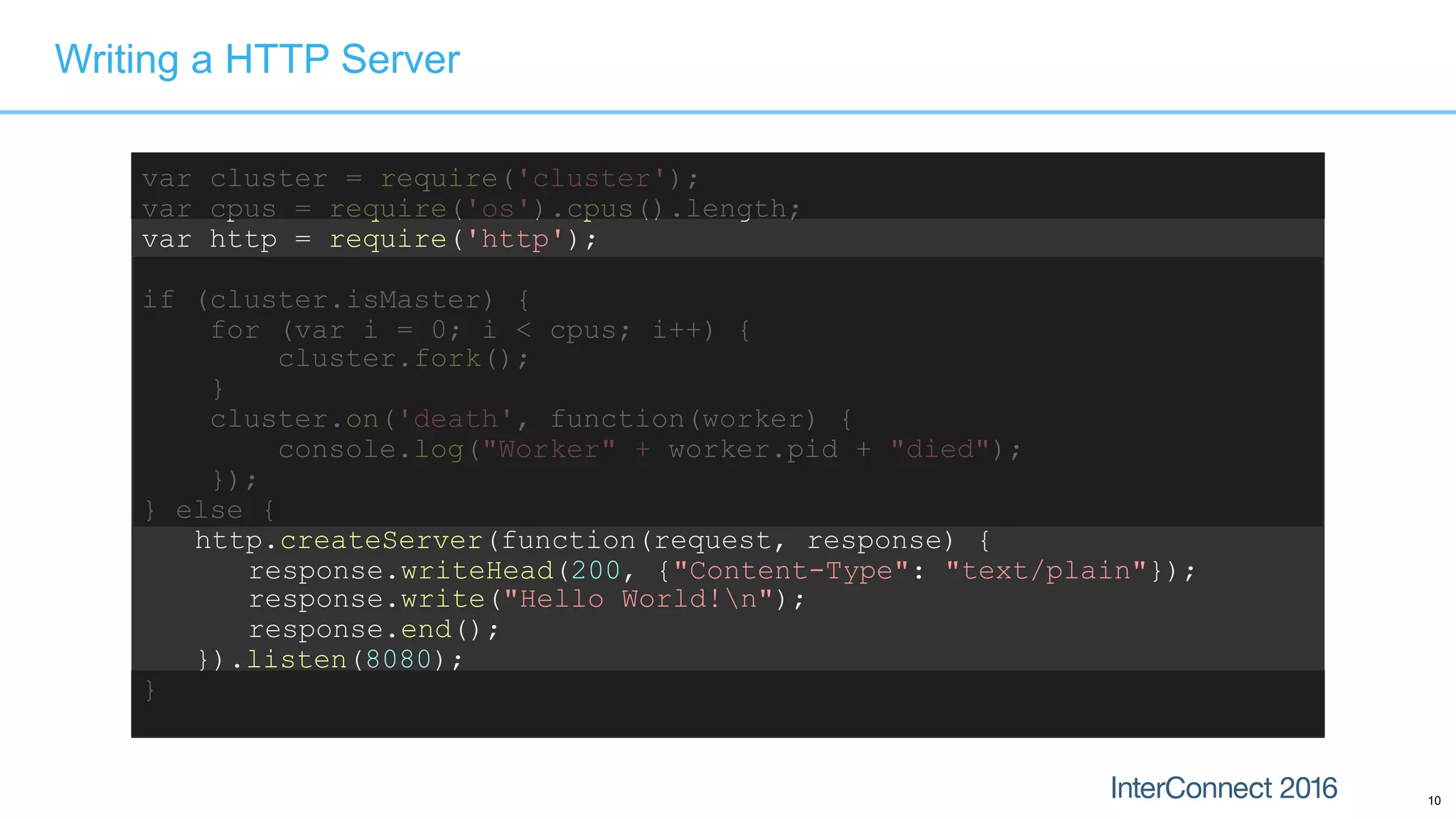
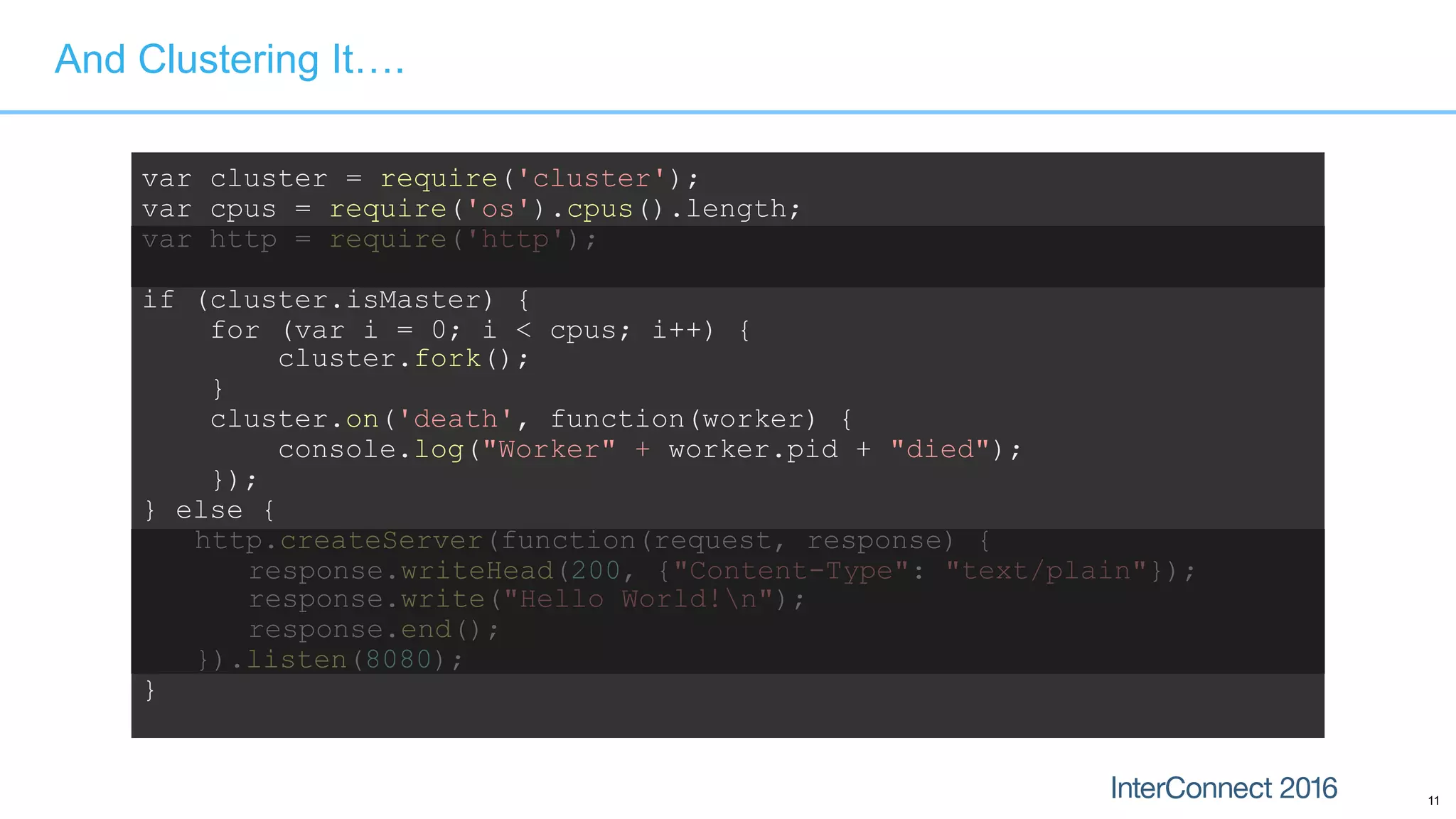
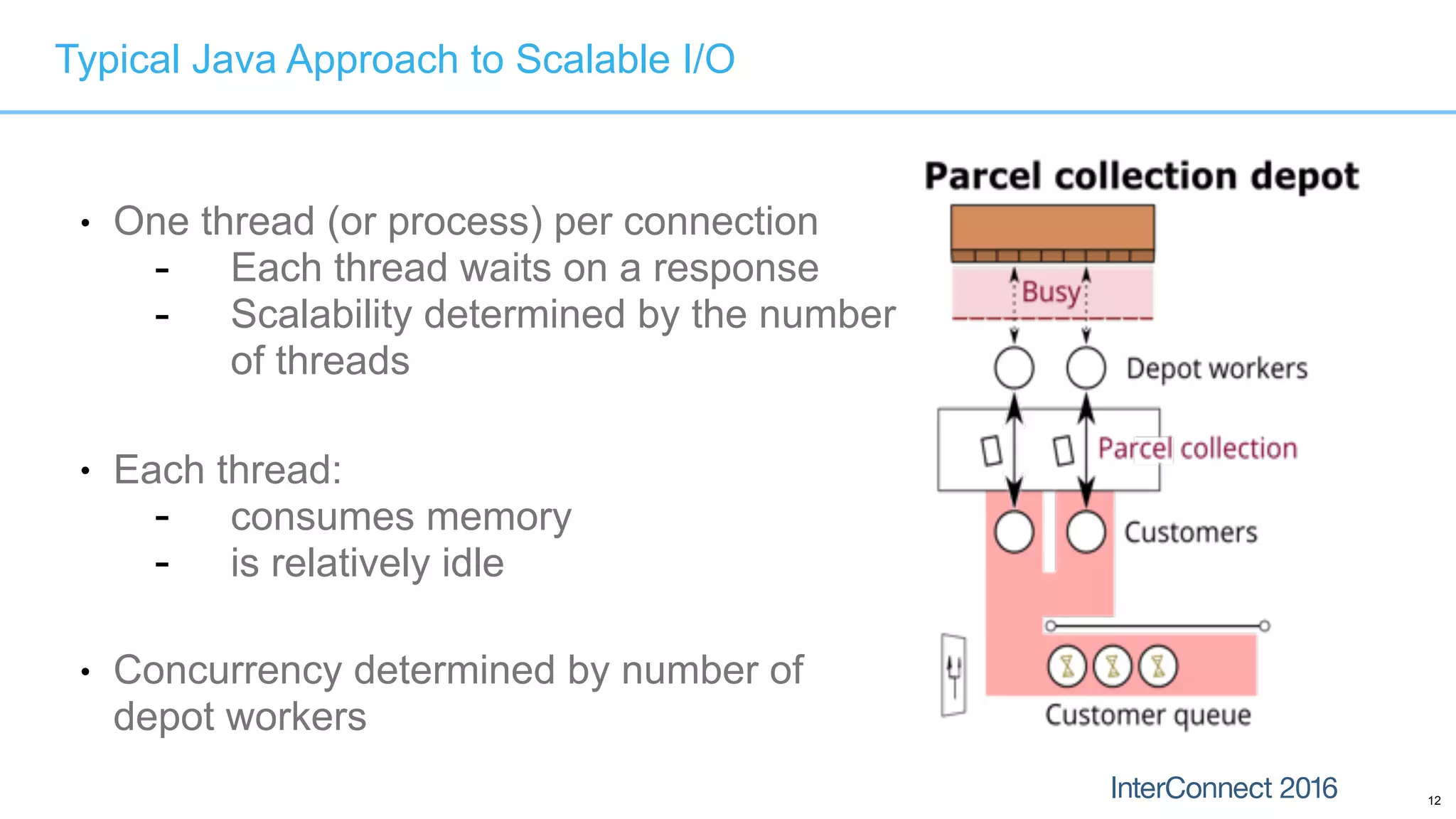
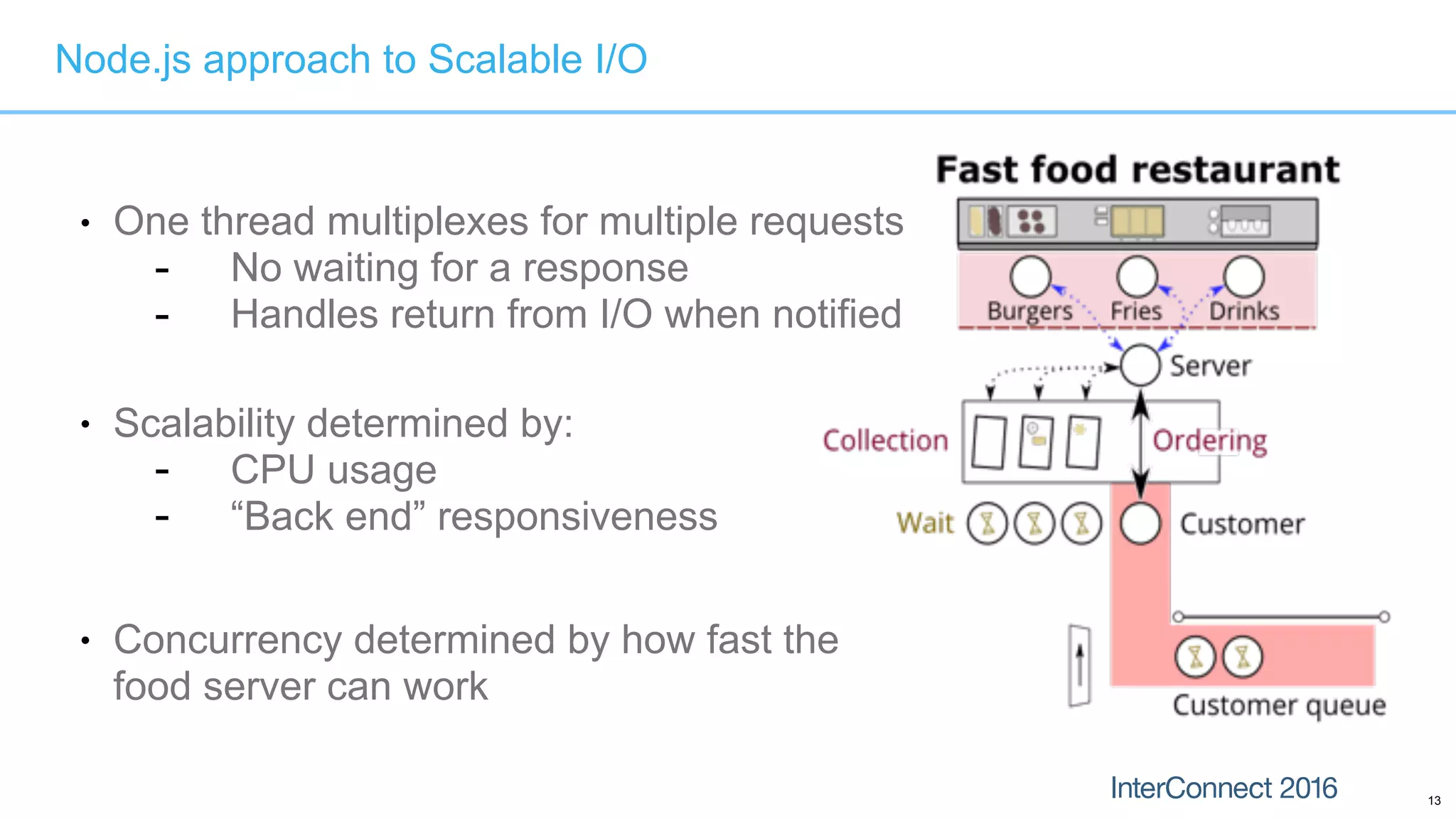
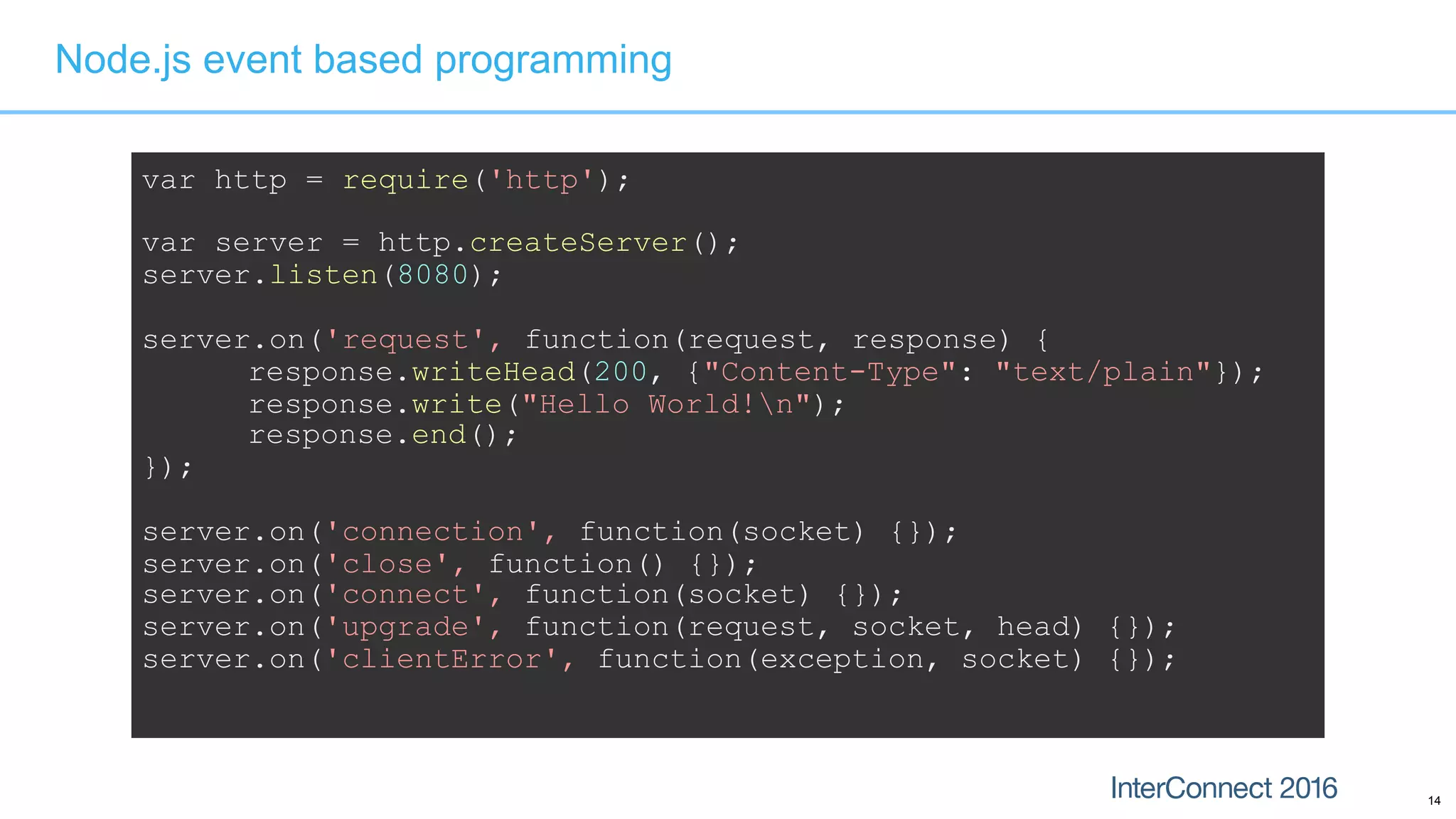
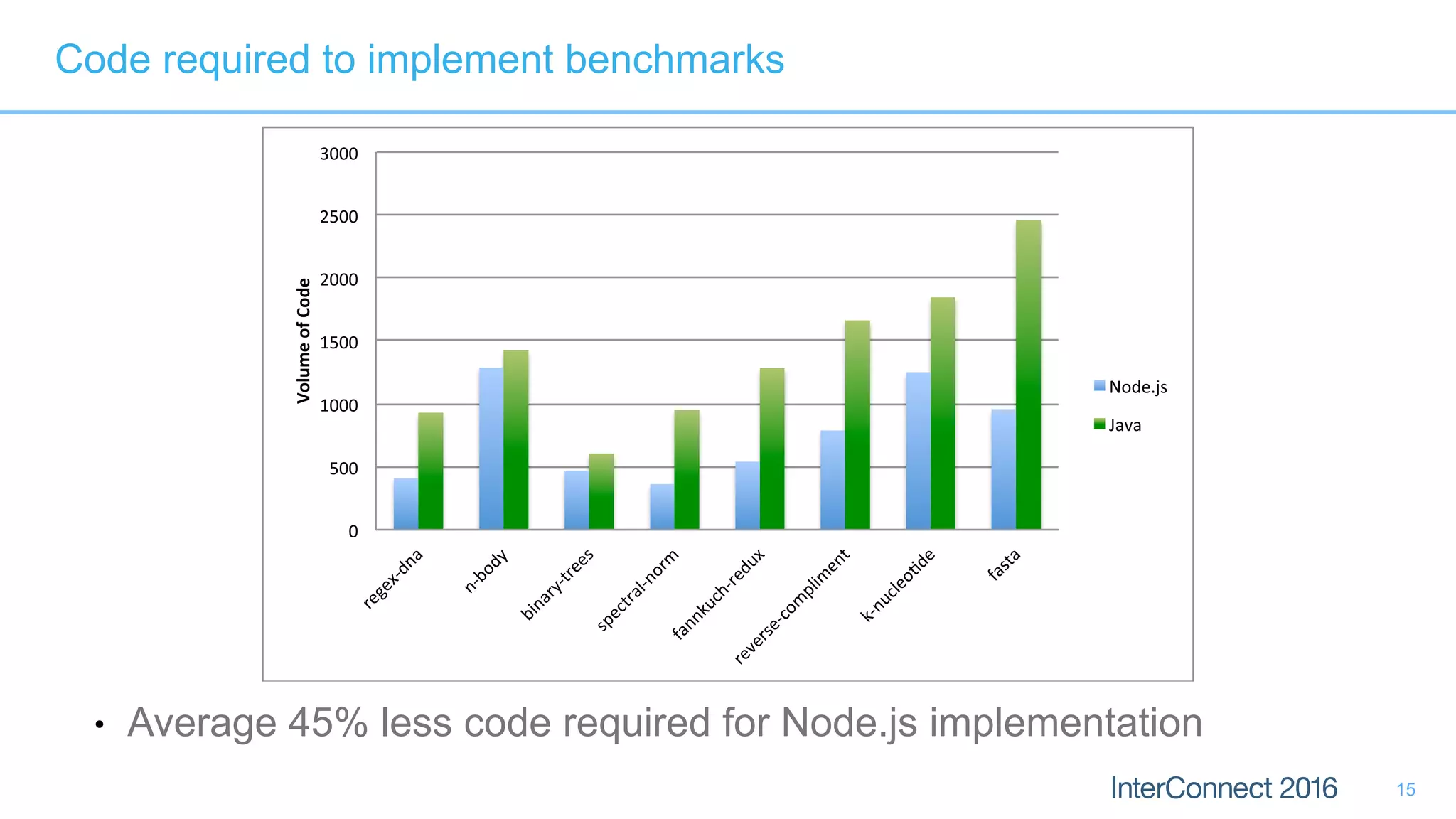
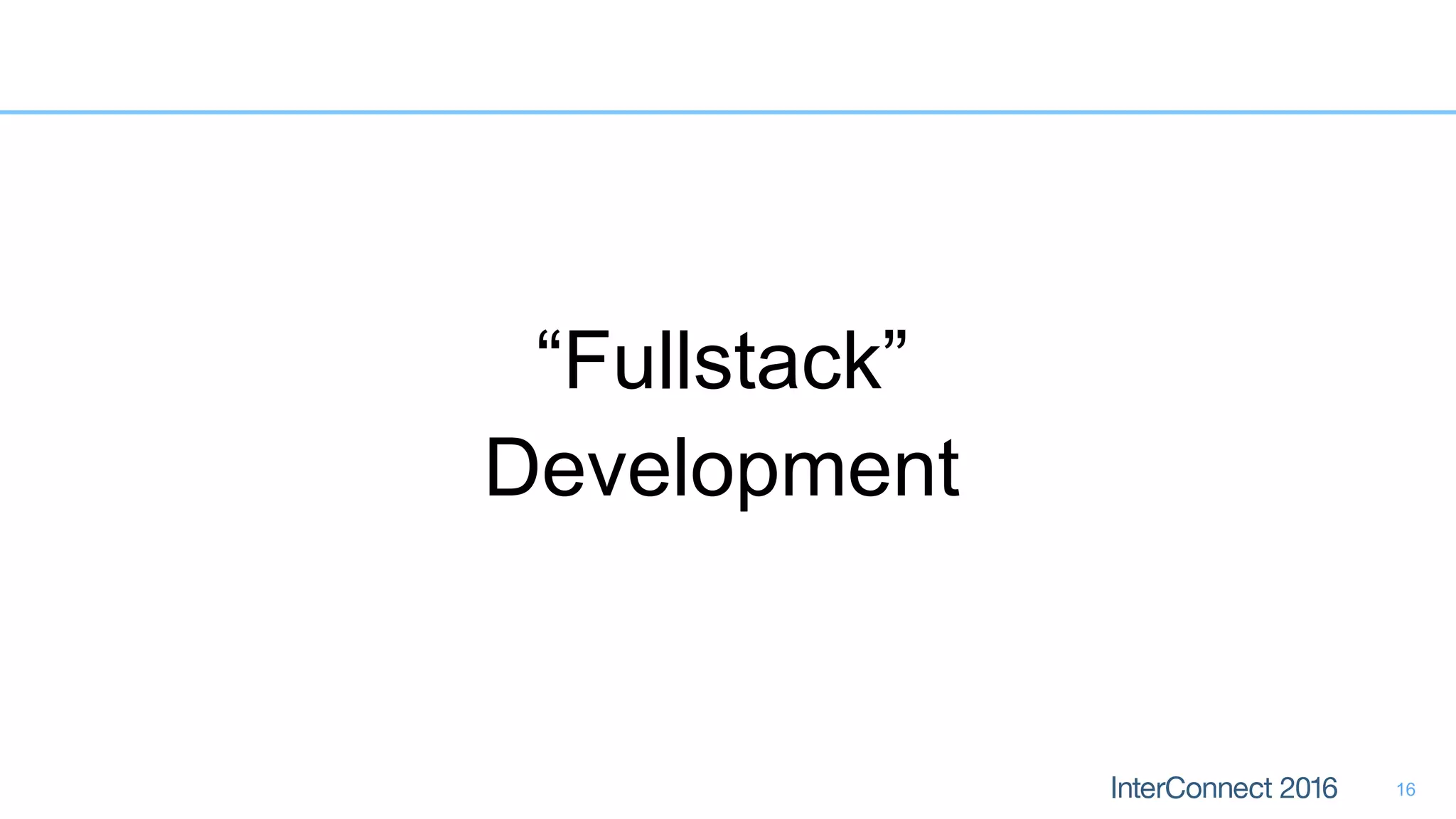
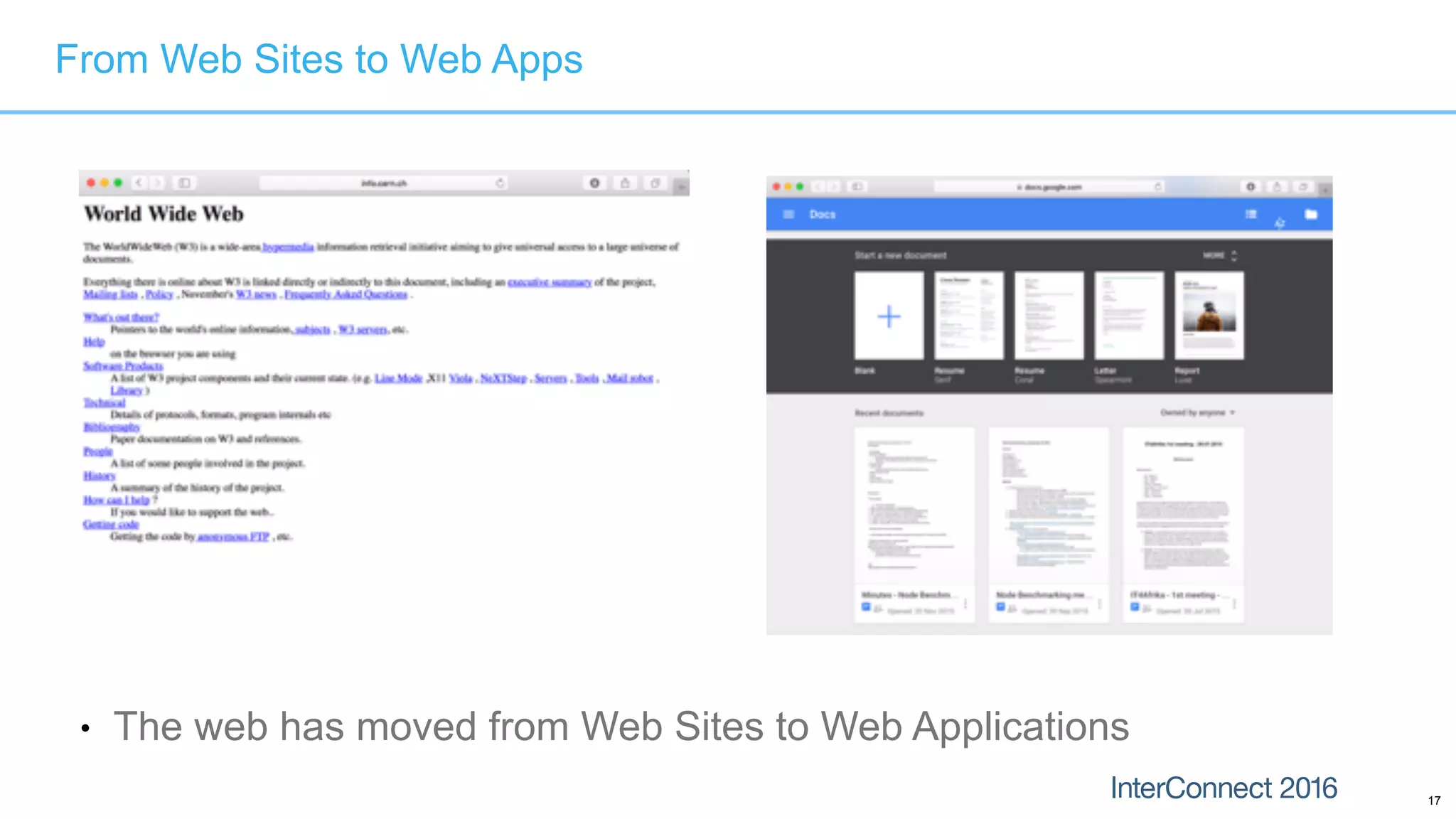
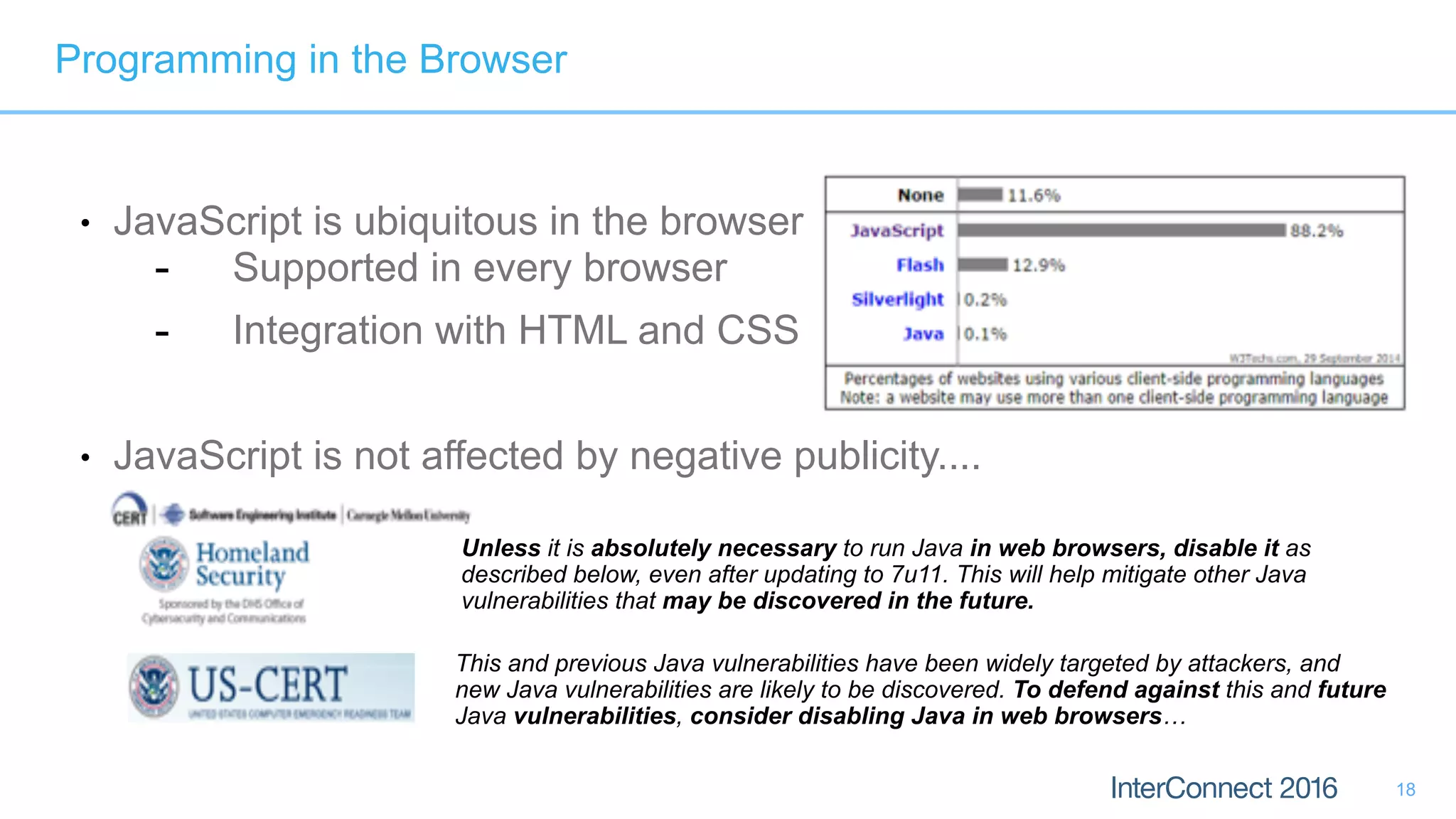
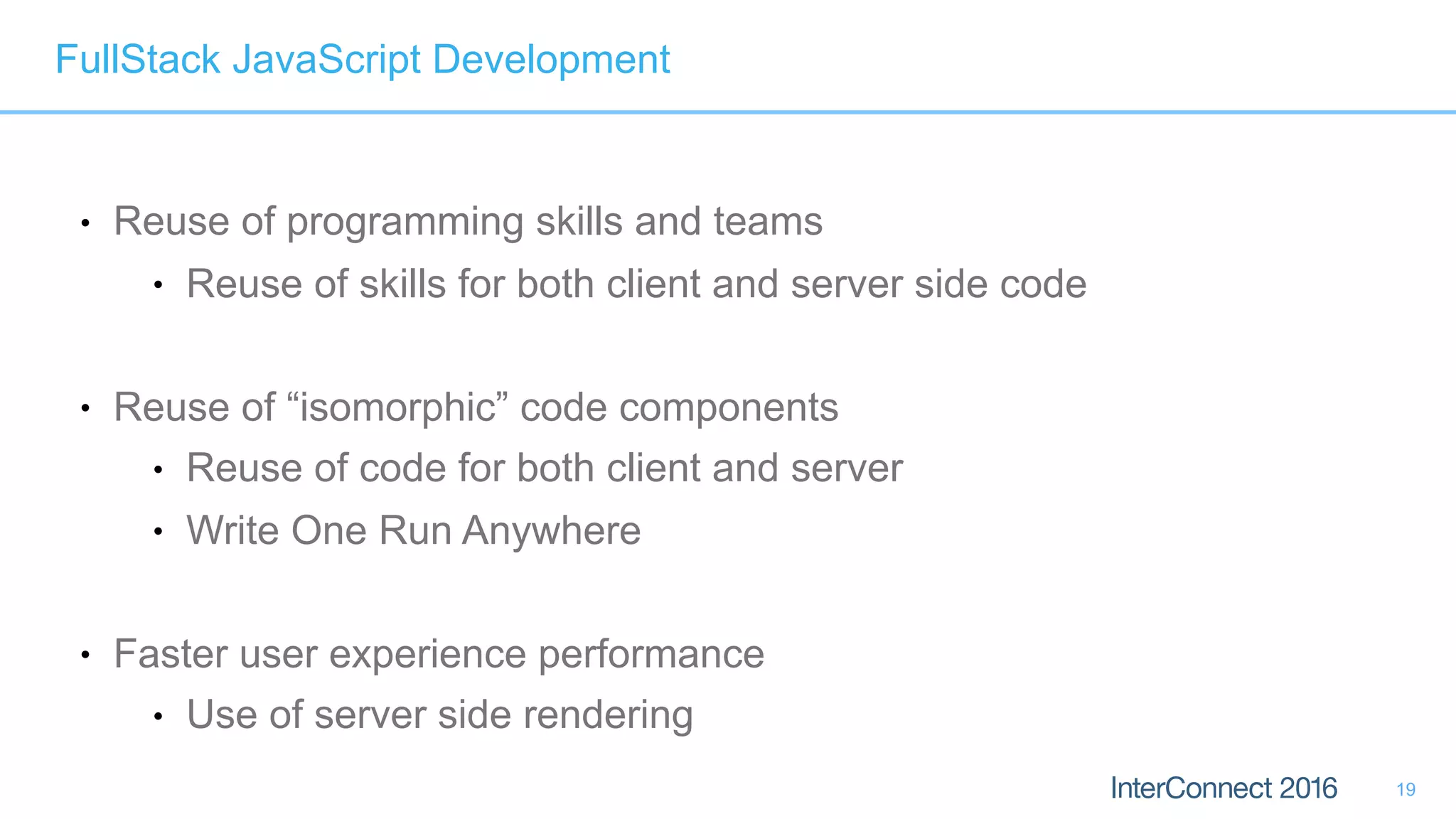
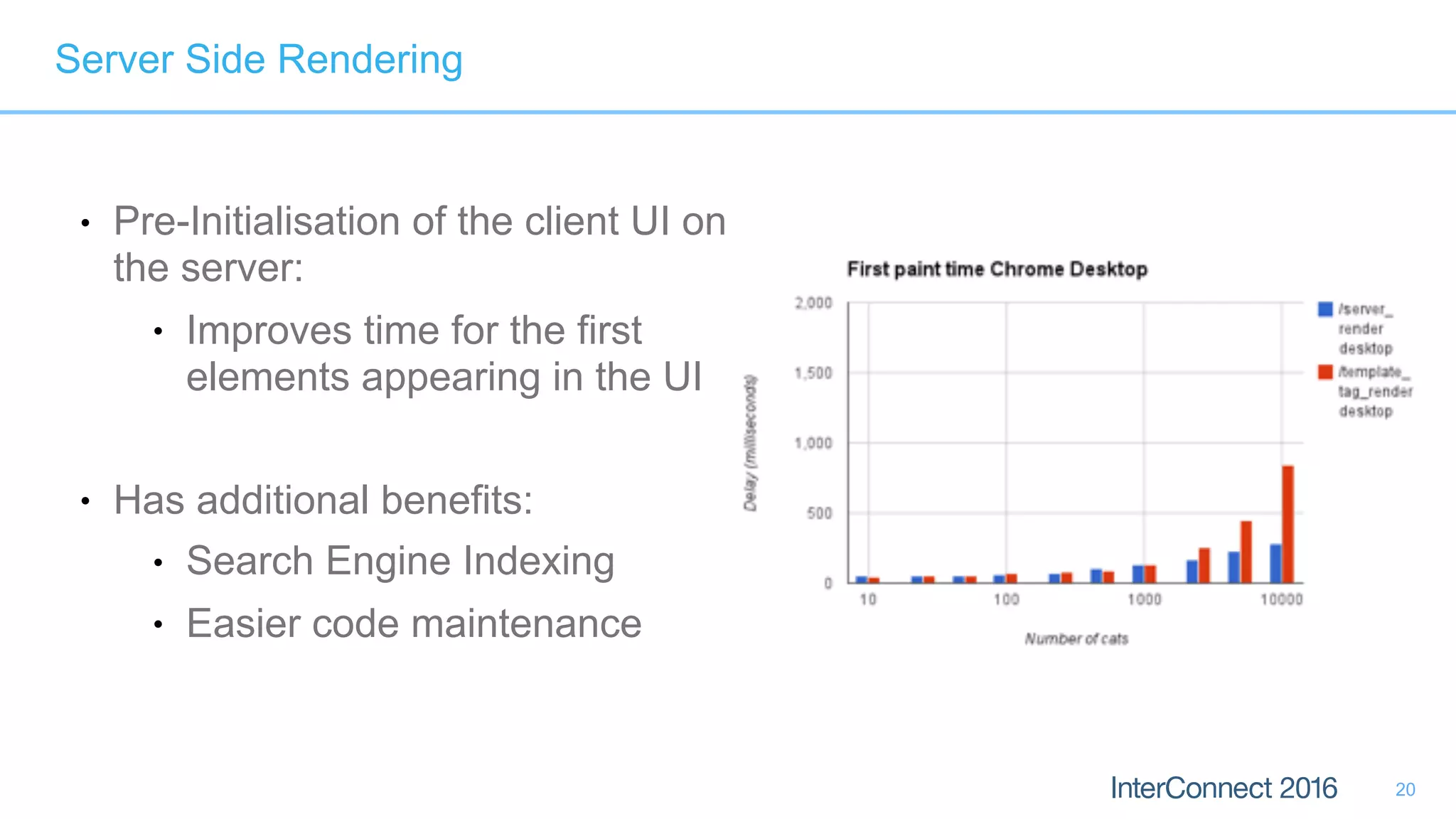
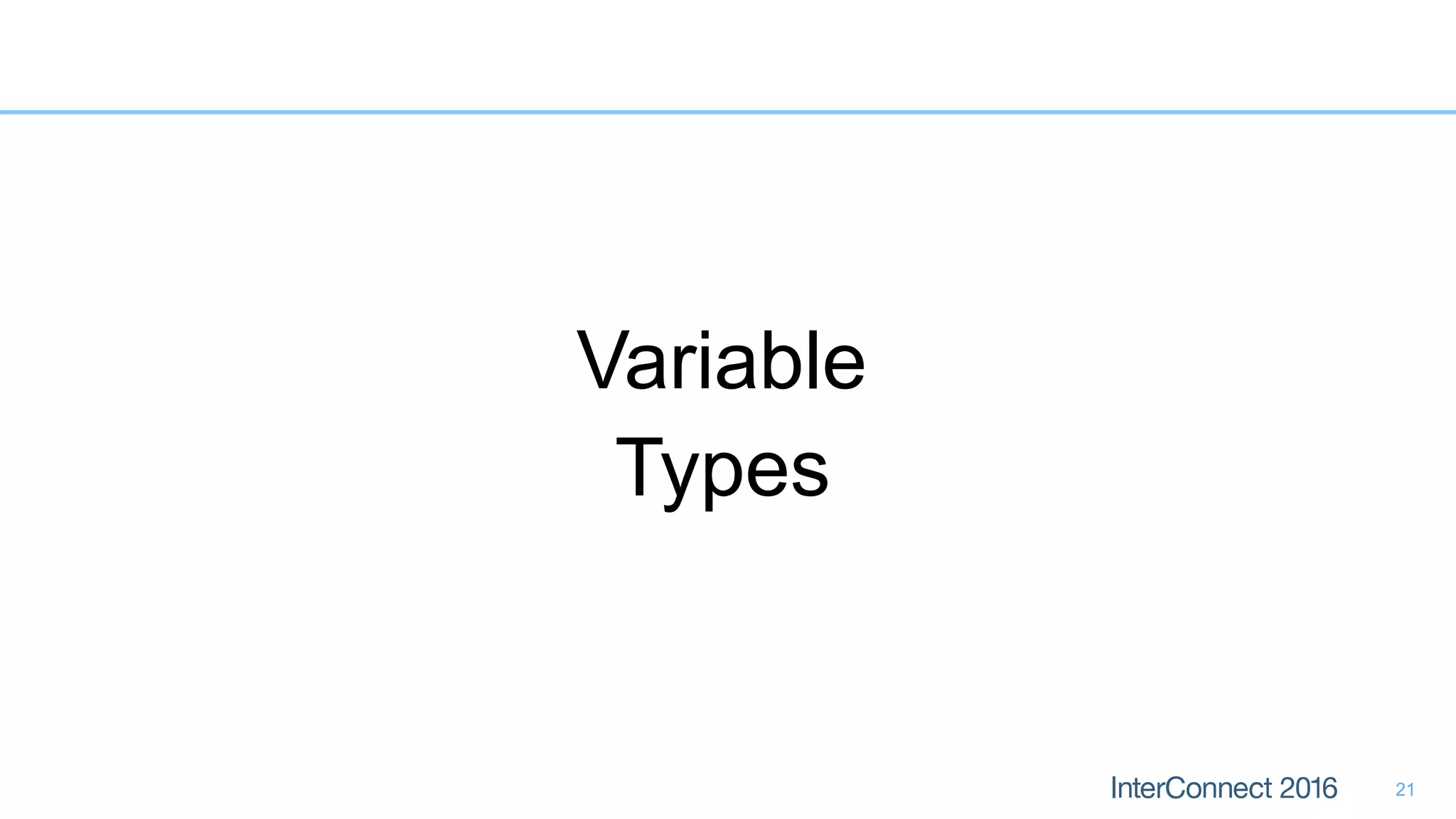
![22 Simple Calculation: 5 + 3 private static void add (int a, int b){ System.out.println(a + b); } public static void main(String[] args){ int a = 5; int b = 3; add(a, b); } > javac app.java > java app > 8 var add = function (a, b) { console.log(a + b); } var a = 5; var b = 3; add(a, b); > node app.js > 8](https://image.slidesharecdn.com/interconnect2016webapparchitectures-160225001152/75/InterConnect2016-WebApp-Architectures-with-Java-and-Node-js-22-2048.jpg)
![23 Simple Calculation: 5 + 3 private static void add (int a, int b){ System.out.println(a + b); } public static void main(String[] args){ int a = 5; int b = 3; add(a, b); } > javac app.java > java app > 8 var add = function (a, b) { console.log(a + b); } var a = 5; var b = 3; add(a, b); > node app.js > 8](https://image.slidesharecdn.com/interconnect2016webapparchitectures-160225001152/75/InterConnect2016-WebApp-Architectures-with-Java-and-Node-js-23-2048.jpg)
![24 Simple Calculation: 5 + 3 private static void add (int a, int b){ System.out.println(a + b); } public static void main(String[] args){ int a = 5; int b = 3; add(a, b); } > javac app.java > java app > 8 var add = function (a, b) { console.log(a + b); } var a = 5; var b = 3; add(a, b); > node app.js > 8](https://image.slidesharecdn.com/interconnect2016webapparchitectures-160225001152/75/InterConnect2016-WebApp-Architectures-with-Java-and-Node-js-24-2048.jpg)
![25 Simple Calculation: 5 + 3 private static void add (int a, int b){ System.out.println(a + b); } public static void main(String[] args){ int a = 5; int b = 3; add(a, b); } > javac app.java > java app > 8 var add = function (a, b) { console.log(a + b); } var a = 5; var b = 3; add(a, b); > node app.js > 8](https://image.slidesharecdn.com/interconnect2016webapparchitectures-160225001152/75/InterConnect2016-WebApp-Architectures-with-Java-and-Node-js-25-2048.jpg)
![26 Simple Calculation: 5 + 3 private static void add (int a, int b){ System.out.println(a + b); } public static void main(String[] args){ int a = 5; int b = 3; add(a, b); } > javac app.java > java app > 8 var add = function (a, b) { console.log(a + b); } var a = 5; var b = 3; add(a, b); > node app.js > 8](https://image.slidesharecdn.com/interconnect2016webapparchitectures-160225001152/75/InterConnect2016-WebApp-Architectures-with-Java-and-Node-js-26-2048.jpg)
![27 Simple Calculation: 5 + 3 private static void add (int a, int b){ System.out.println(a + b); } public static void main(String[] args){ String a = new String(“5”); int b = 3; add(a, b); } > javac app.java > java app > 8 var add = function (a, b) { console.log(a + b); } var a = ‘5’; var b = 3; add(a, b); > node app.js > 8](https://image.slidesharecdn.com/interconnect2016webapparchitectures-160225001152/75/InterConnect2016-WebApp-Architectures-with-Java-and-Node-js-27-2048.jpg)
![28 Simple Calculation: 5 + 3 private static void add (int a, int b){ System.out.println(a + b); } public static void main(String[] args){ String a = new String(“5”); int b = 3; add(a, b); } > javac app.java > java app > 8 var add = function (a, b) { console.log(a + b); } var a = ‘5’; var b = 3; add(a, b); > node app.js > 8](https://image.slidesharecdn.com/interconnect2016webapparchitectures-160225001152/75/InterConnect2016-WebApp-Architectures-with-Java-and-Node-js-28-2048.jpg)
![29 Simple Calculation: 5 + 3 private static void add (int a, int b){ System.out.println(a + b); } public static void main(String[] args){ String a = new String(“5”); int b = 3; add(a, b); } > javac app.java Error: incompatible types: String cannot be converted to int add(a, b); ^ var add = function (a, b) { console.log(a + b); } var a = ‘5’; var b = 3; add(a, b); > node app.js > 8](https://image.slidesharecdn.com/interconnect2016webapparchitectures-160225001152/75/InterConnect2016-WebApp-Architectures-with-Java-and-Node-js-29-2048.jpg)
![30 Simple Calculation: 5 + 3 private static void add (int a, int b){ System.out.println(a + b); } public static void main(String[] args){ String a = new String(“5”); int b = 3; add(a, b); } > javac app.java Error: incompatible types: String cannot be converted to int add(a, b); ^ var add = function (a, b) { console.log(a + b); } var a = ‘5’; var b = 3; add(a, b); > node app.js > 53](https://image.slidesharecdn.com/interconnect2016webapparchitectures-160225001152/75/InterConnect2016-WebApp-Architectures-with-Java-and-Node-js-30-2048.jpg)
